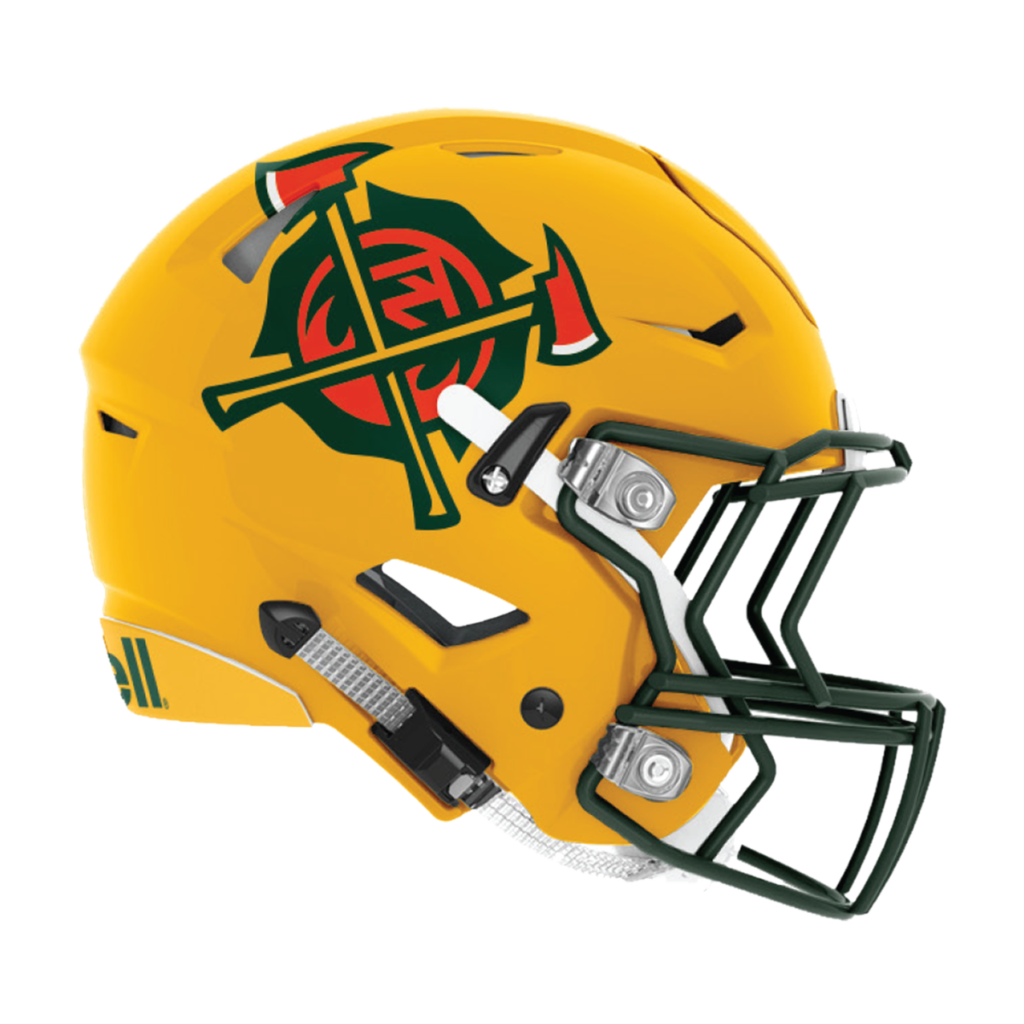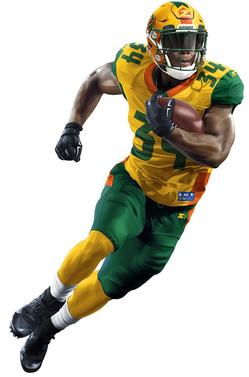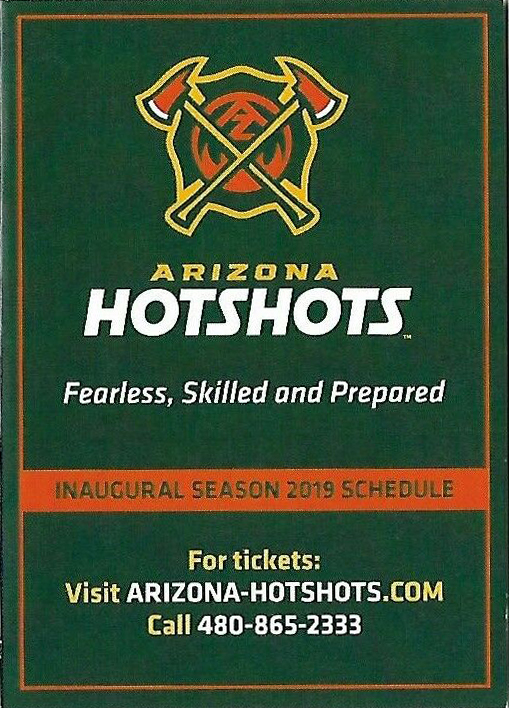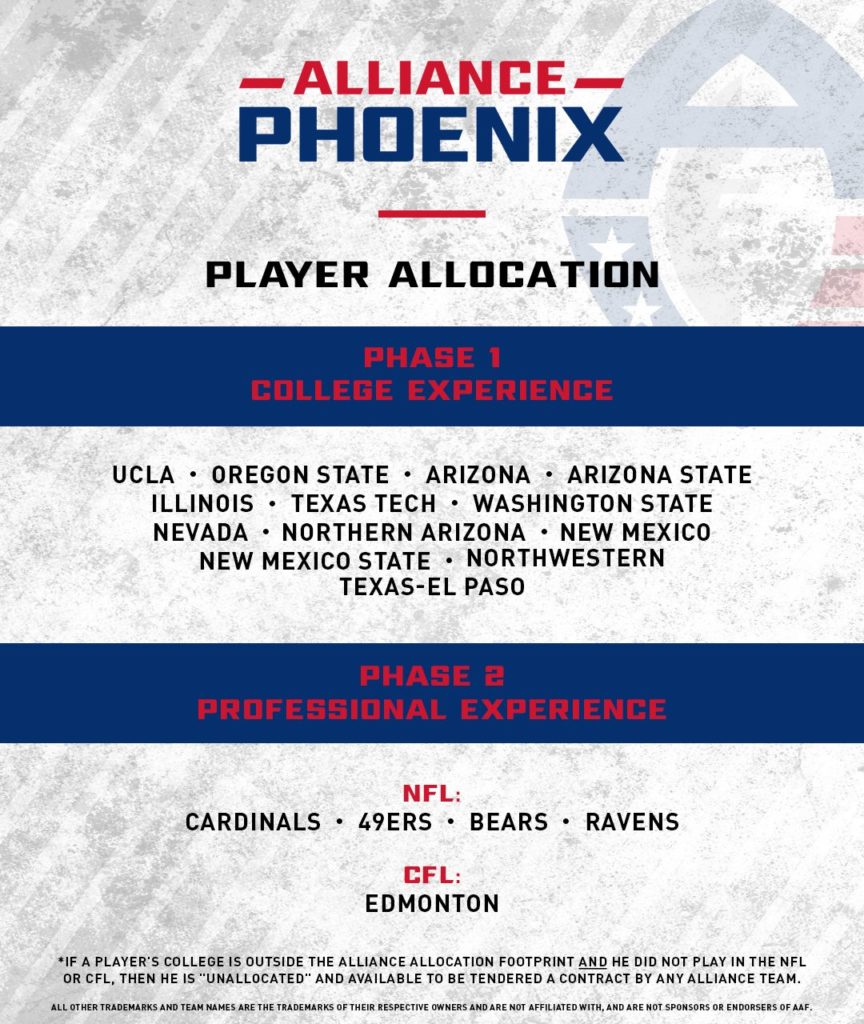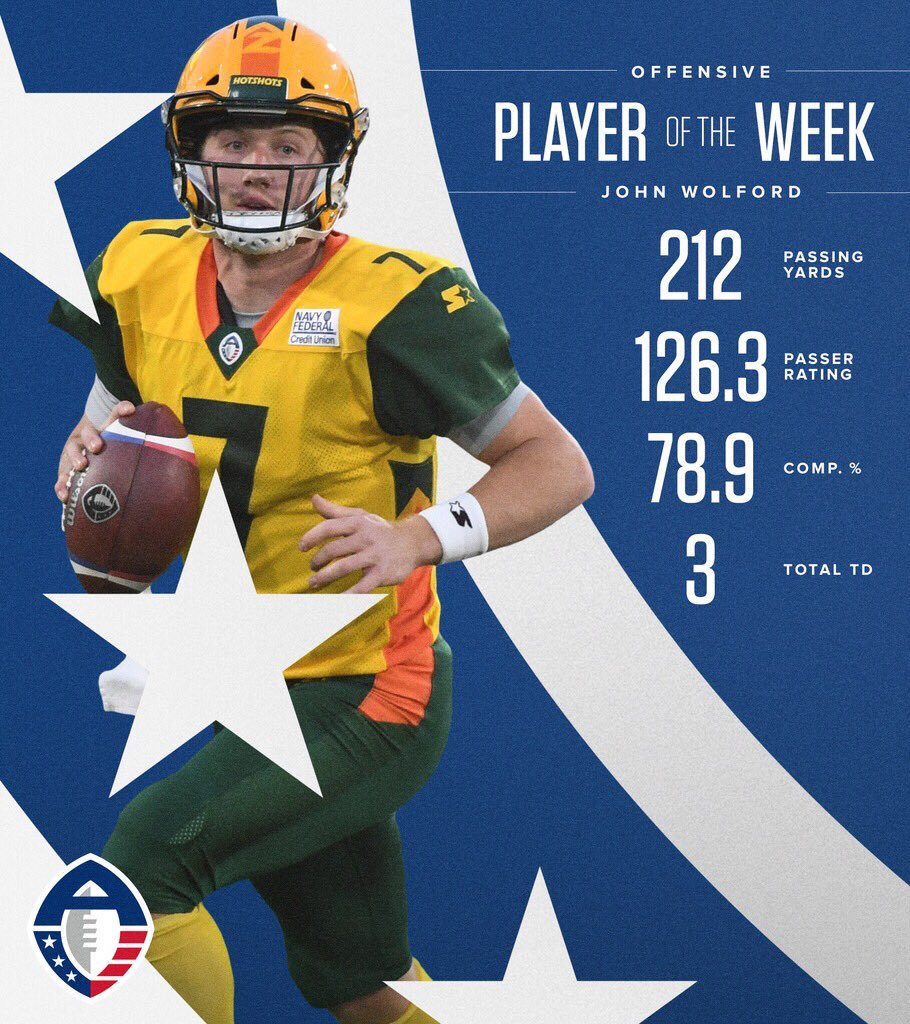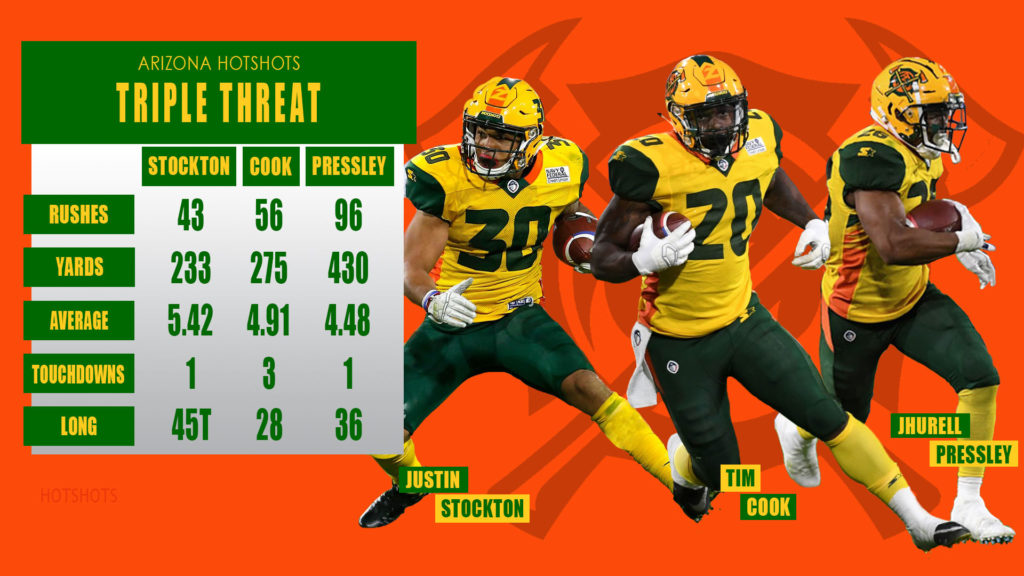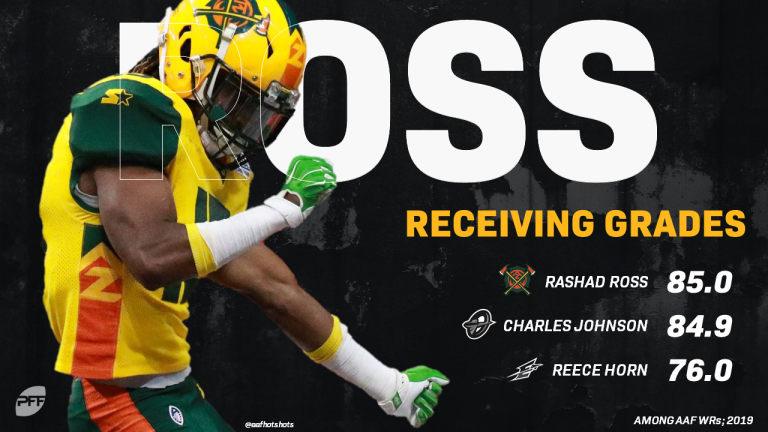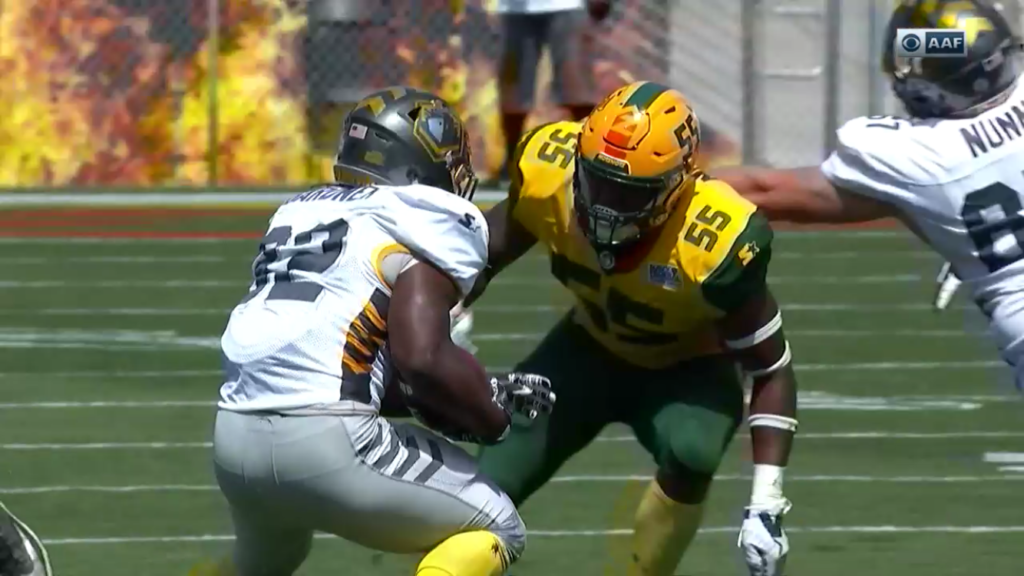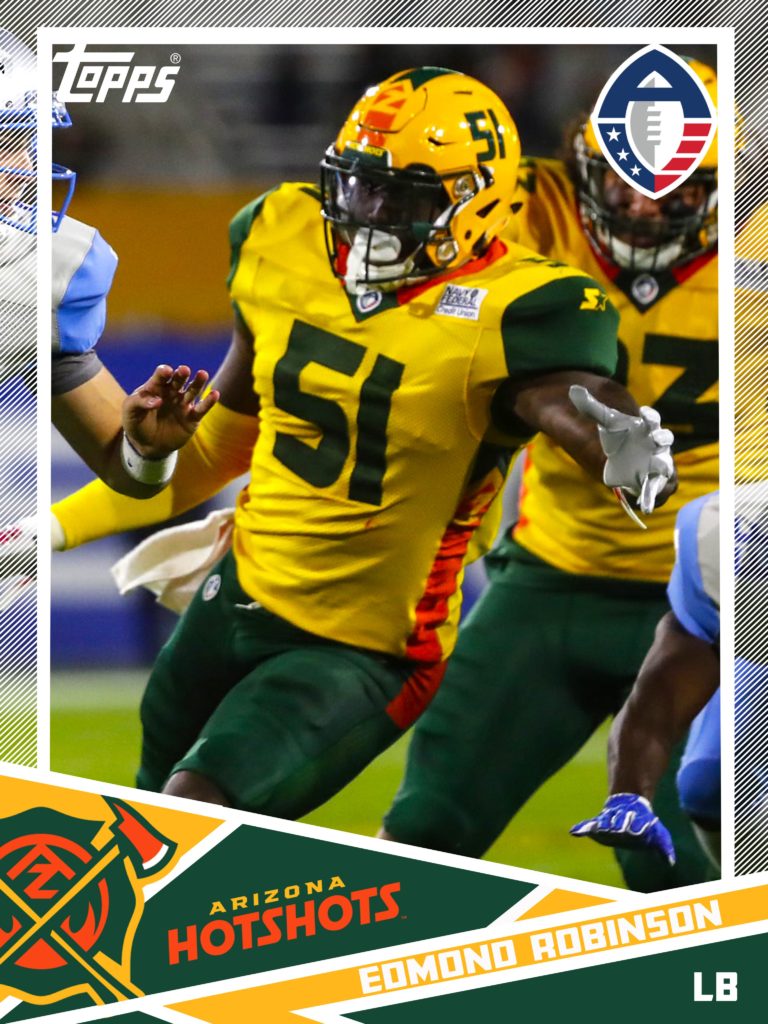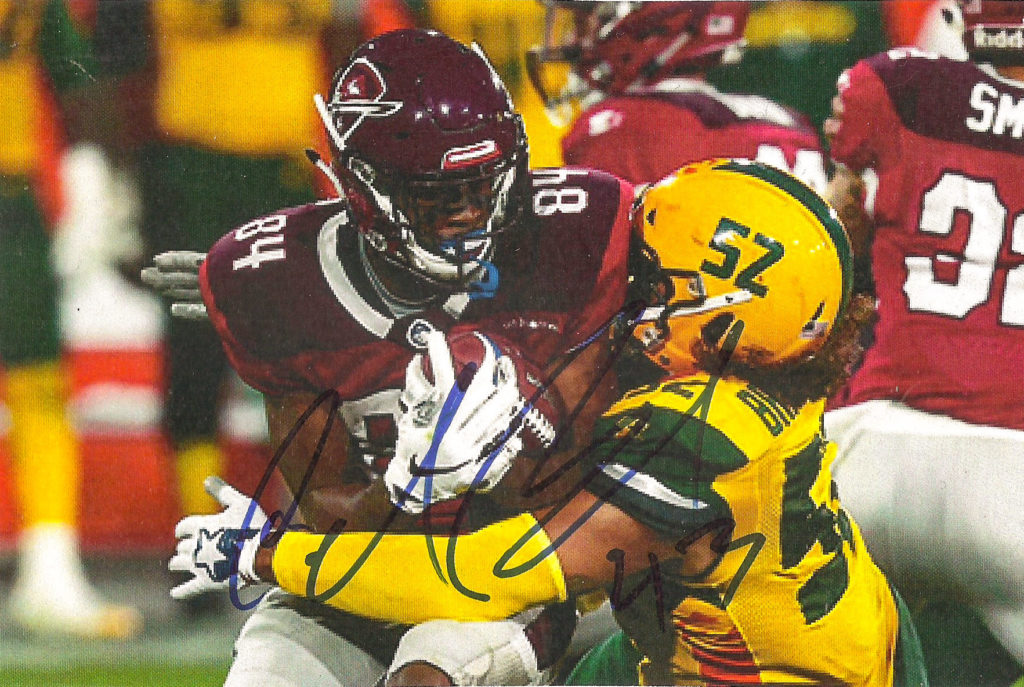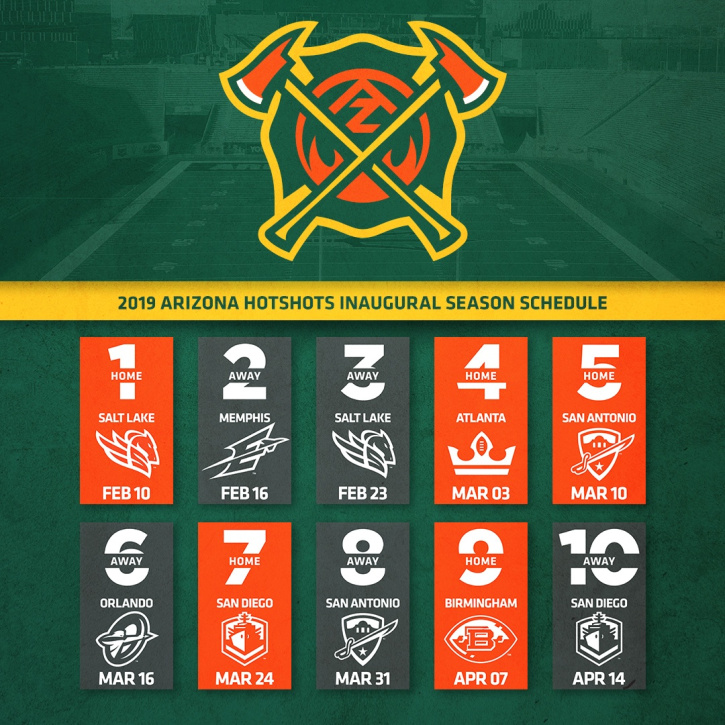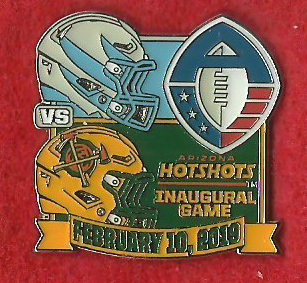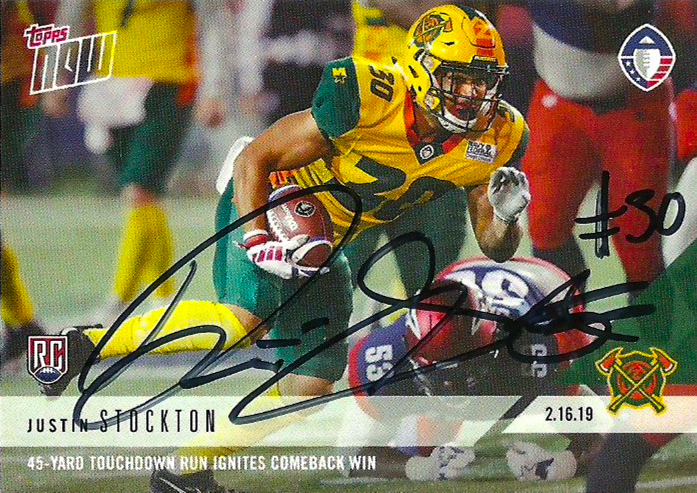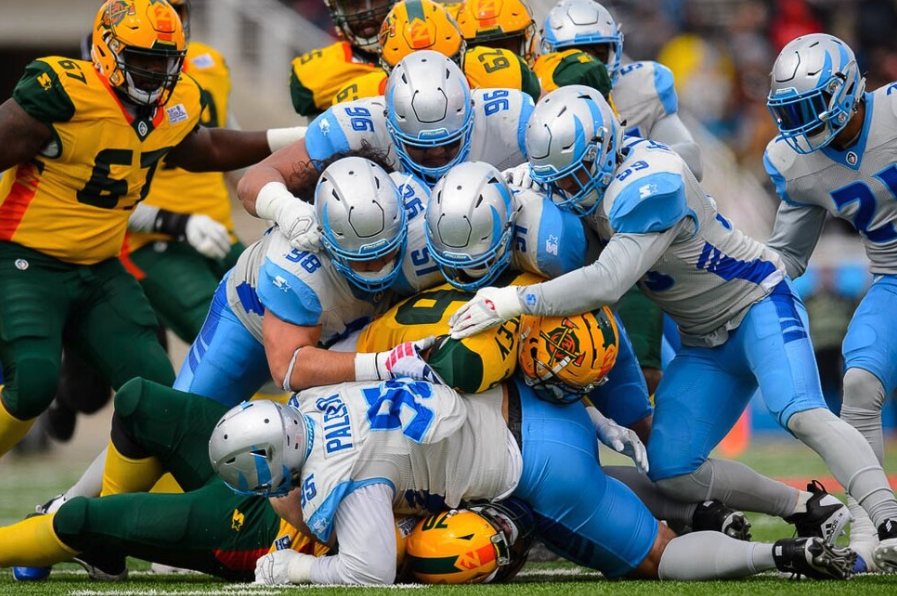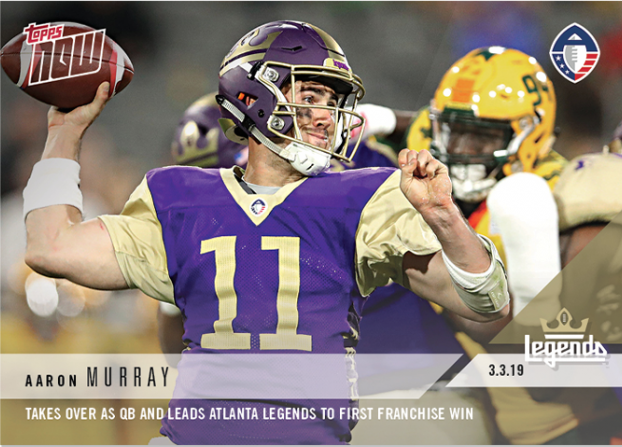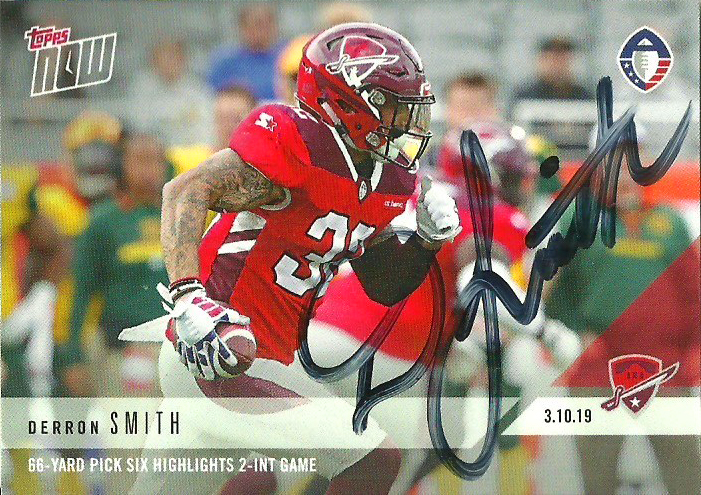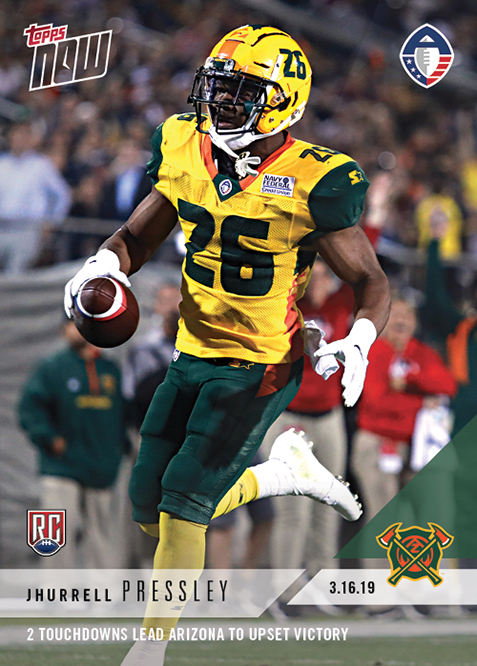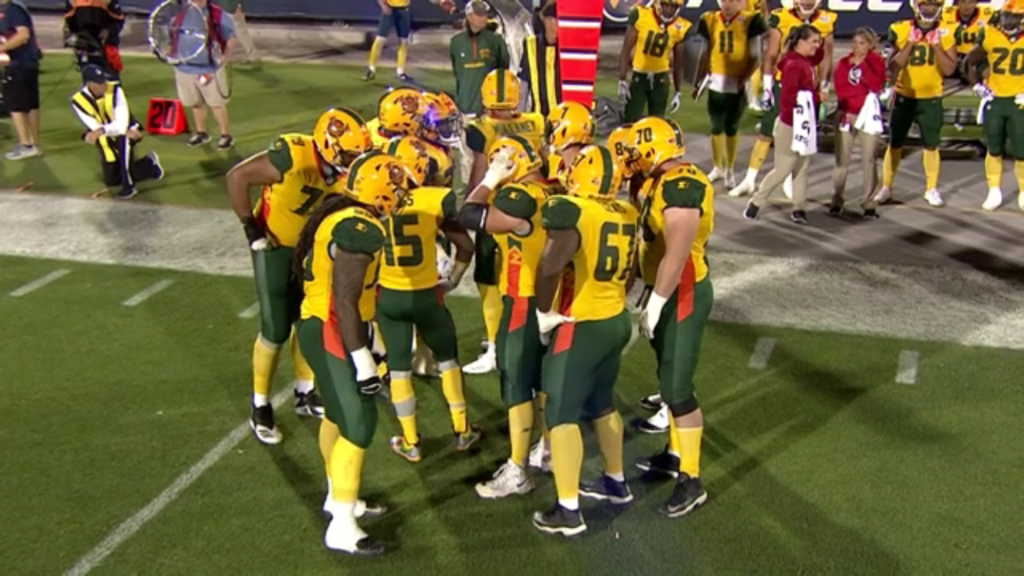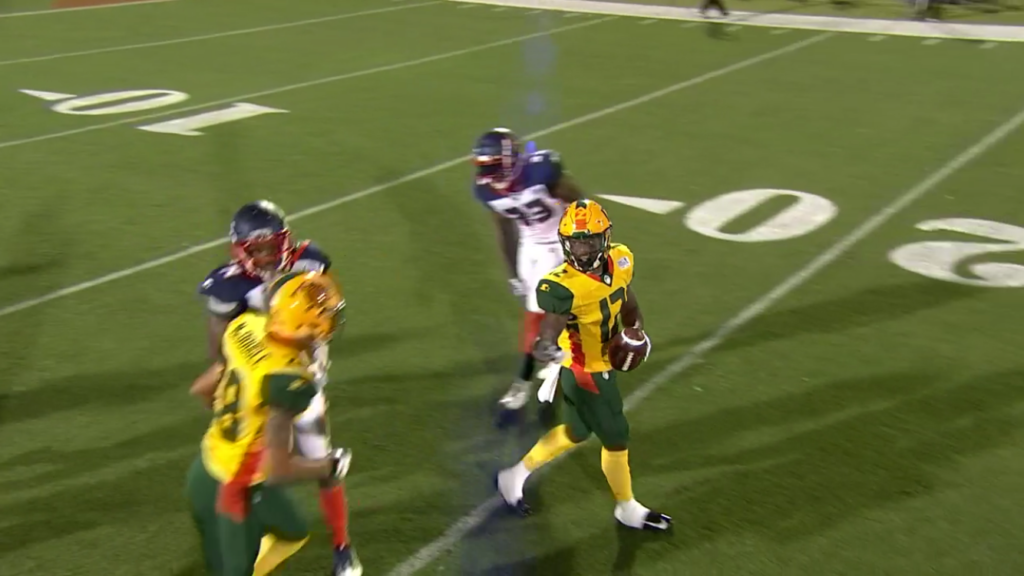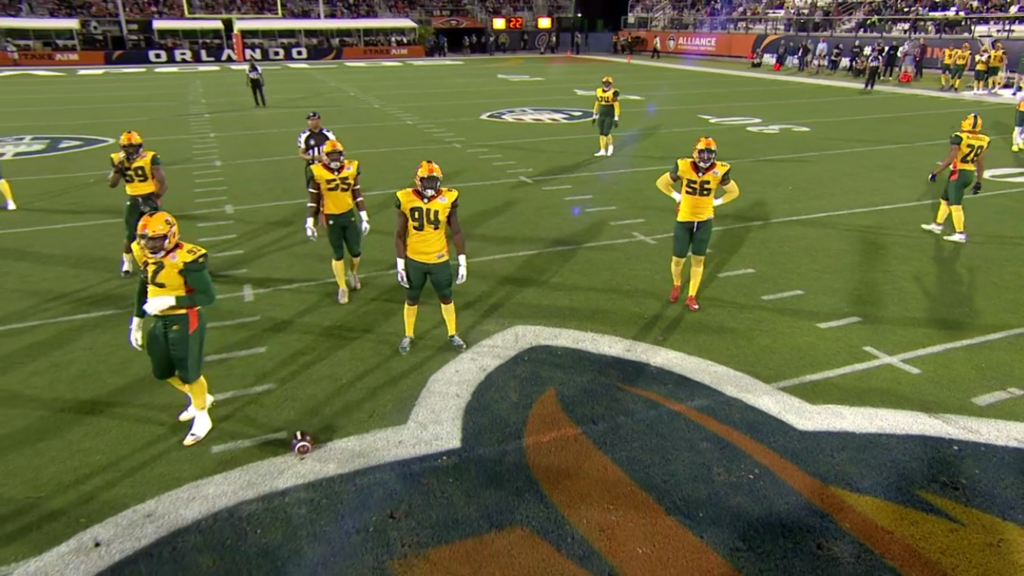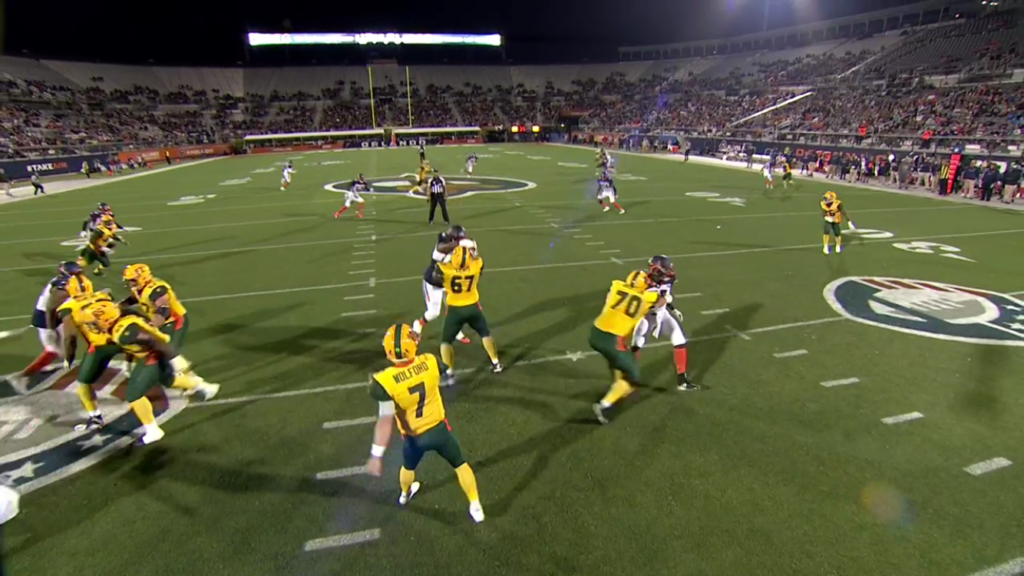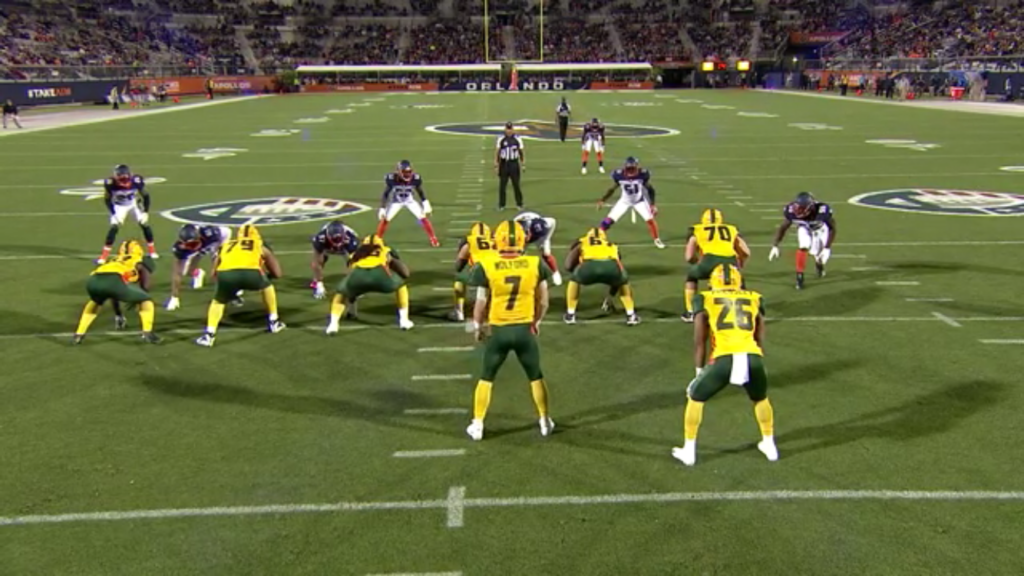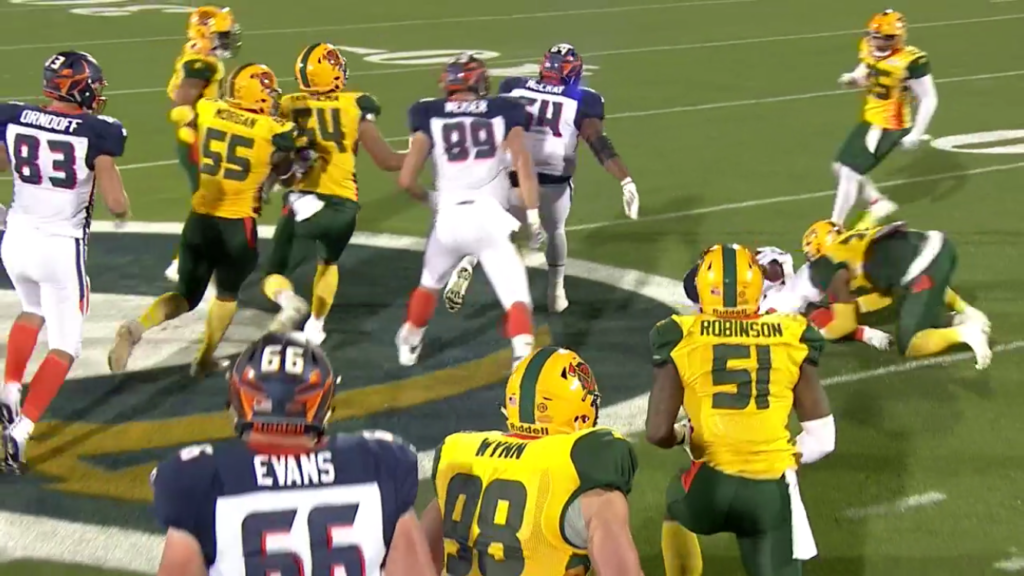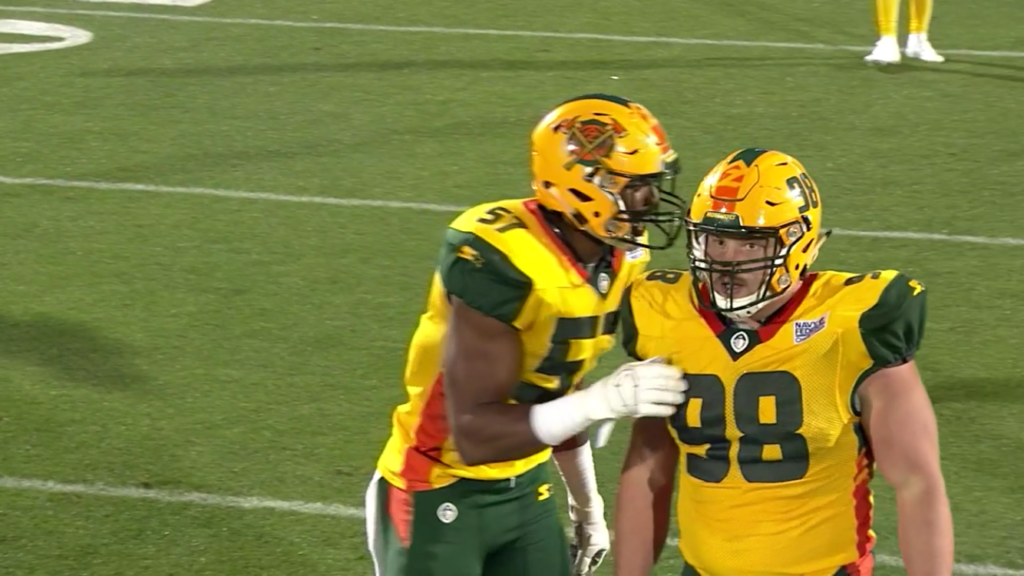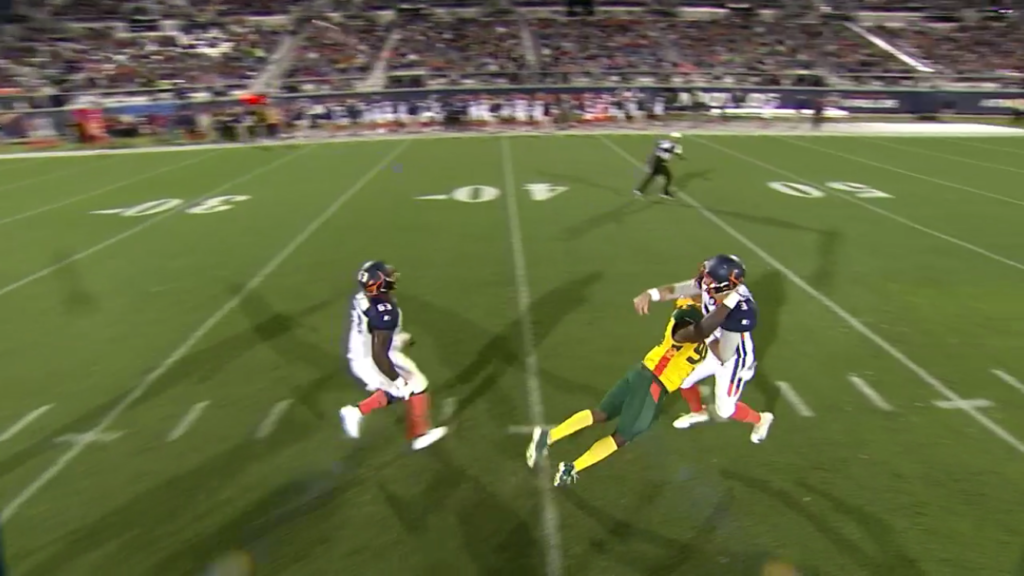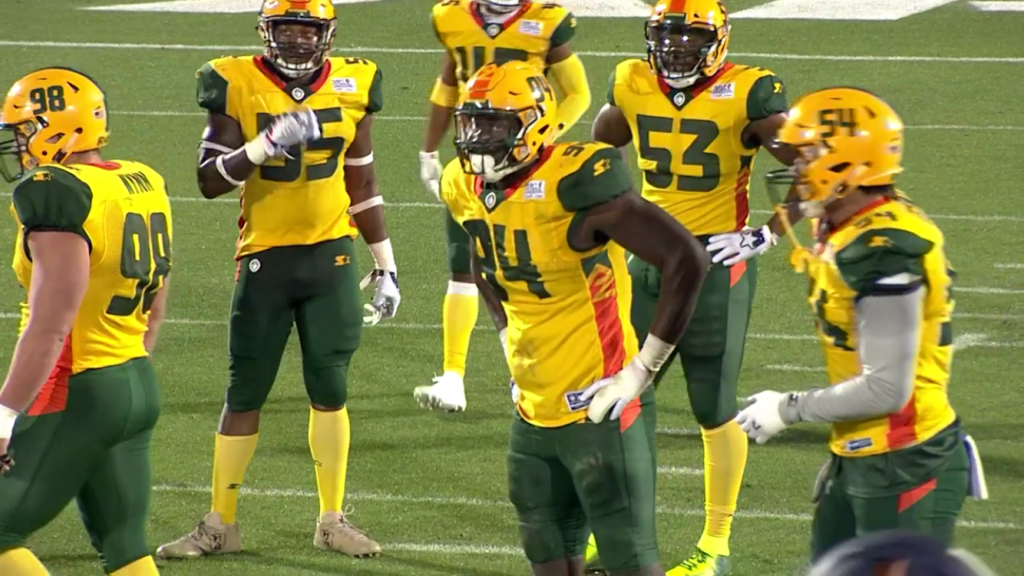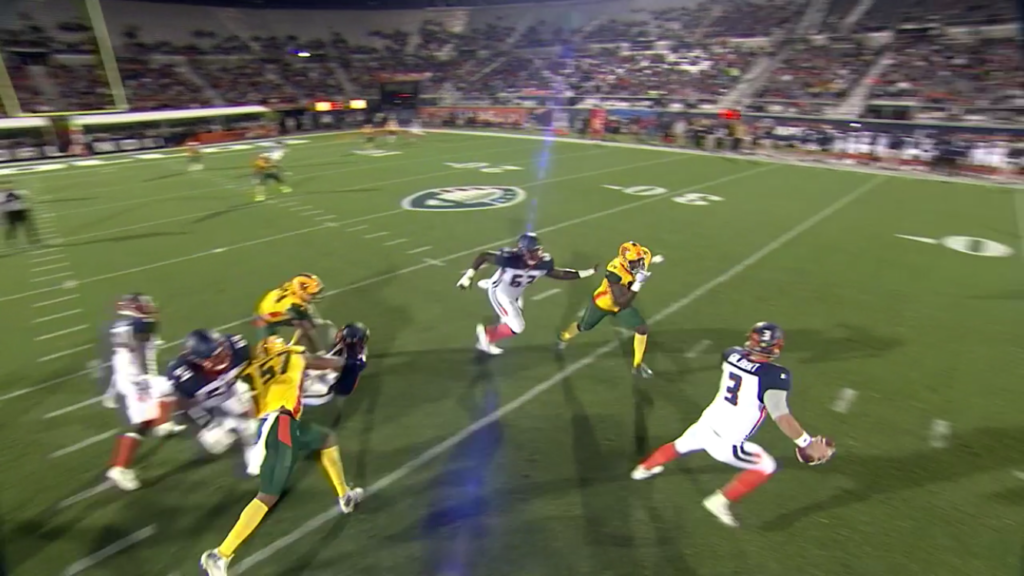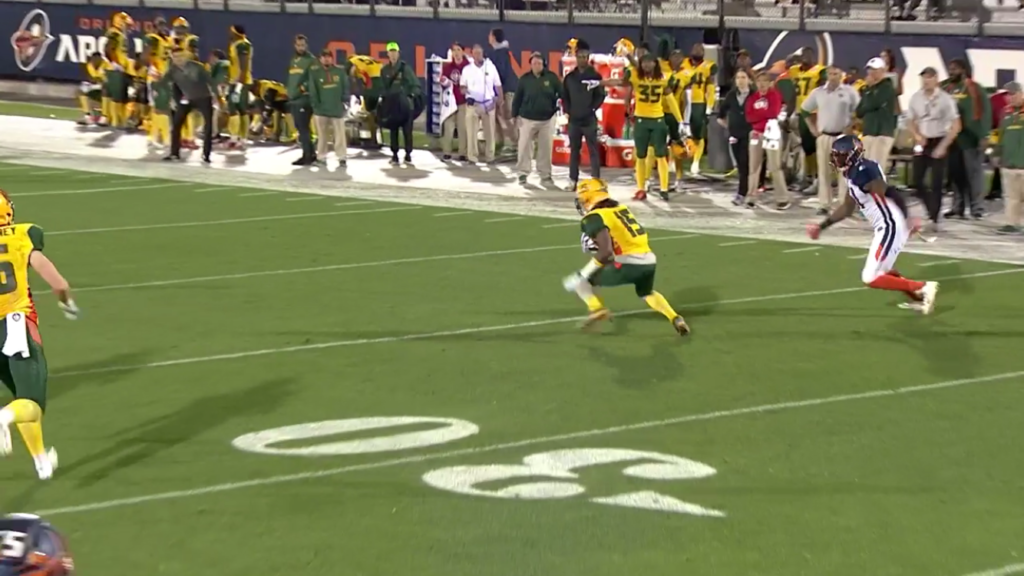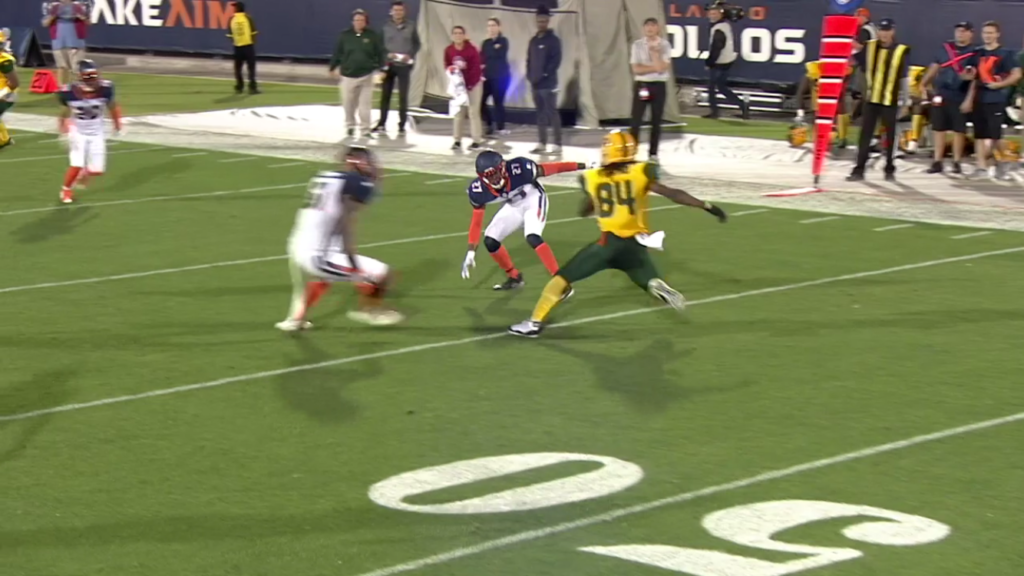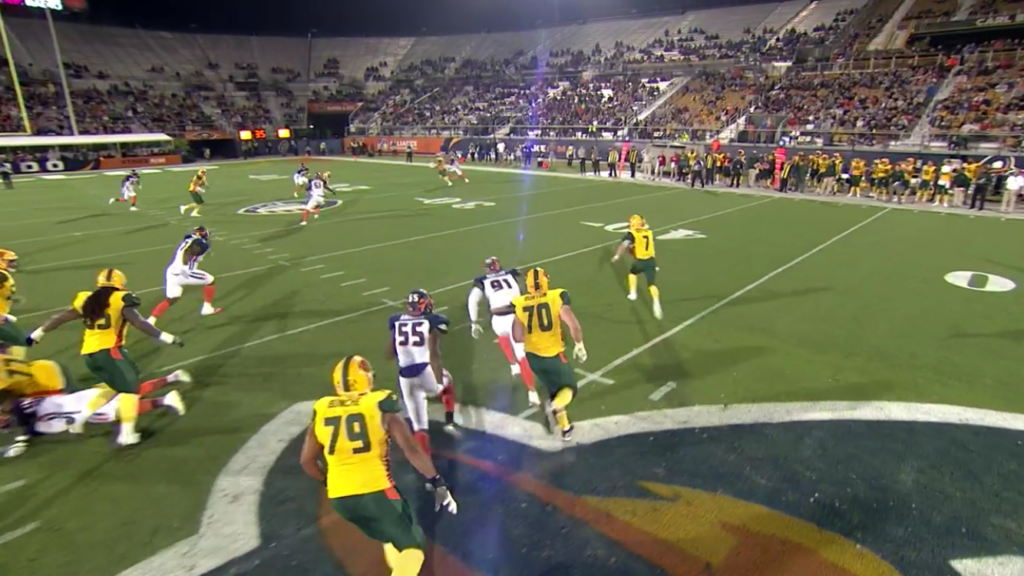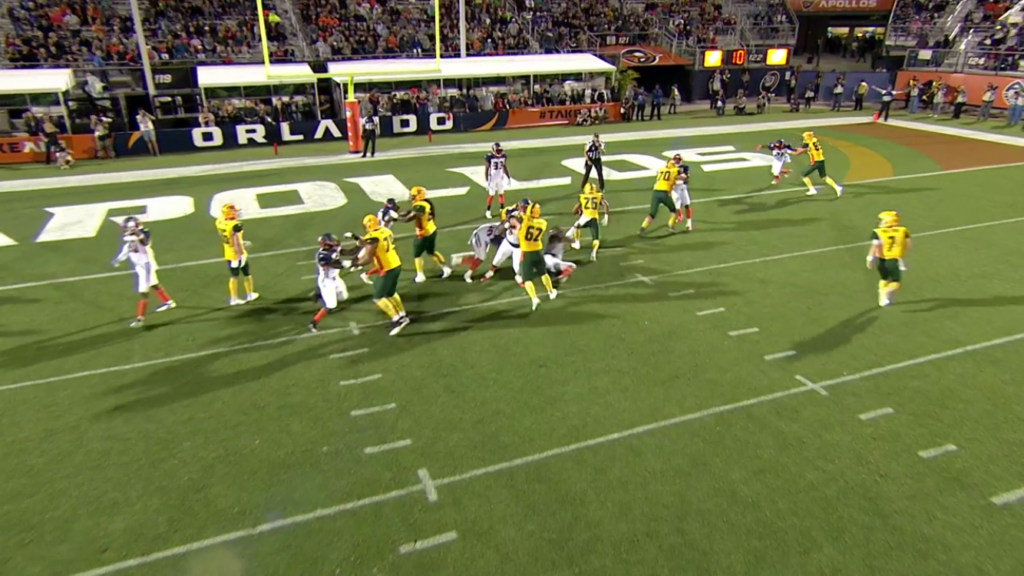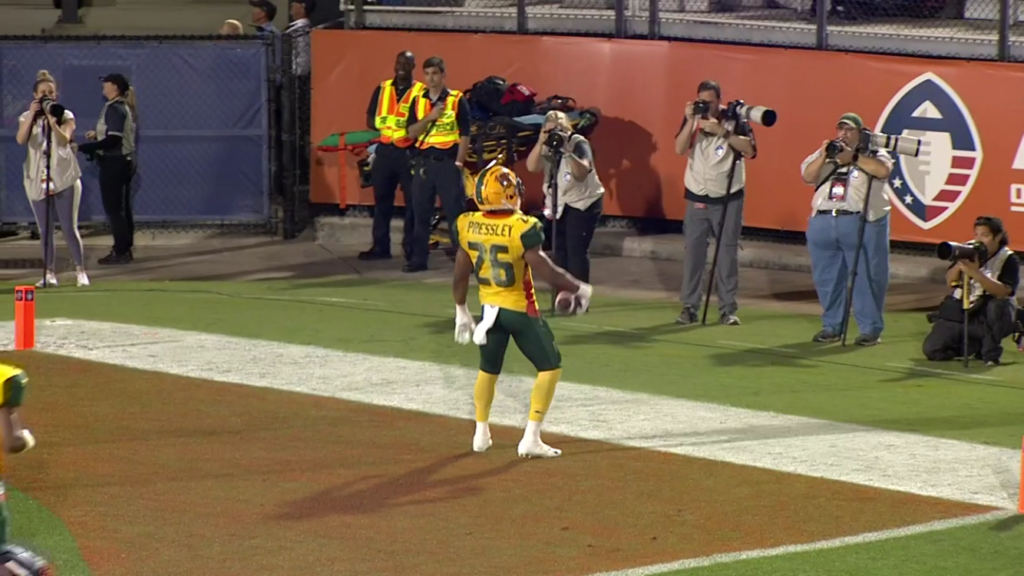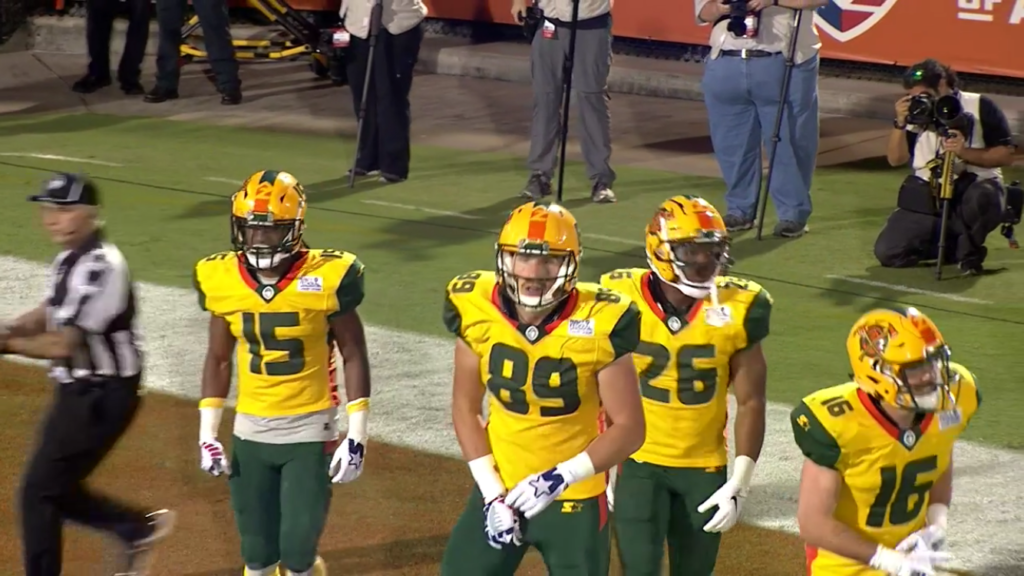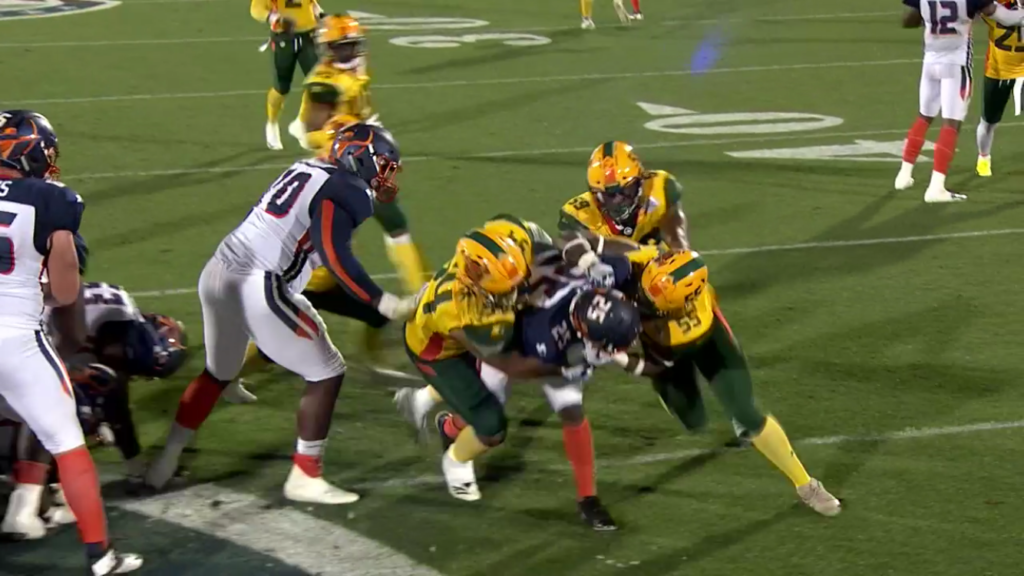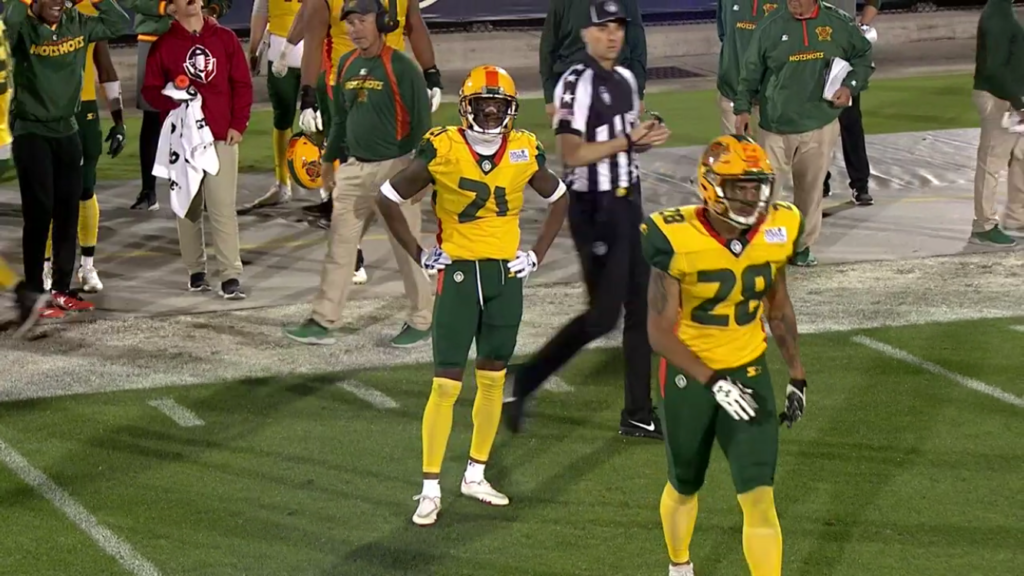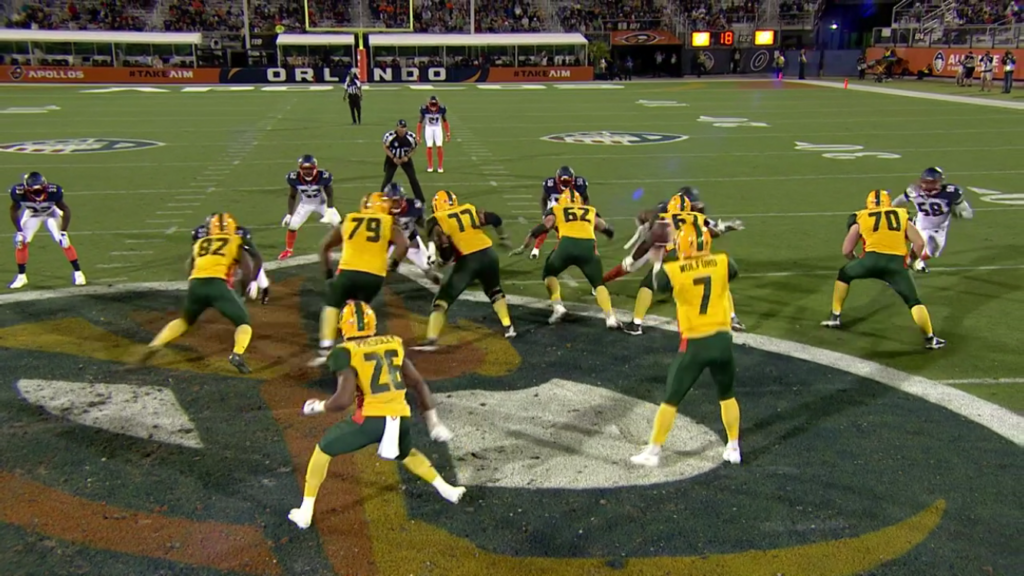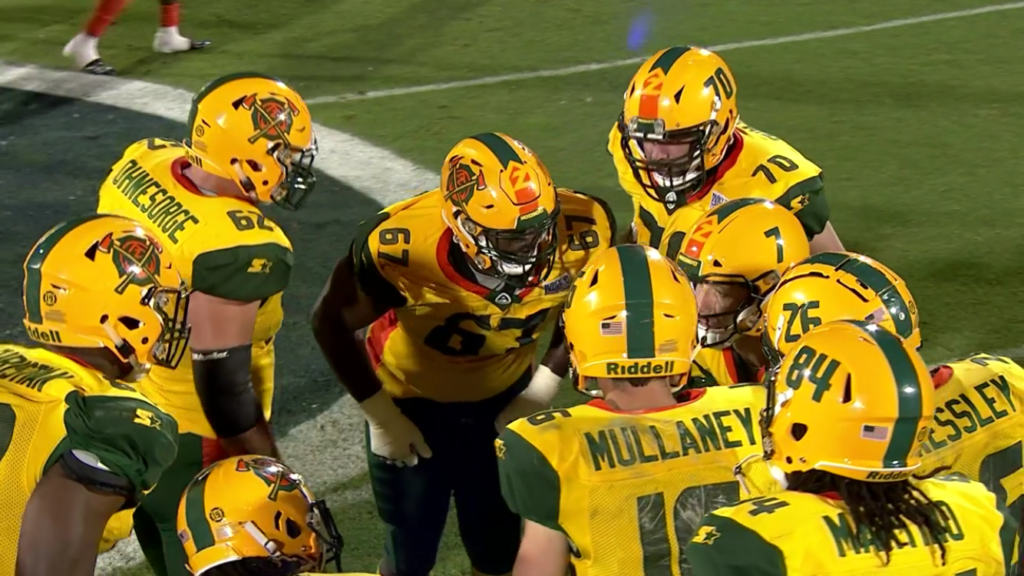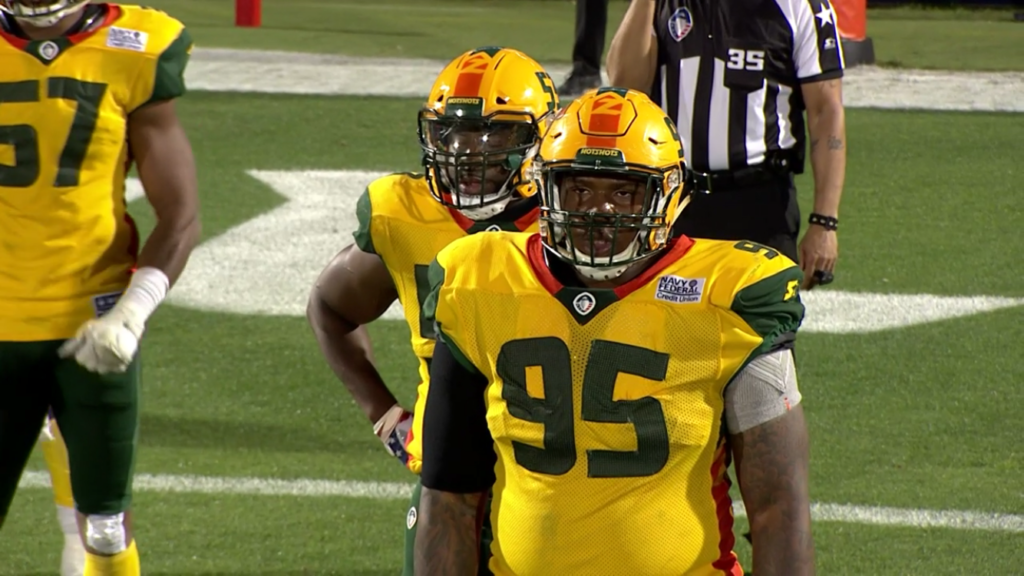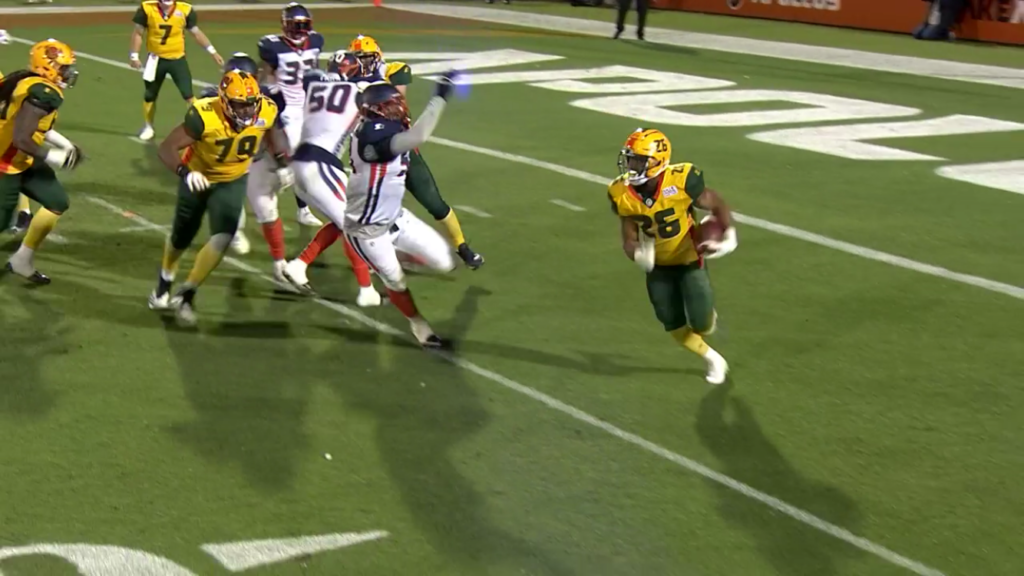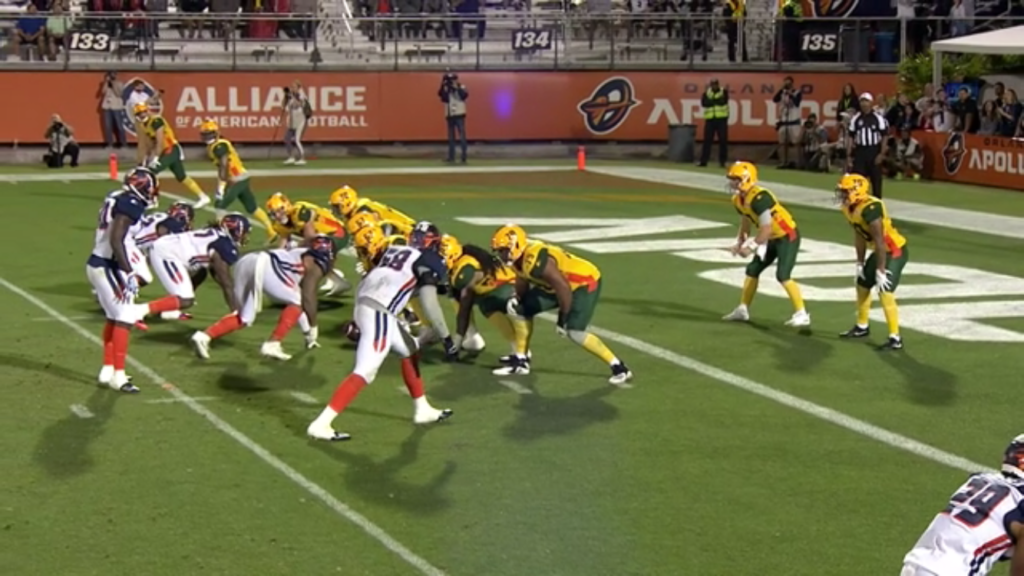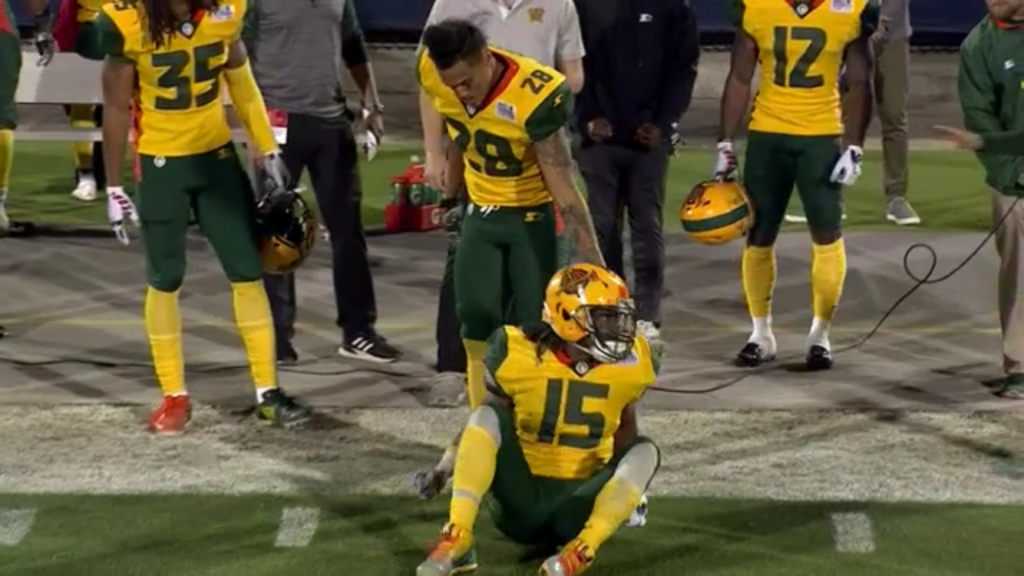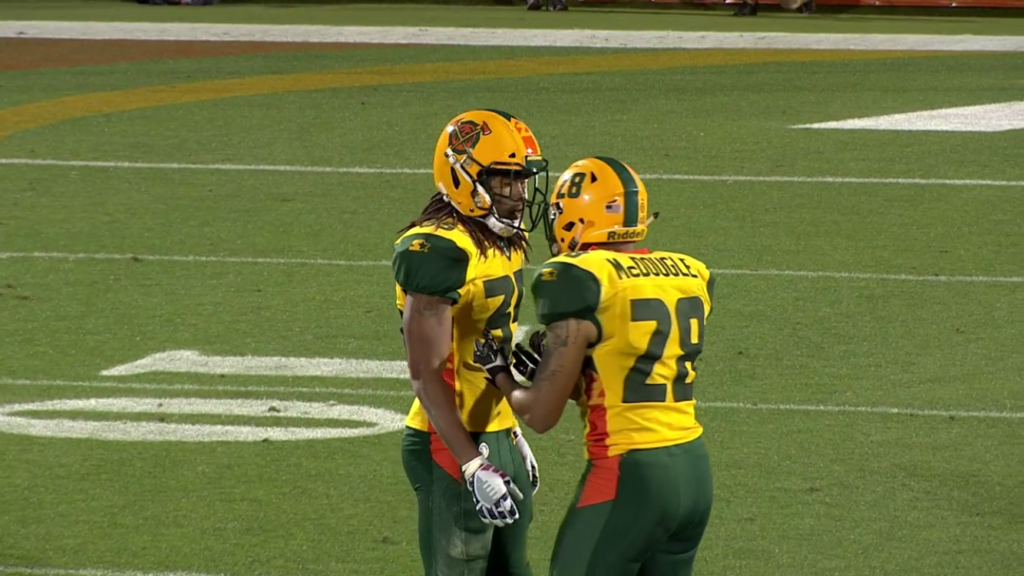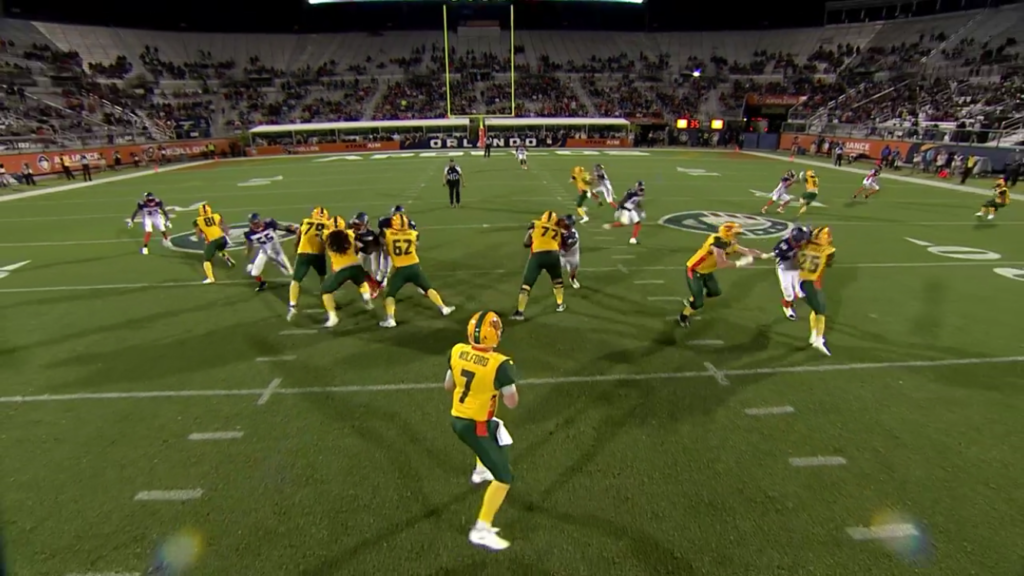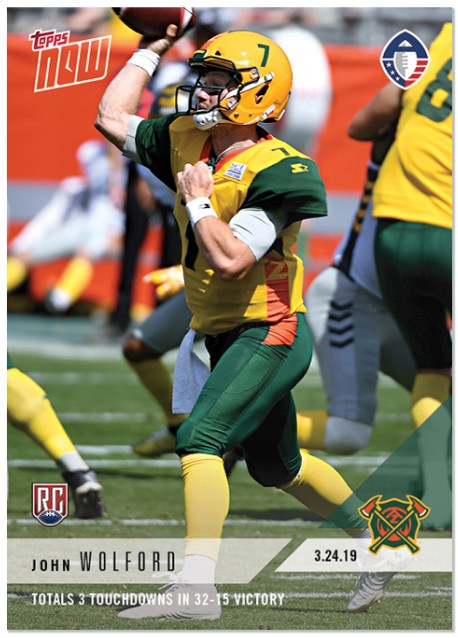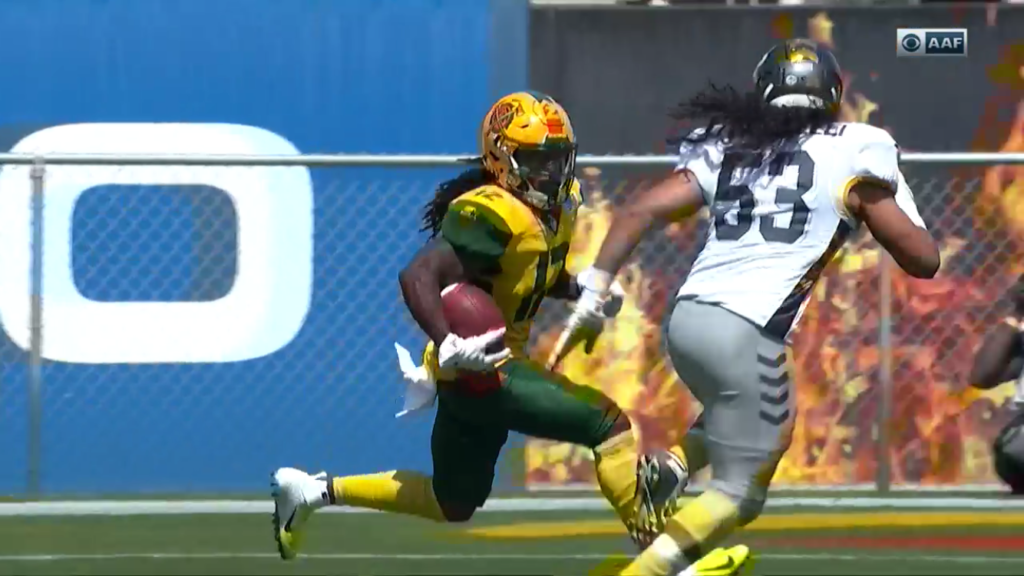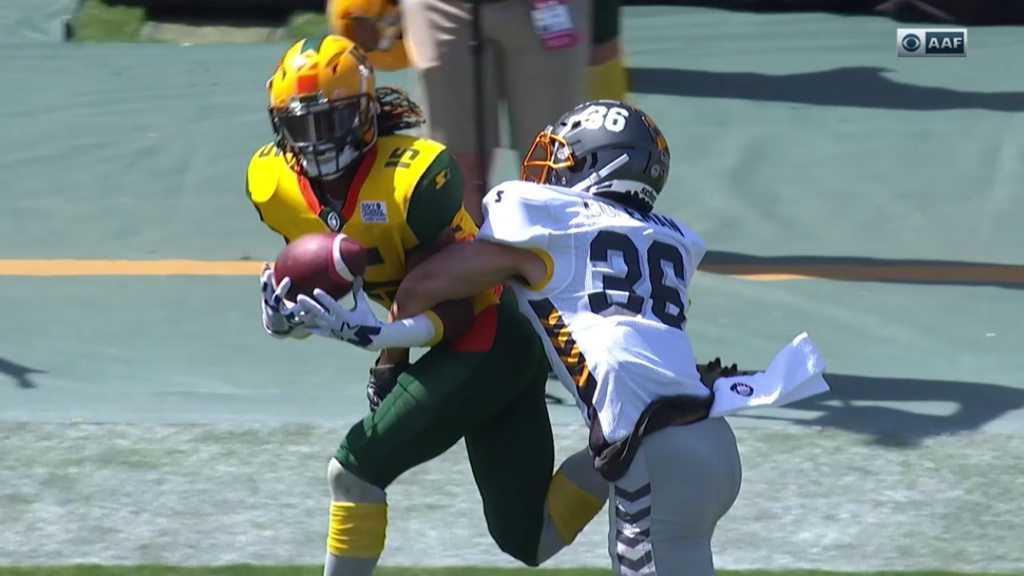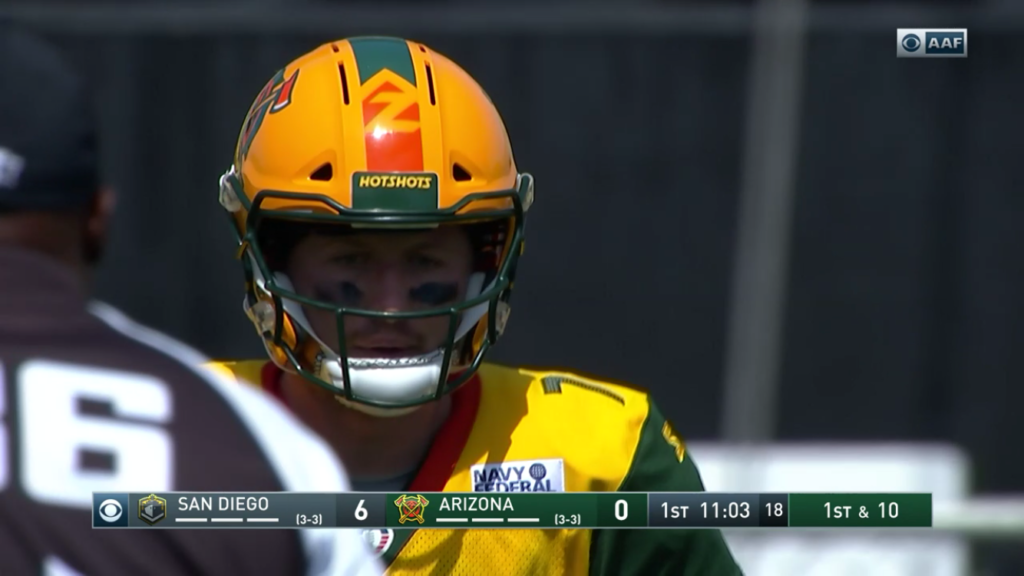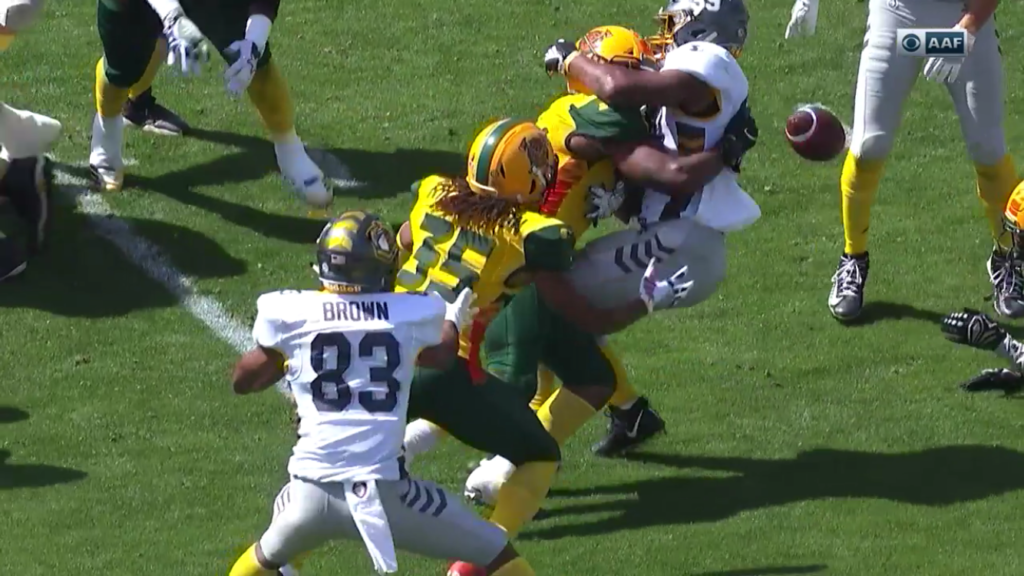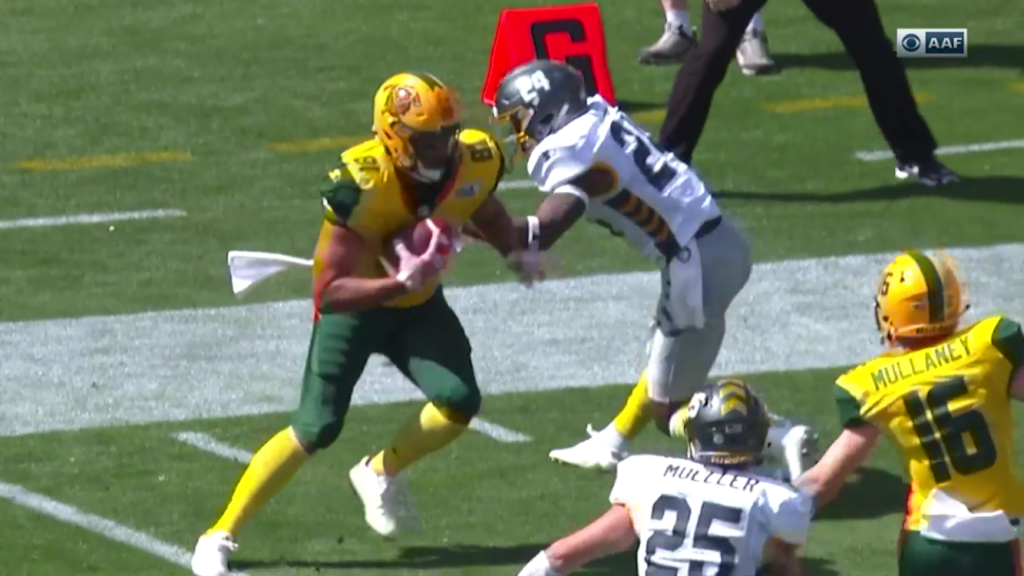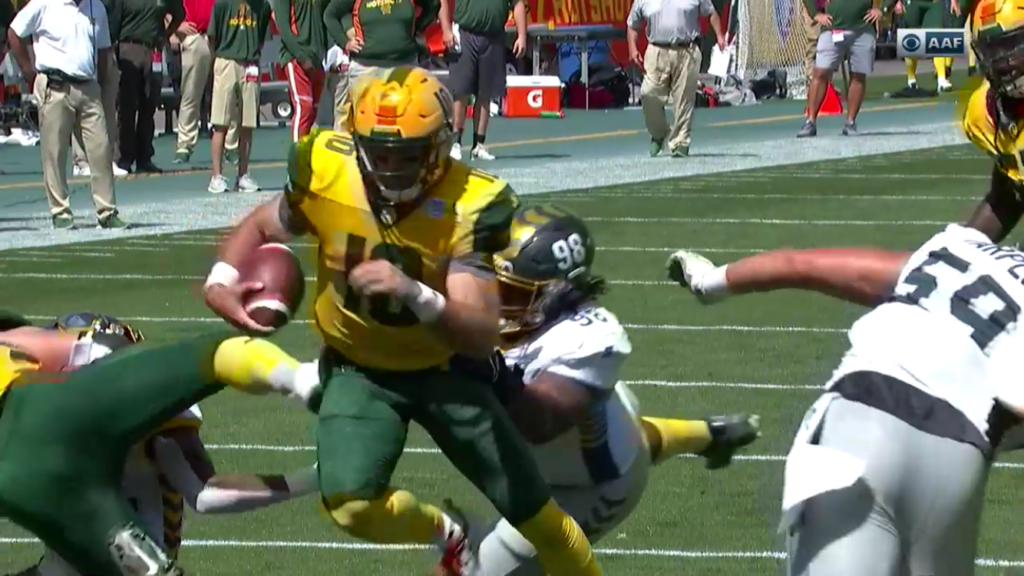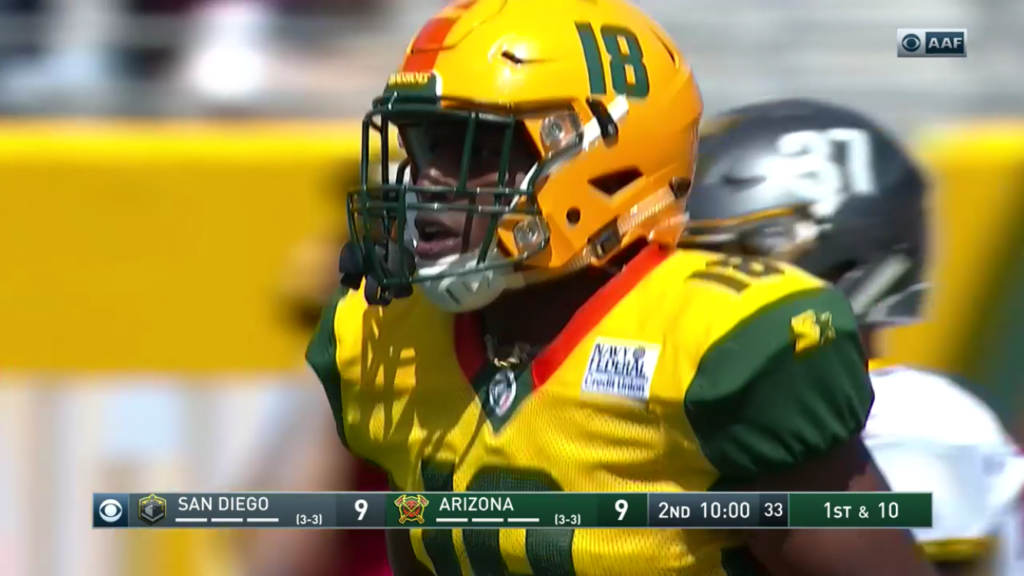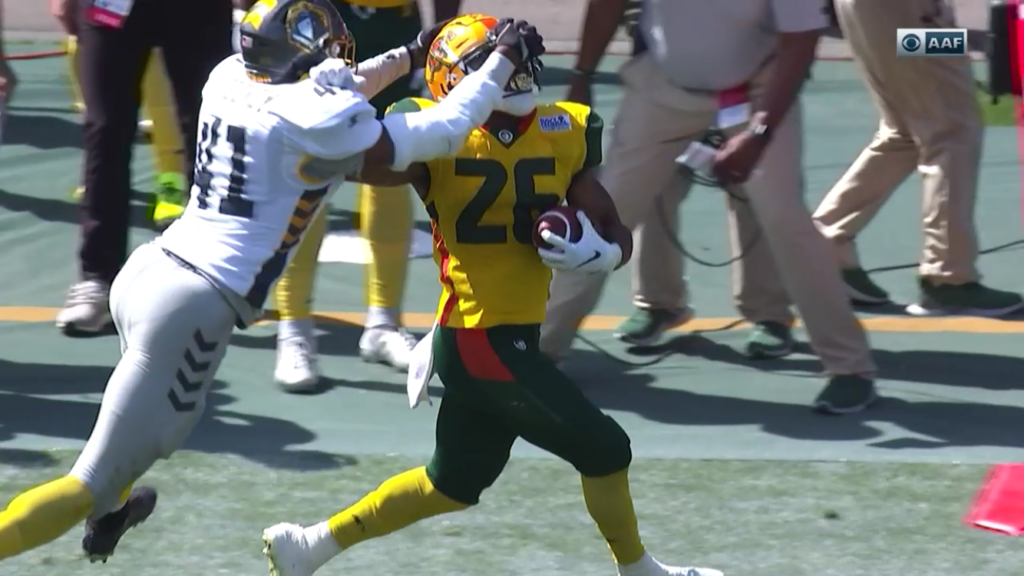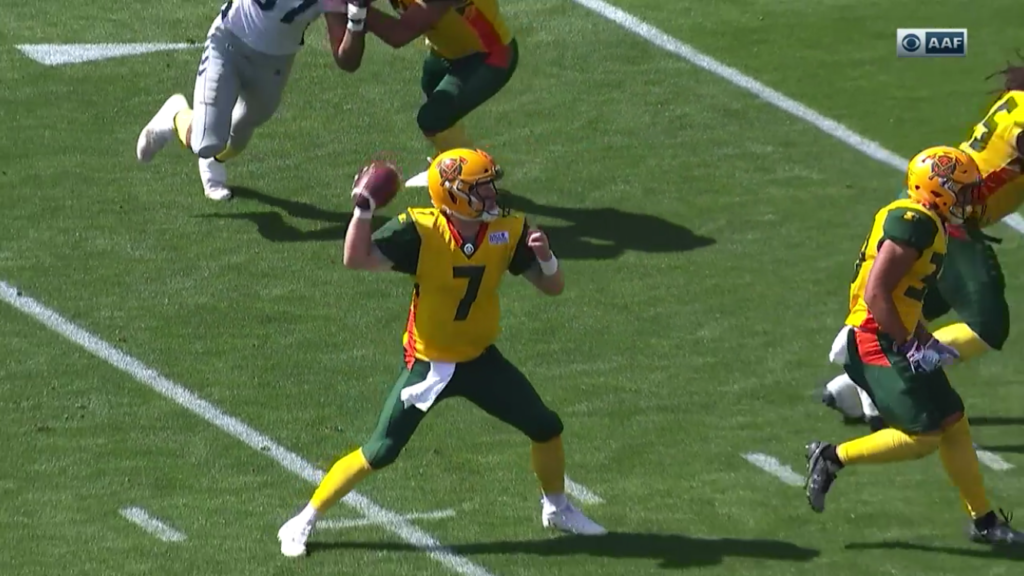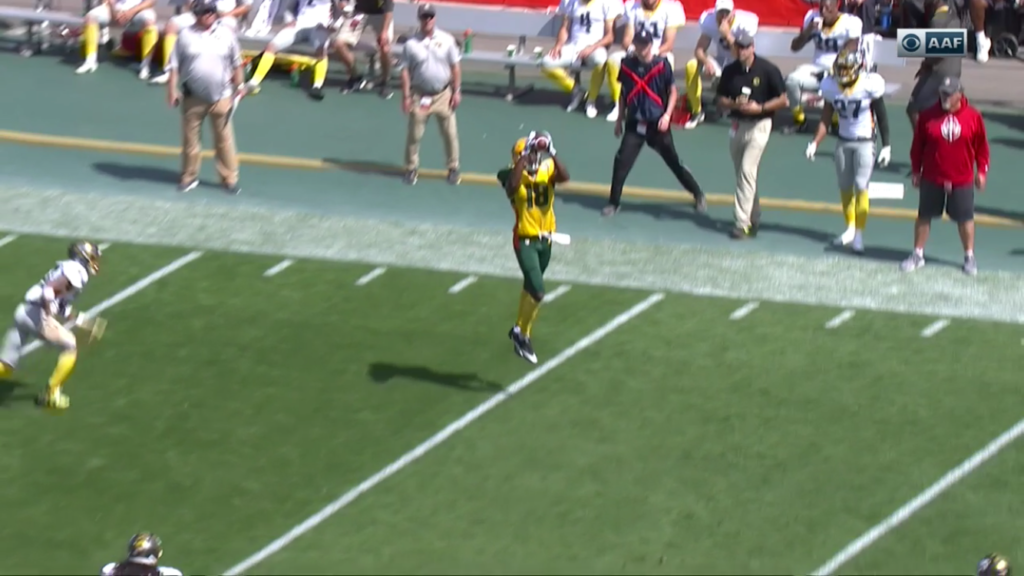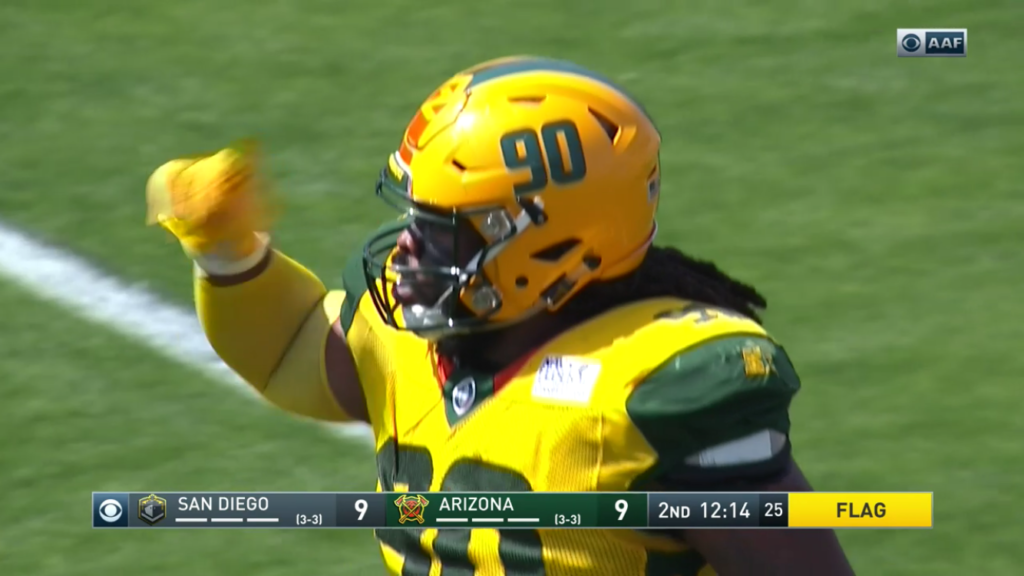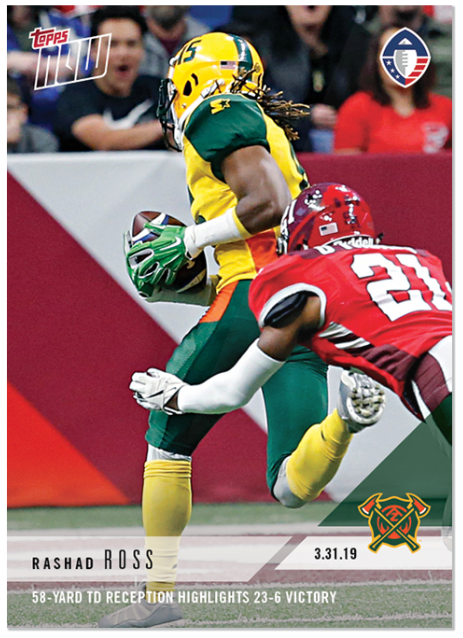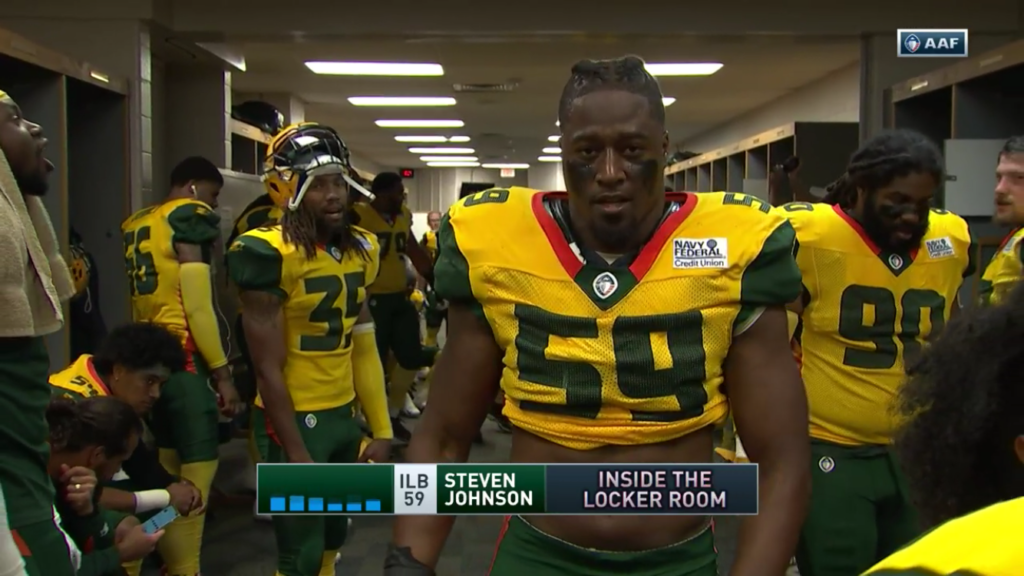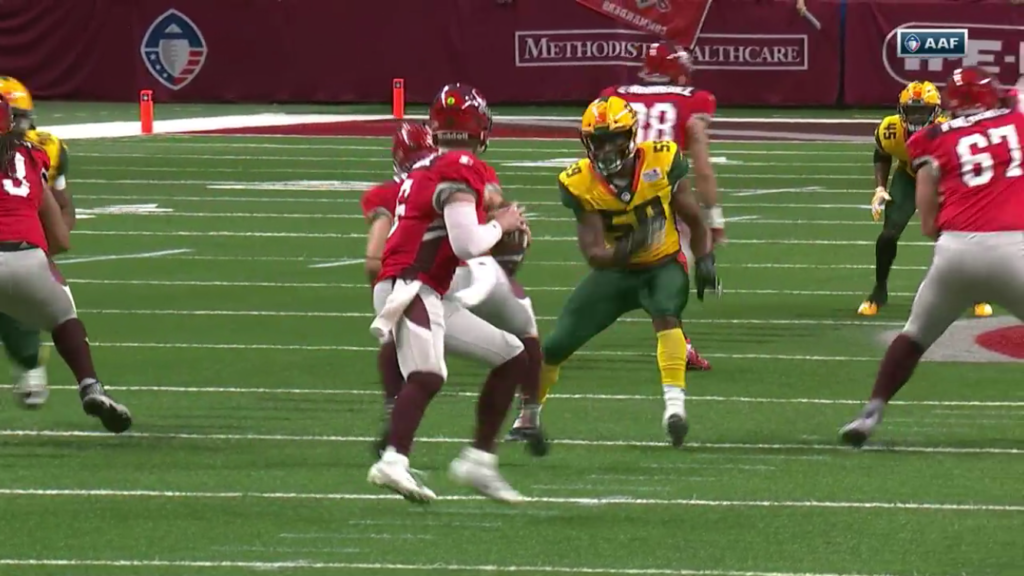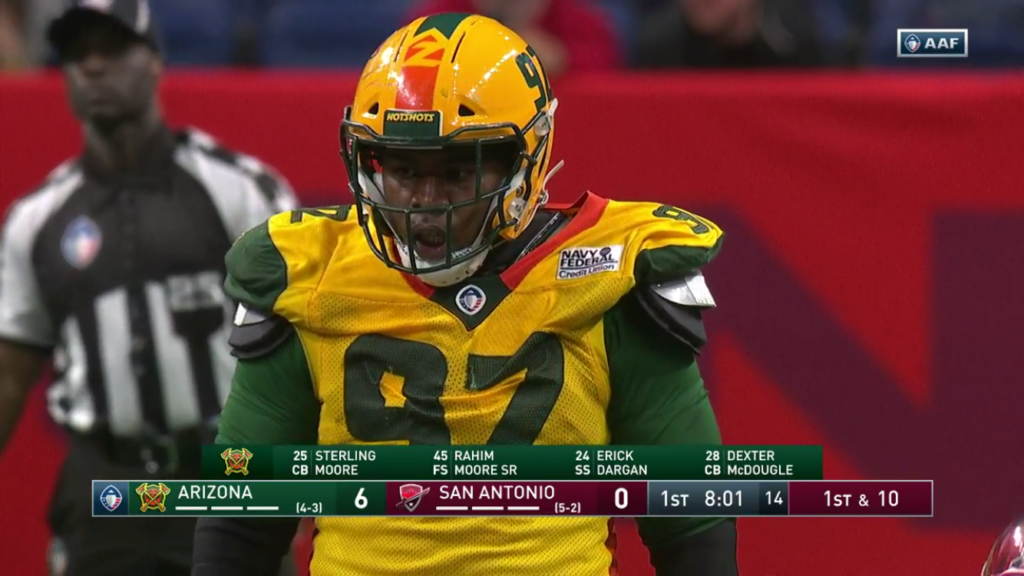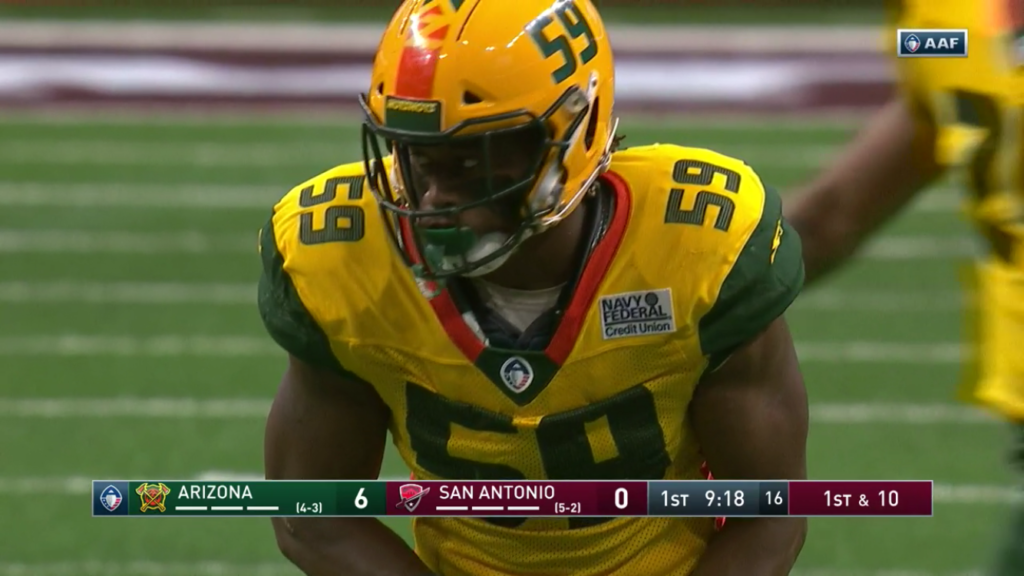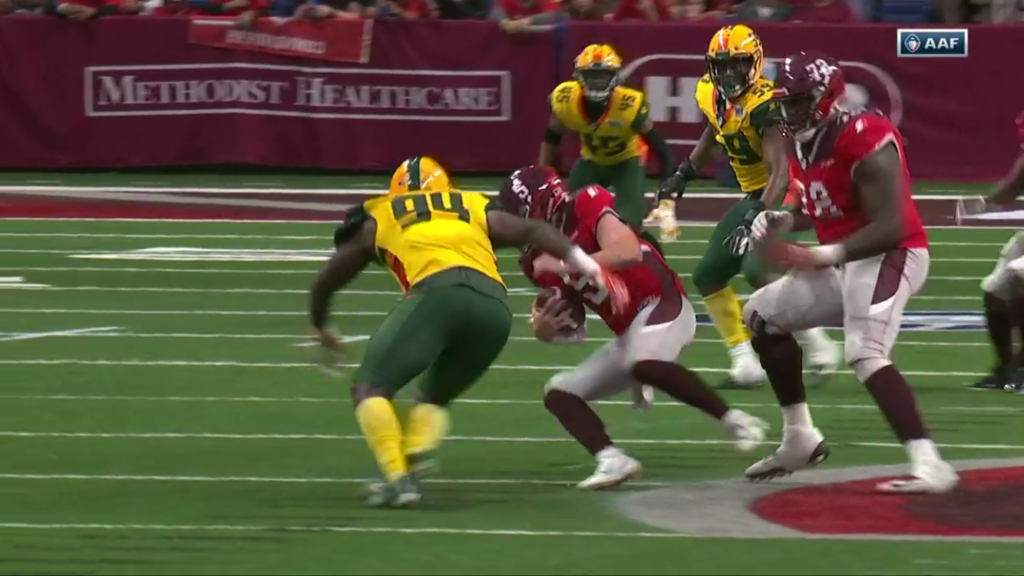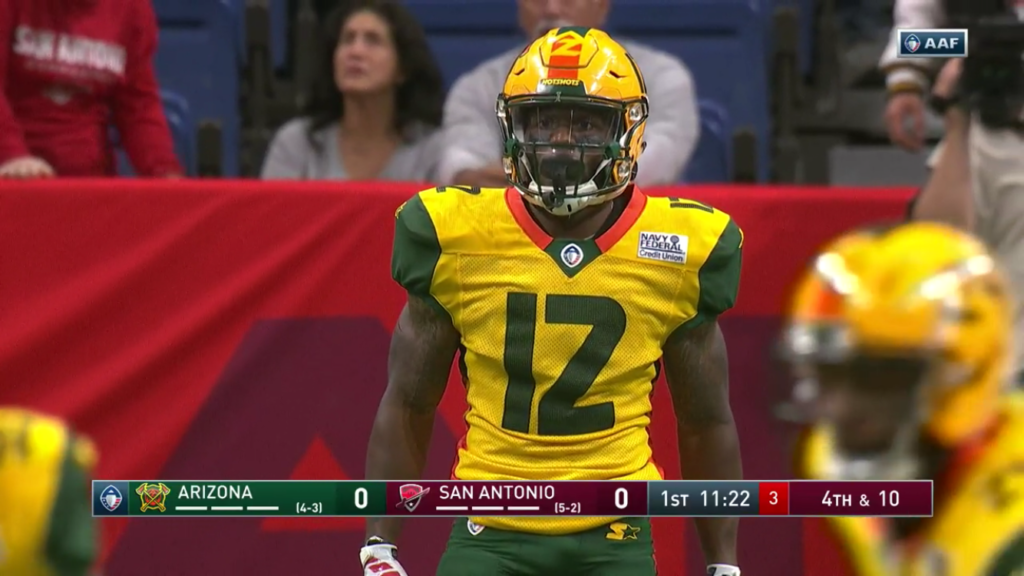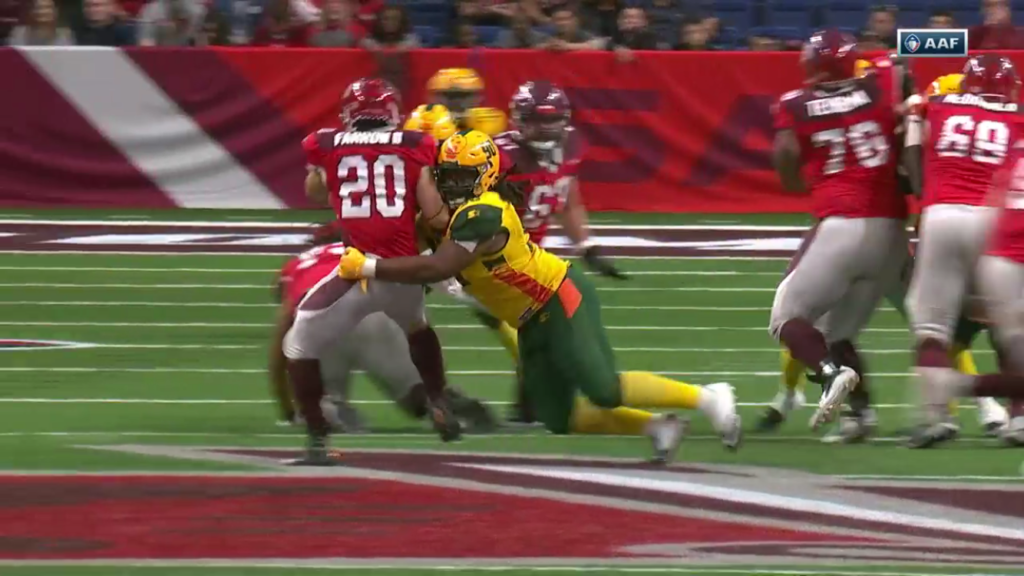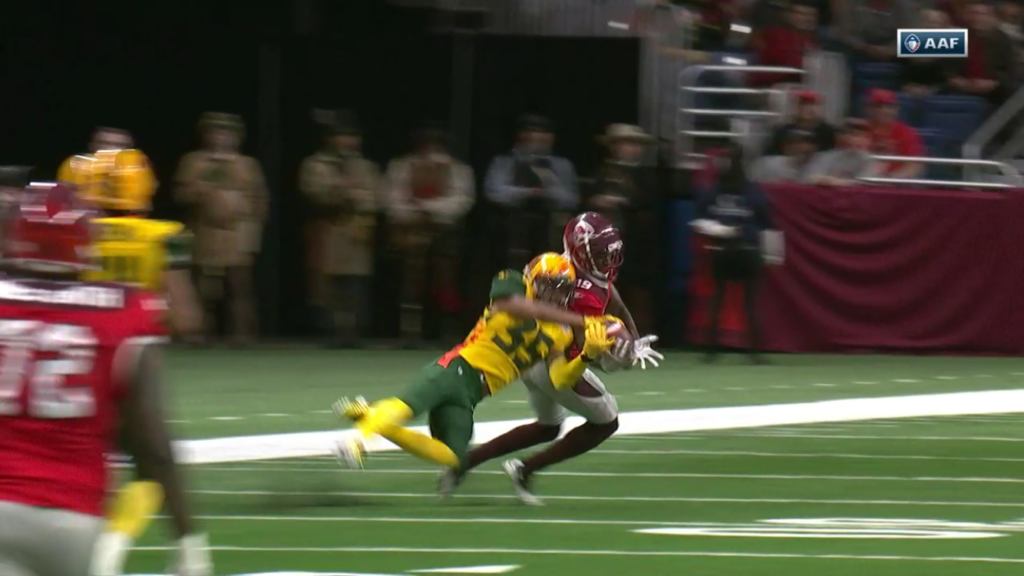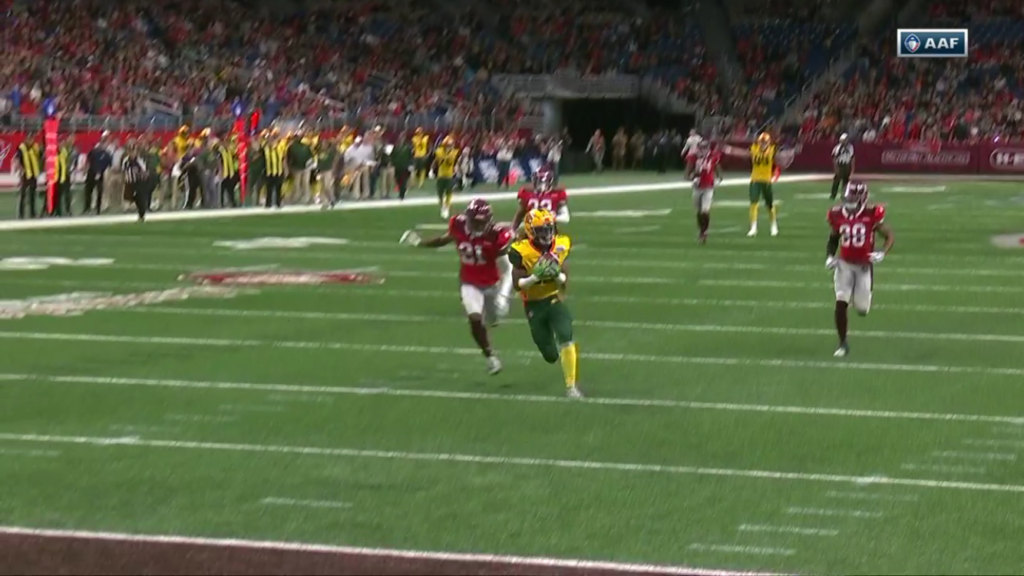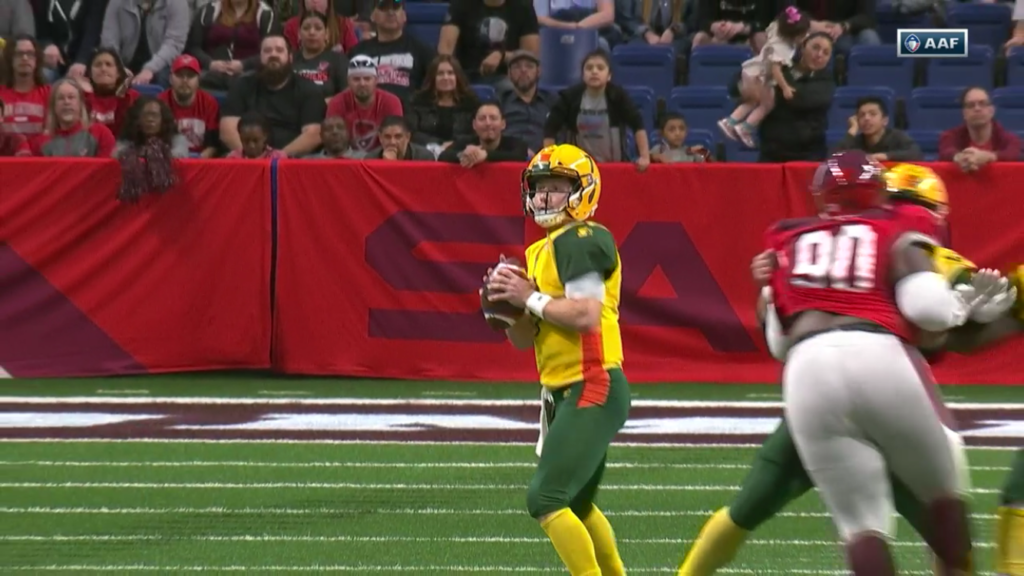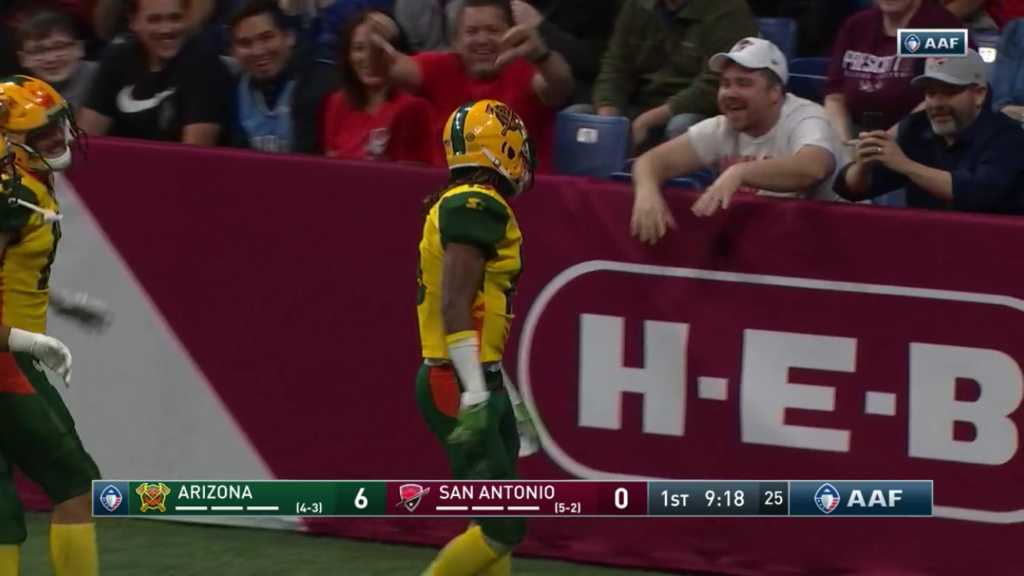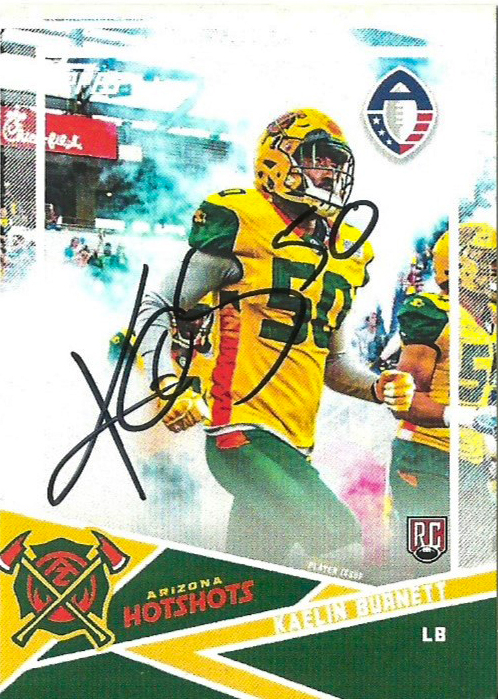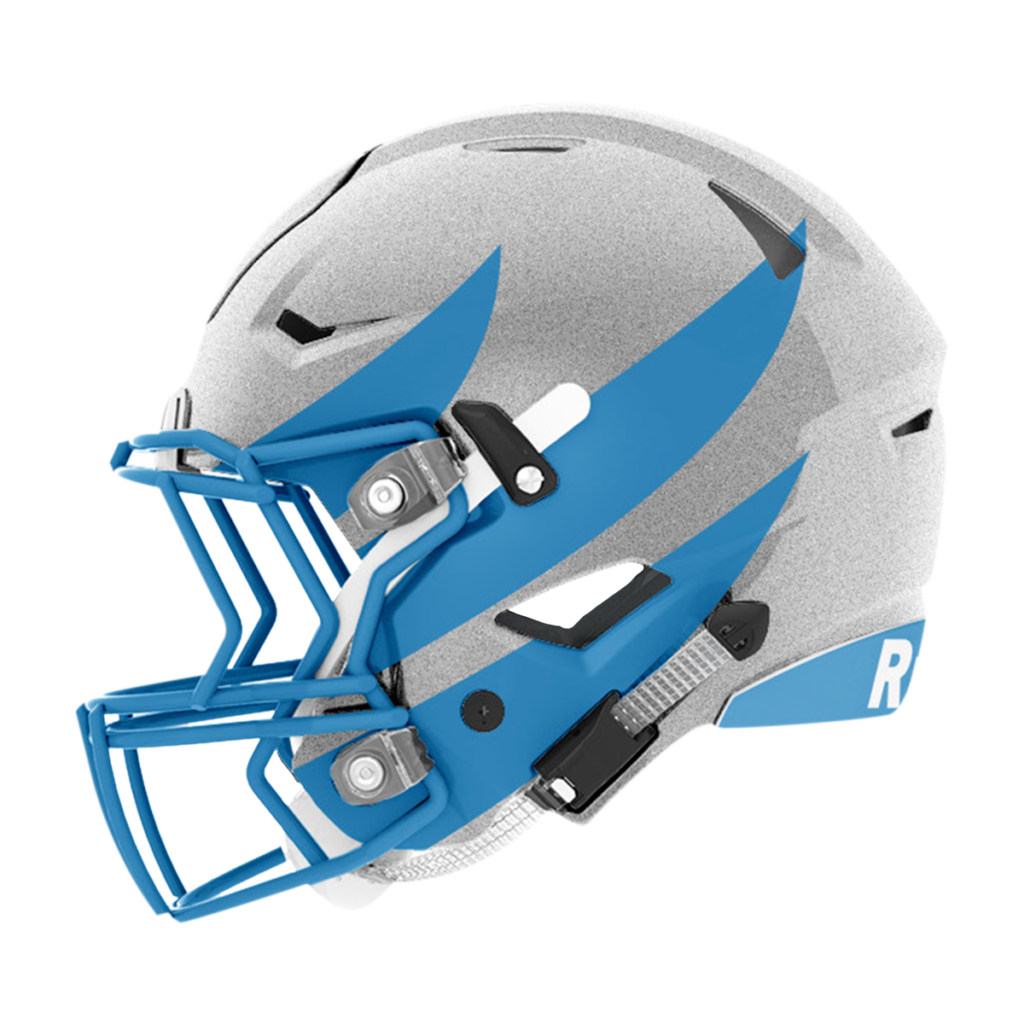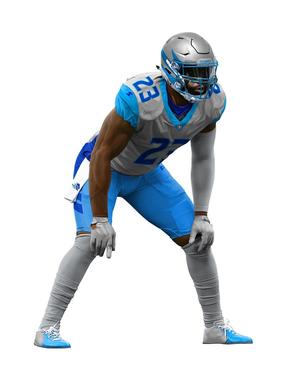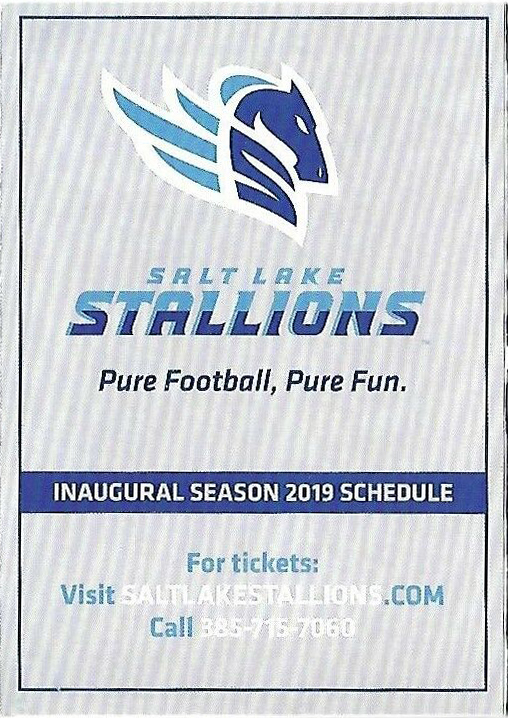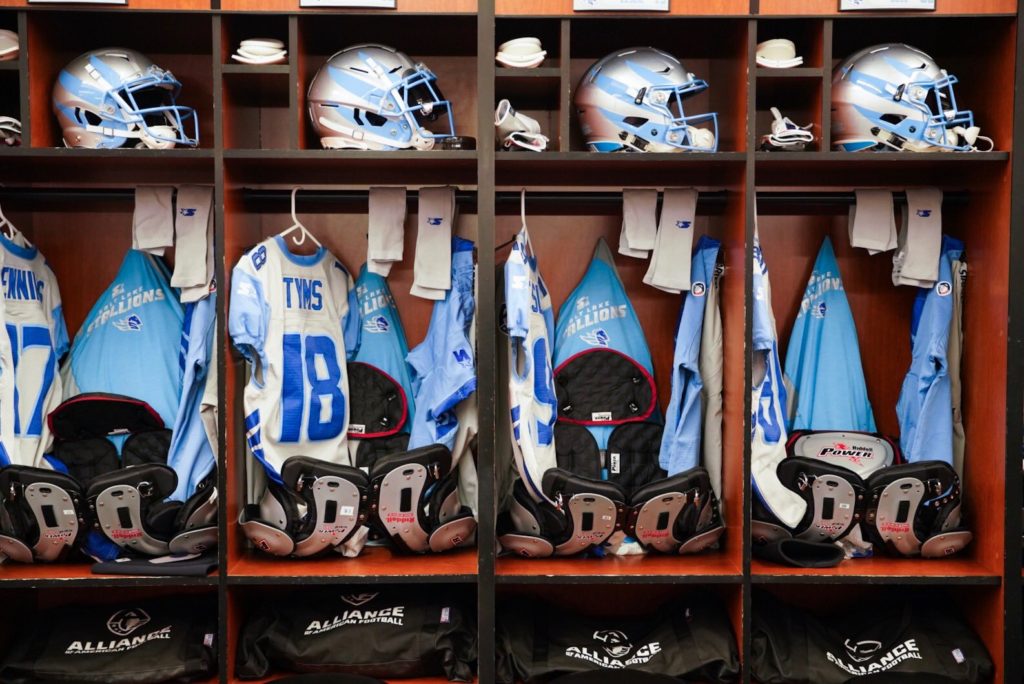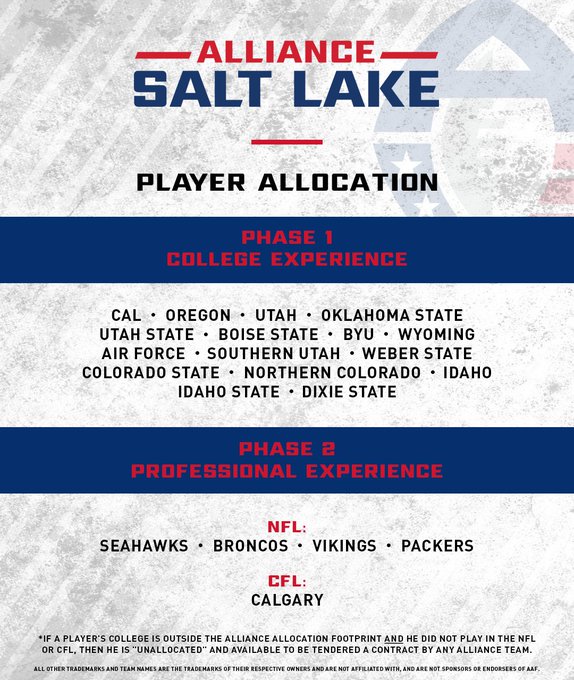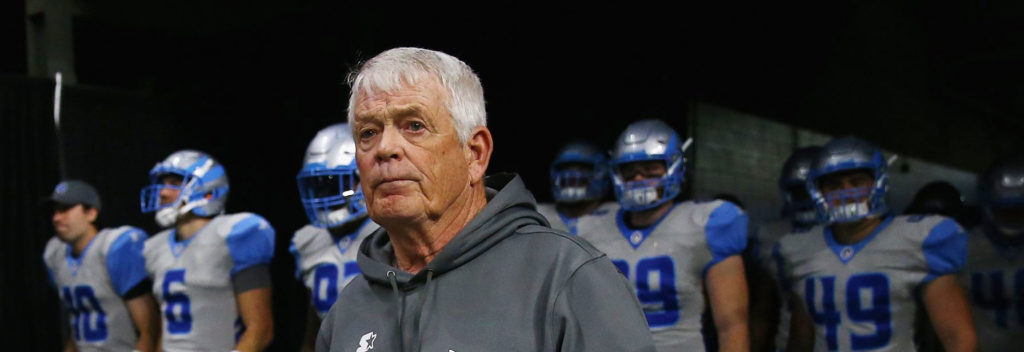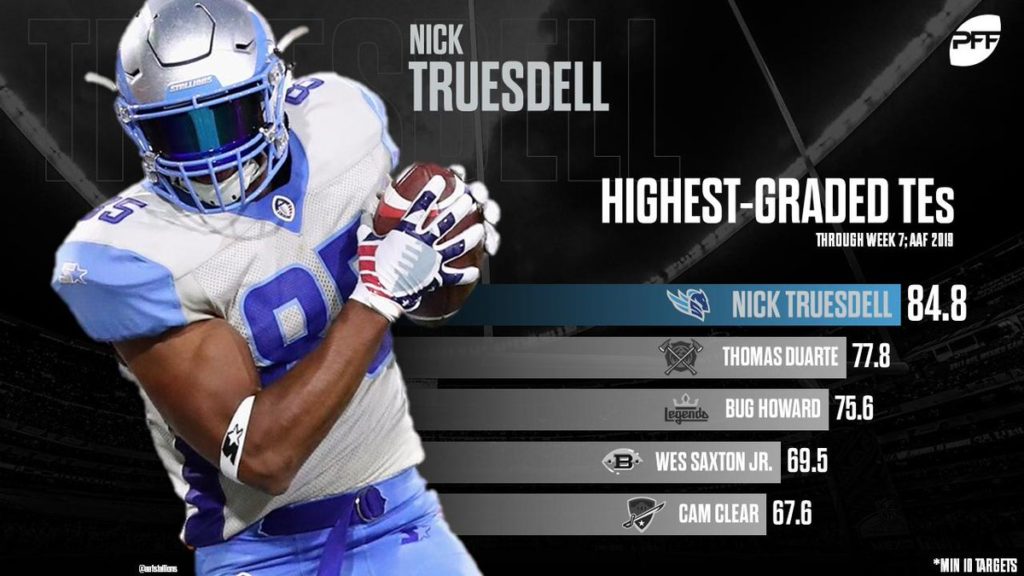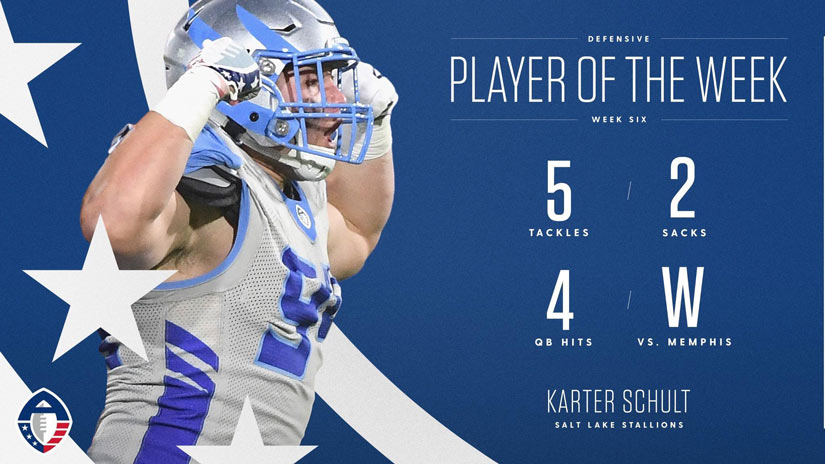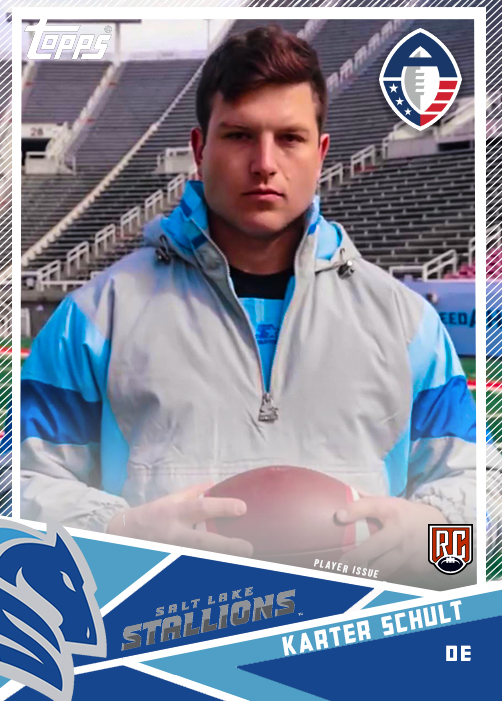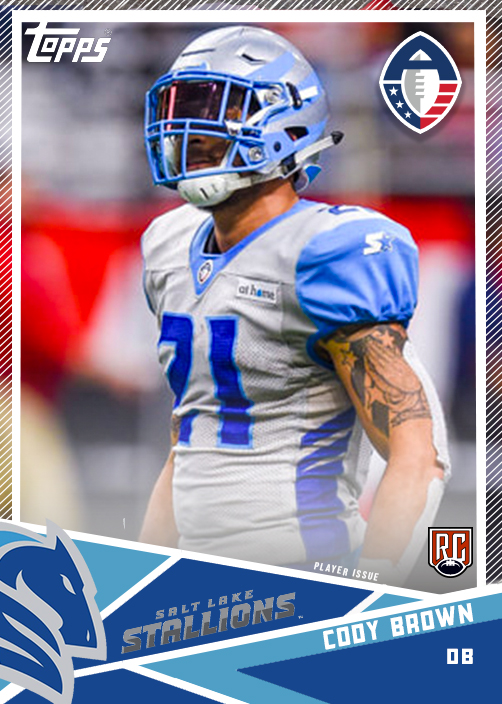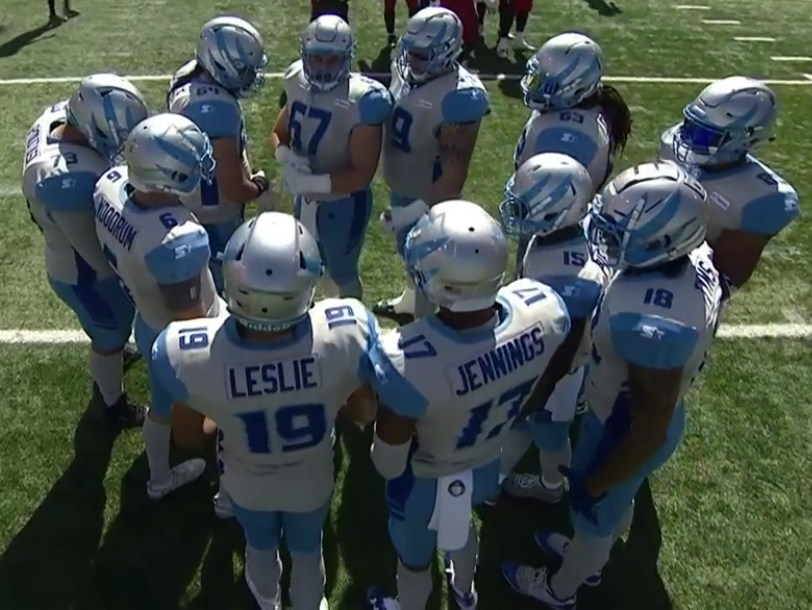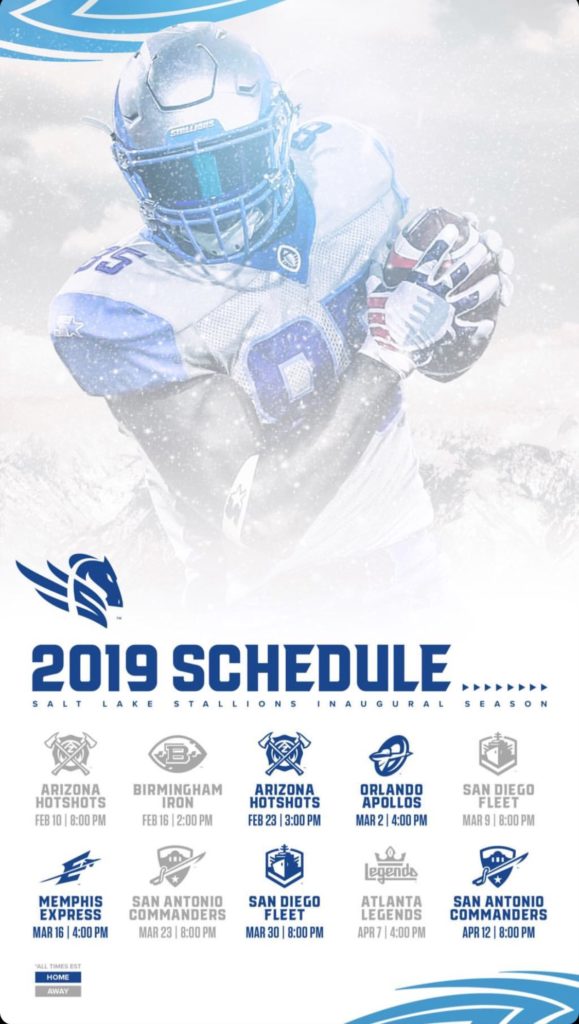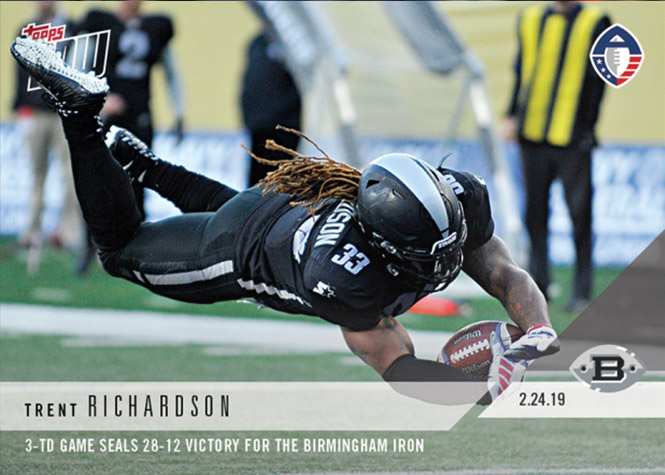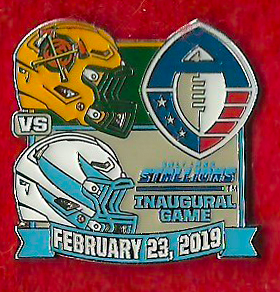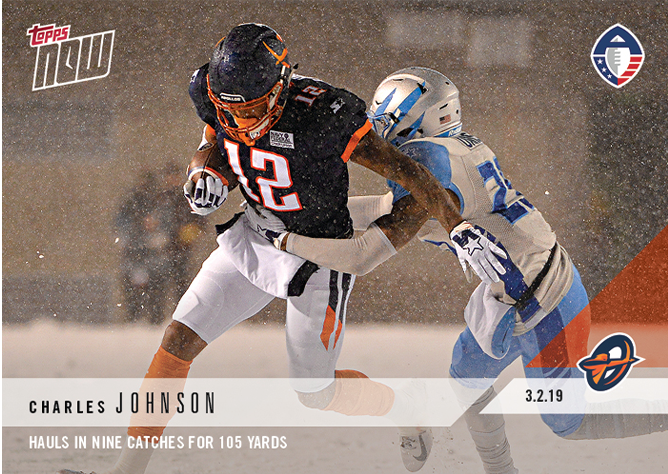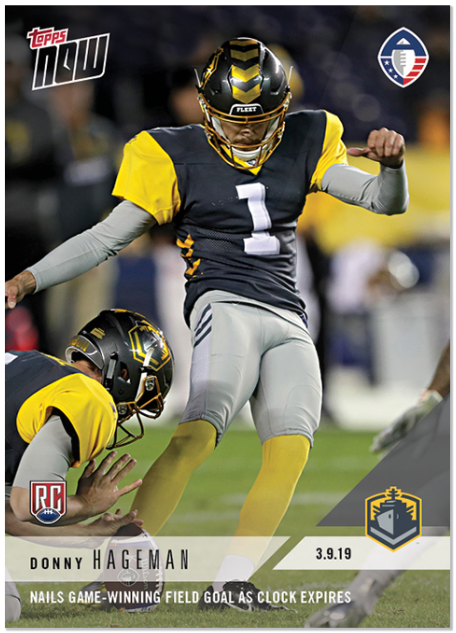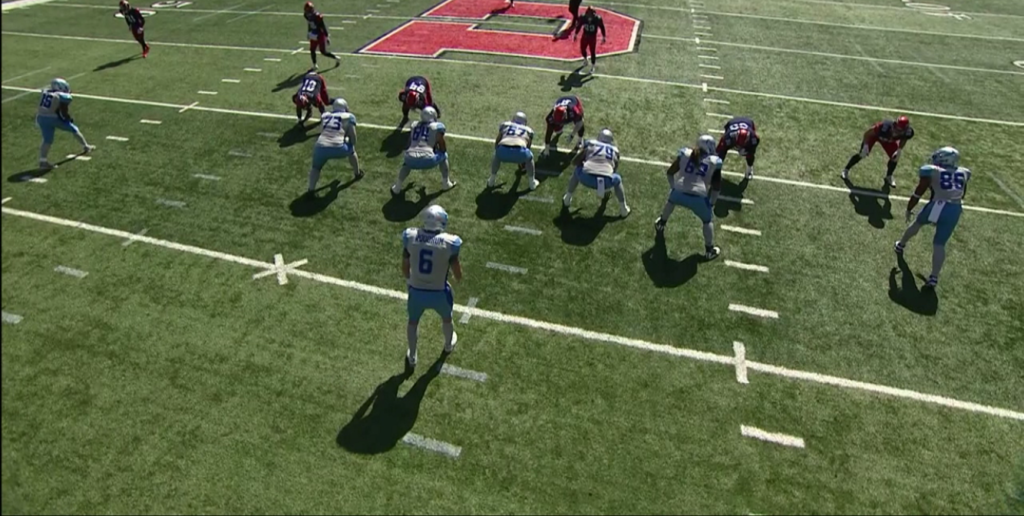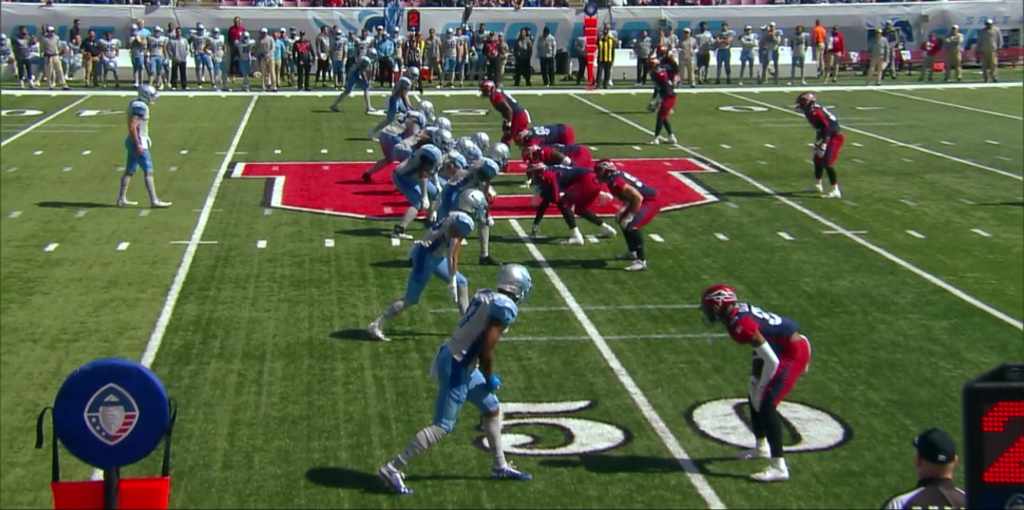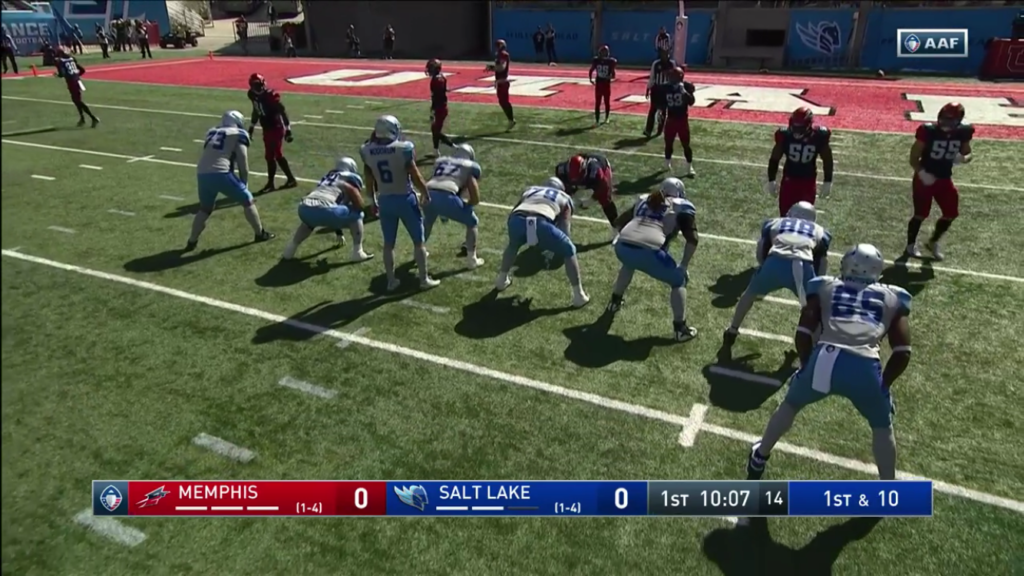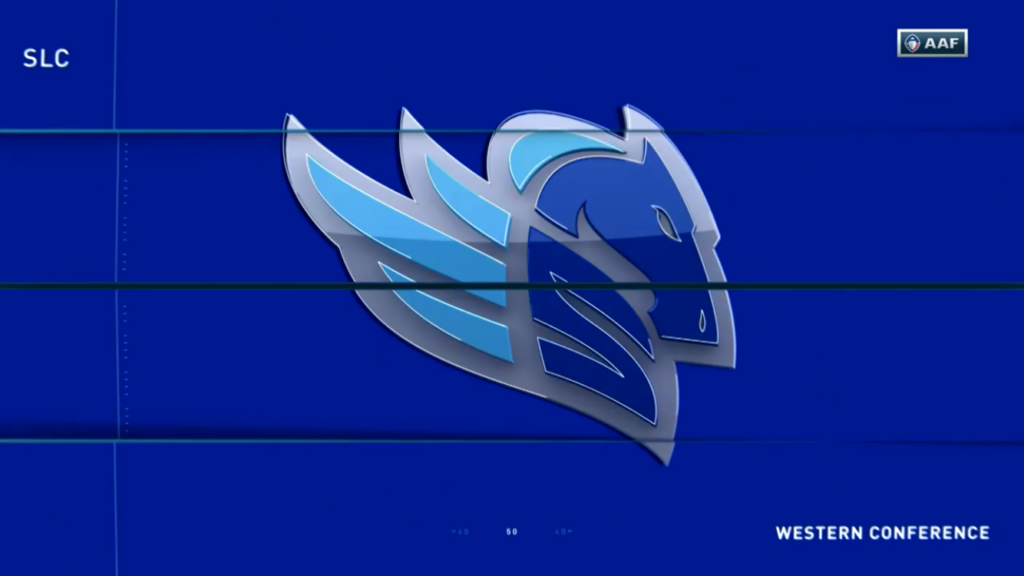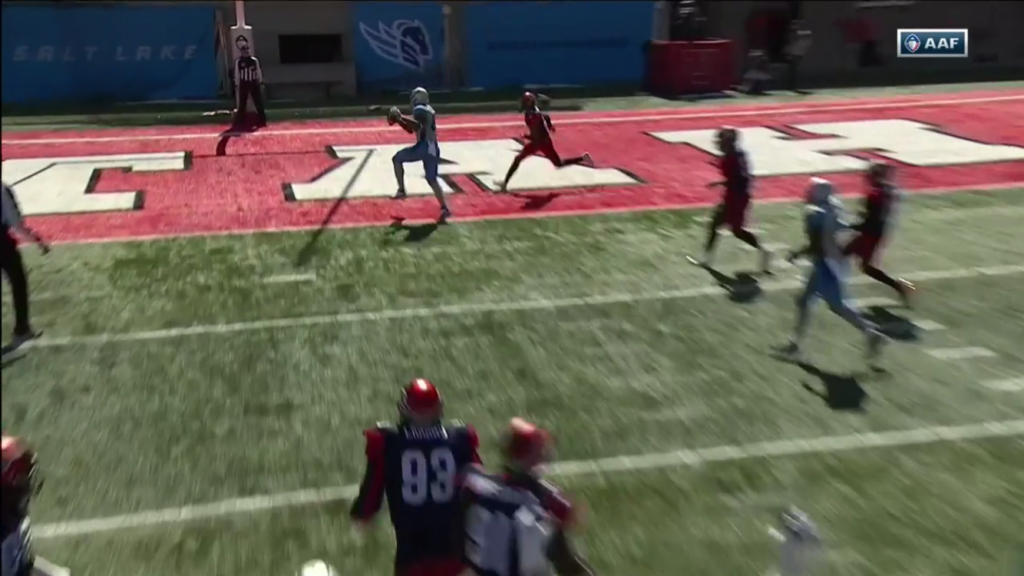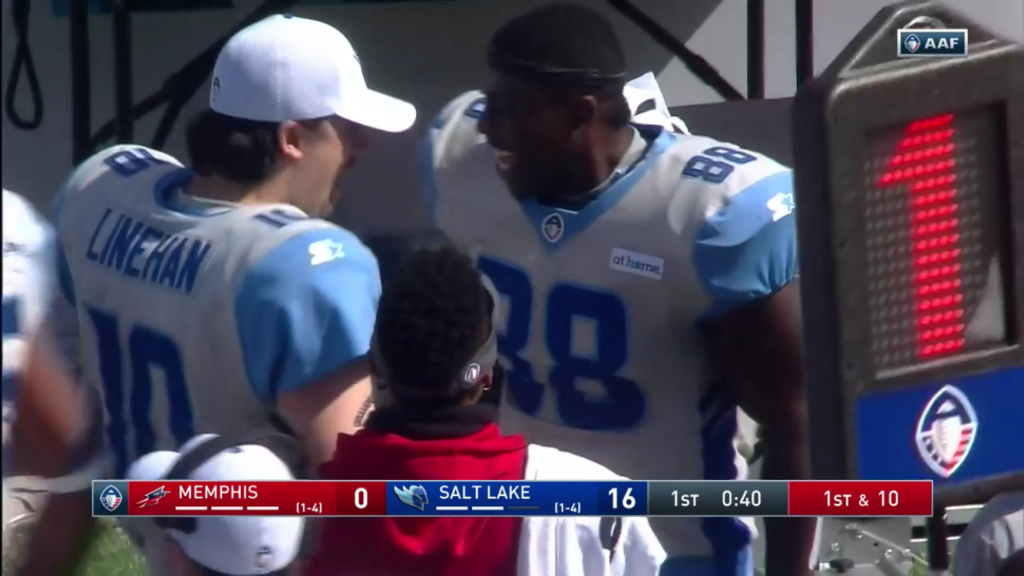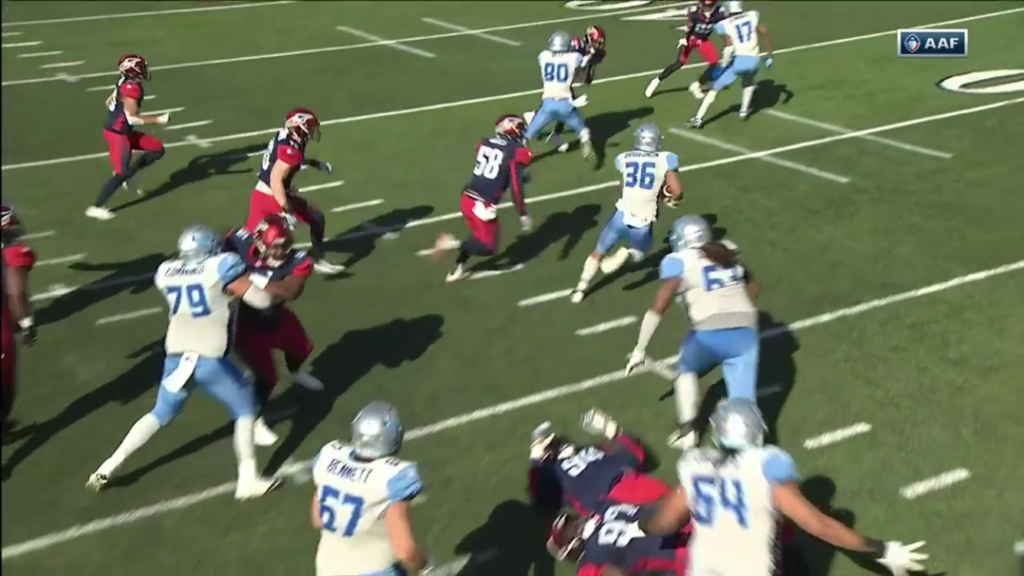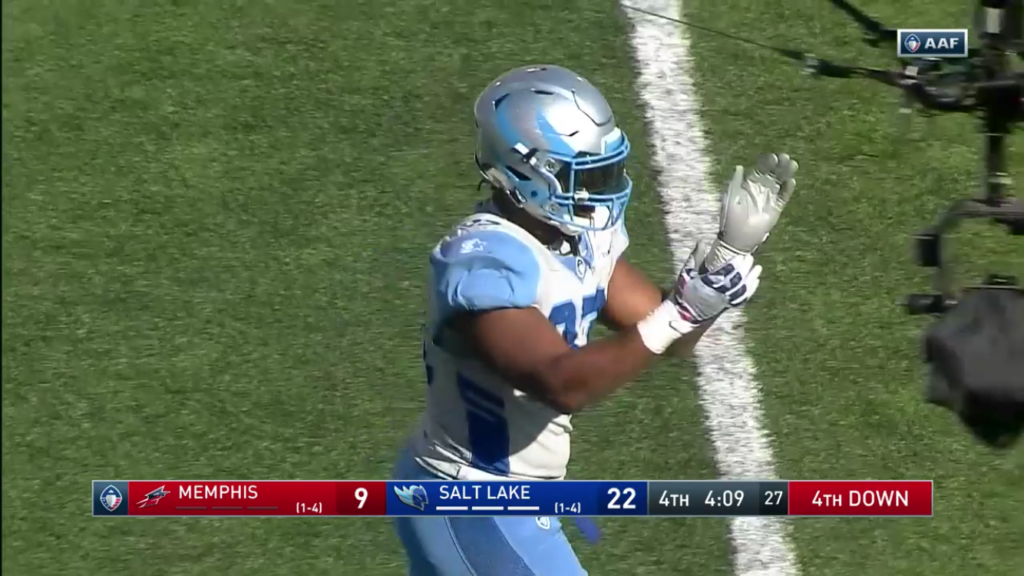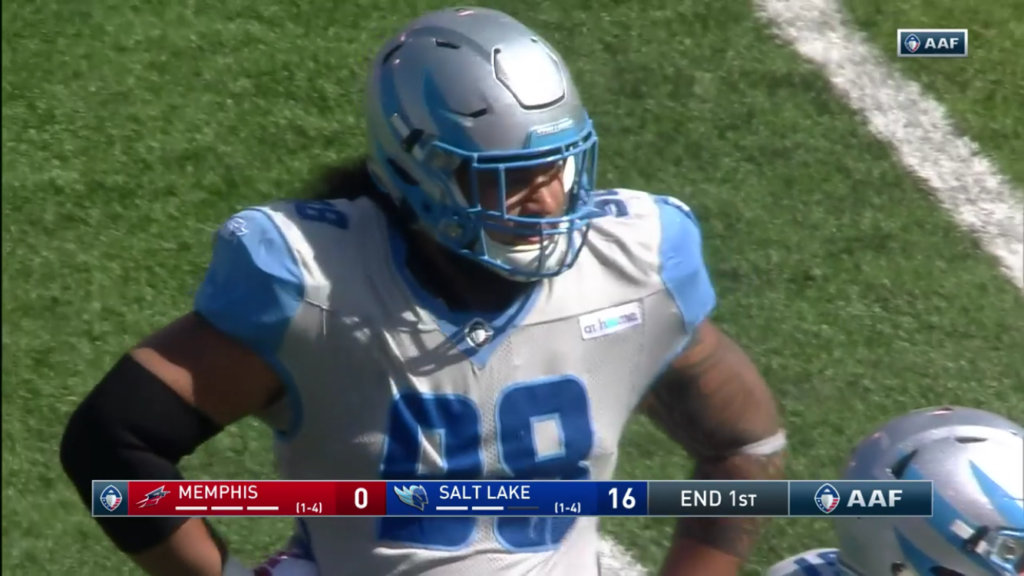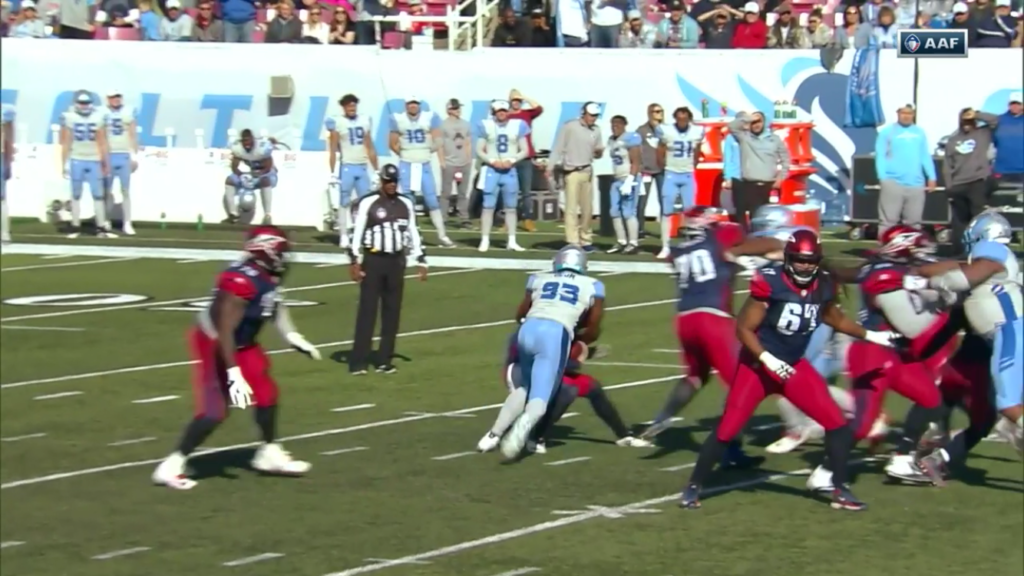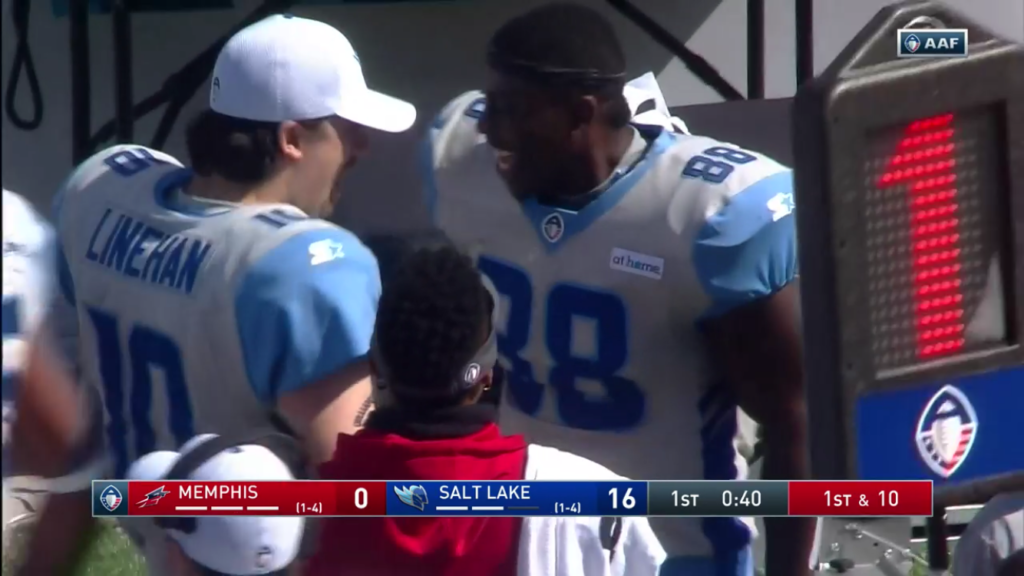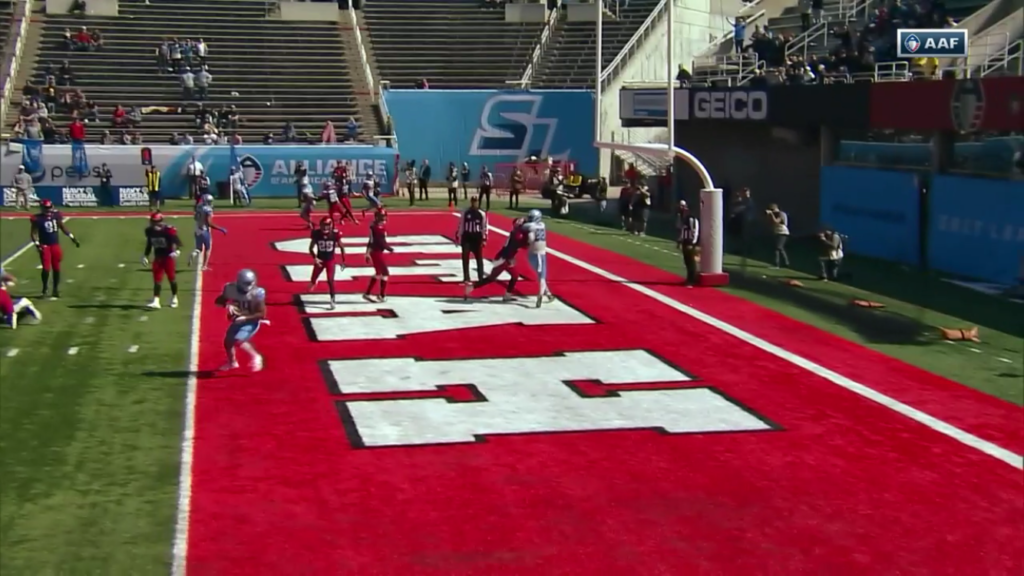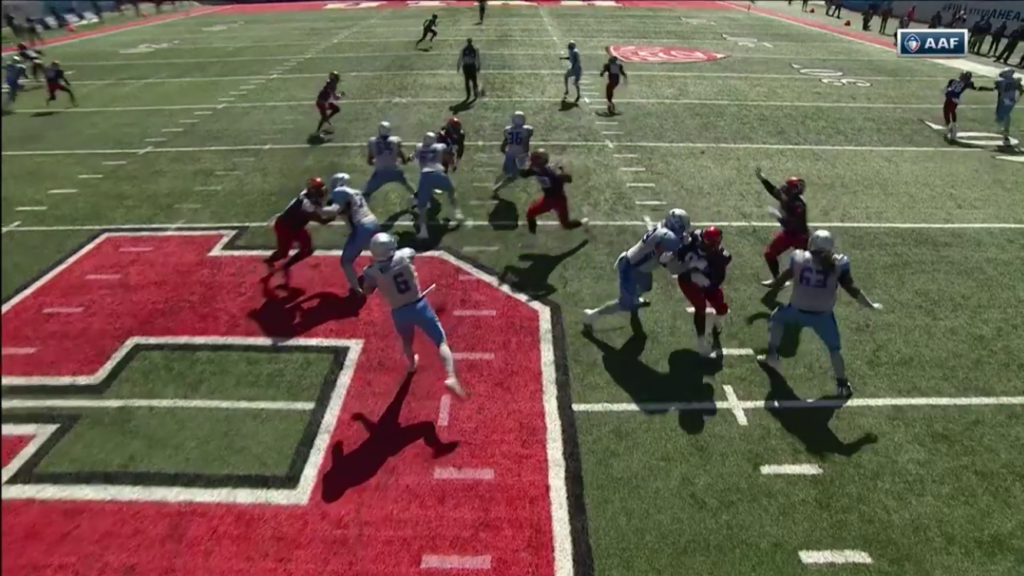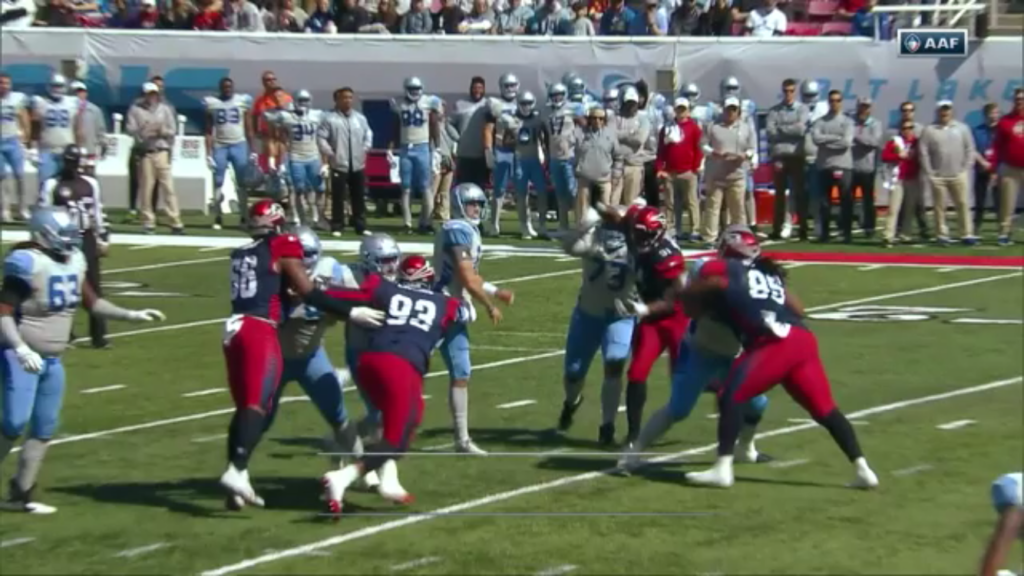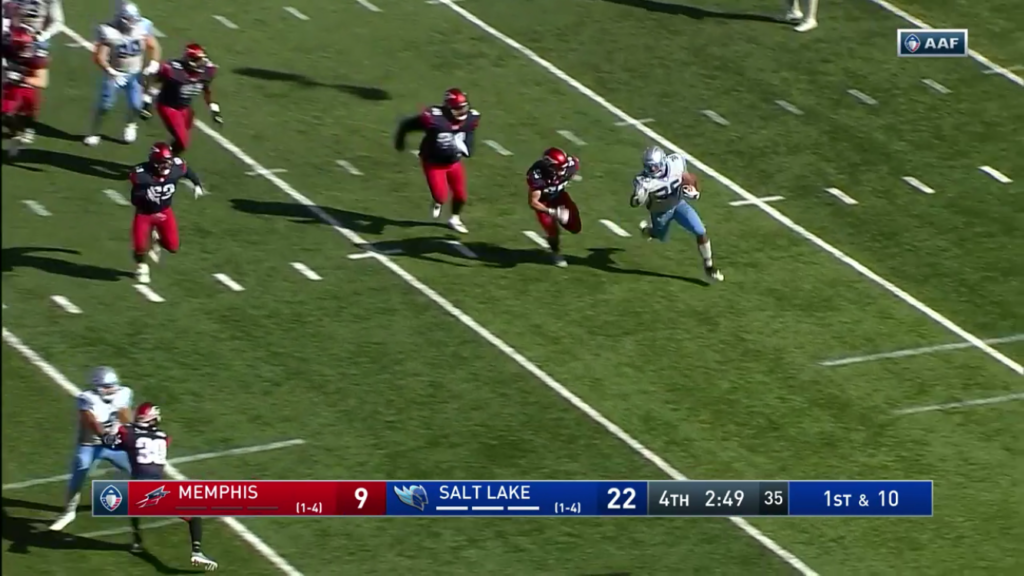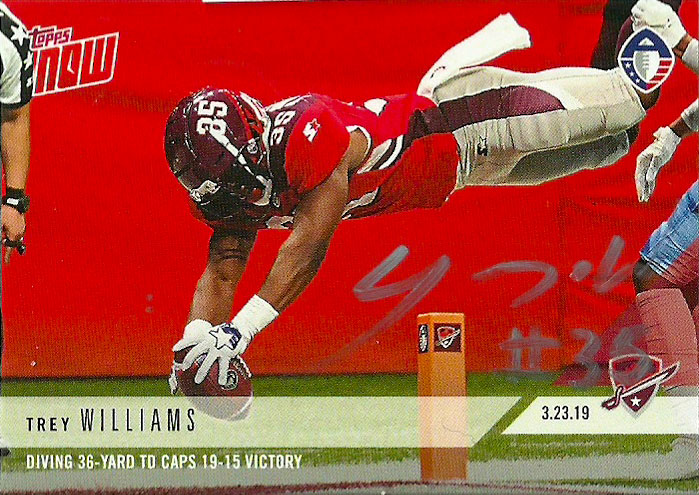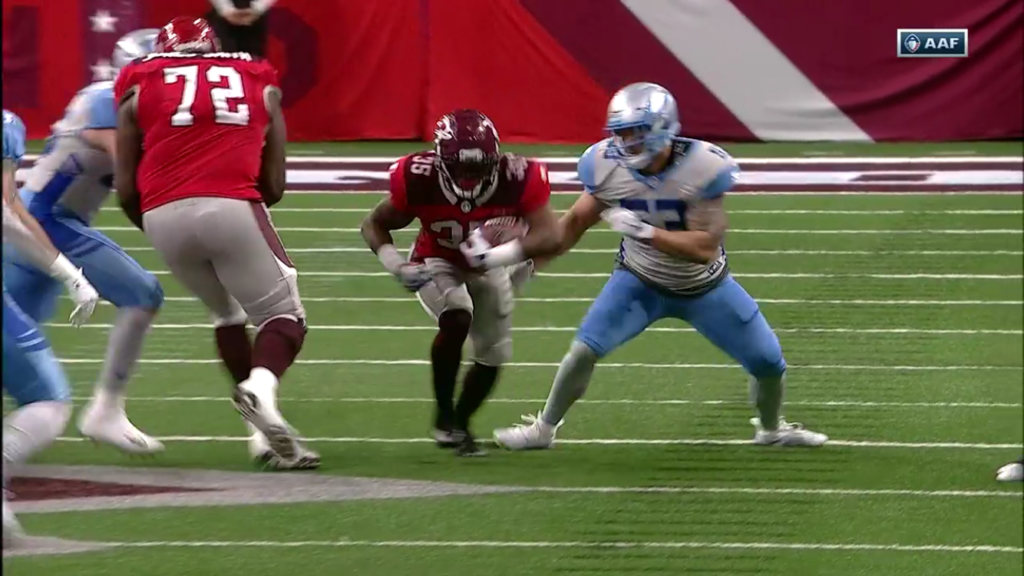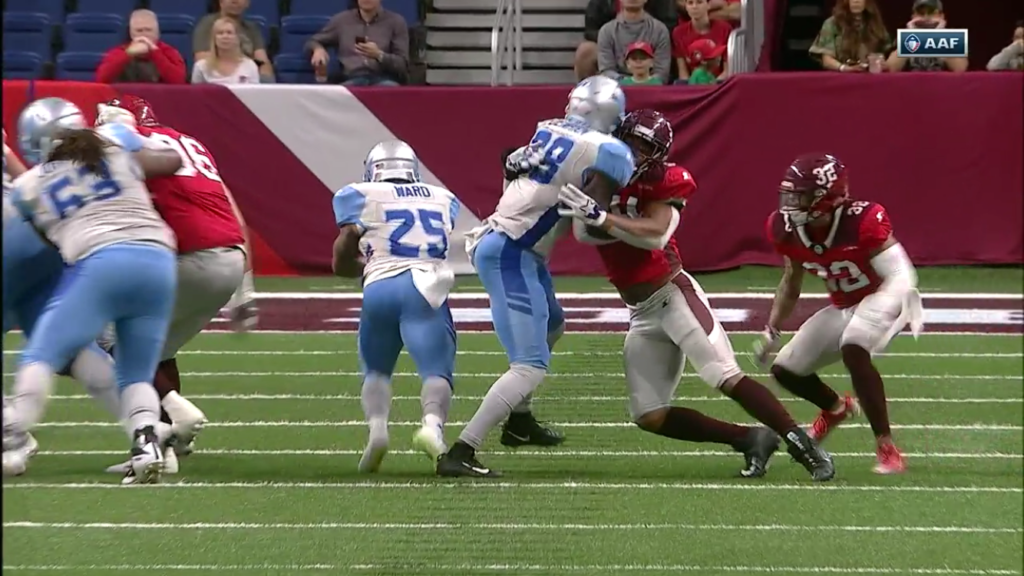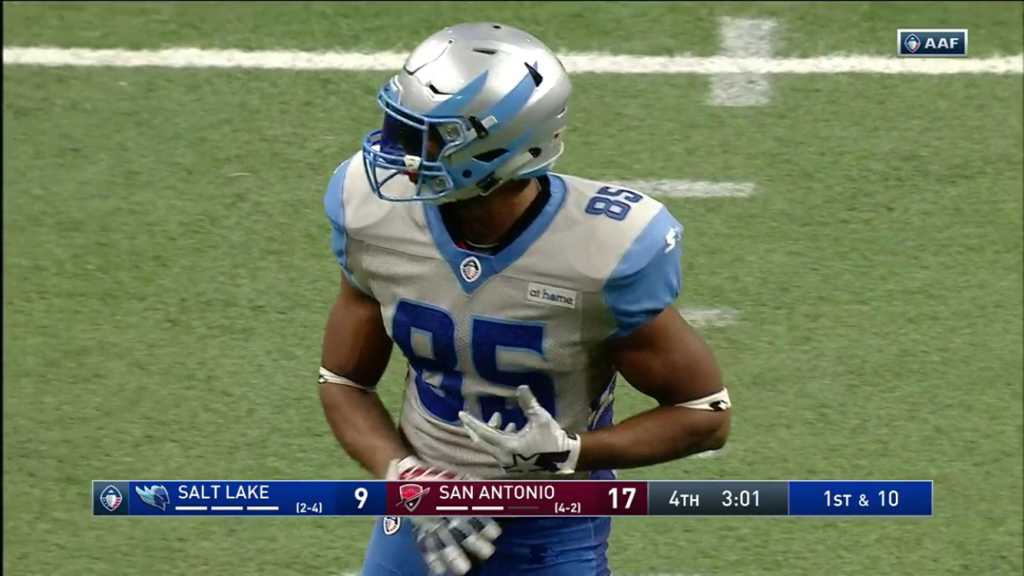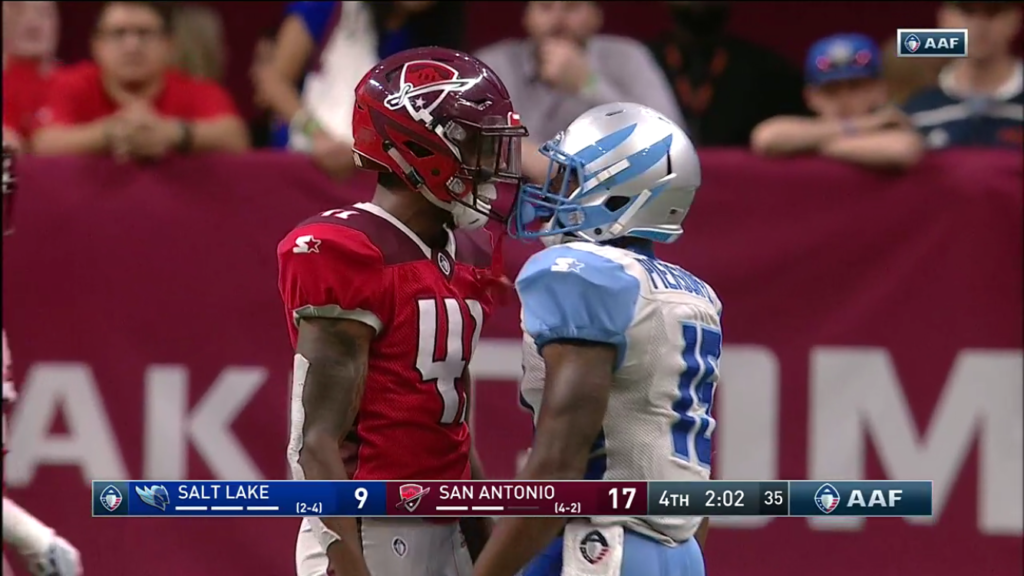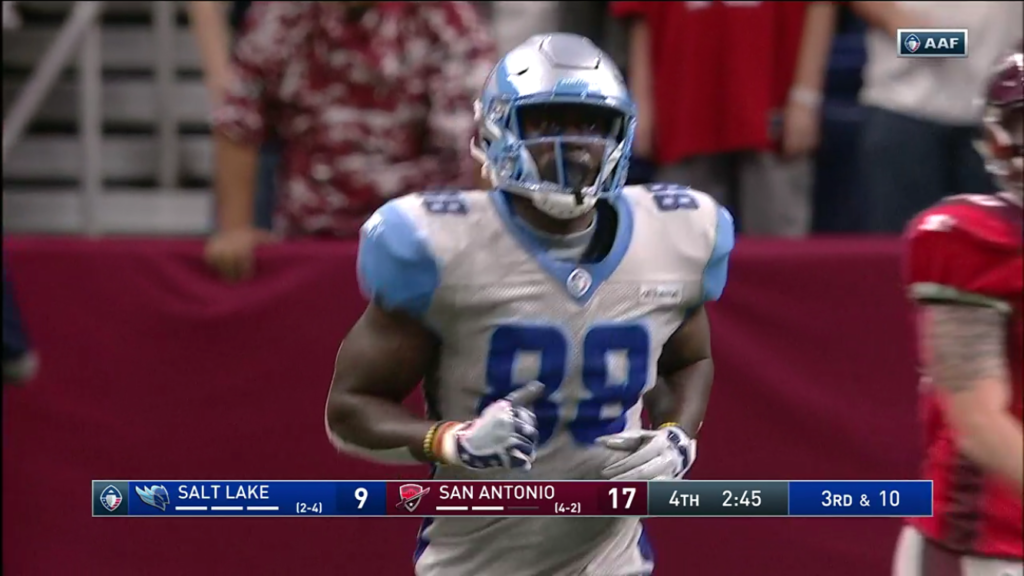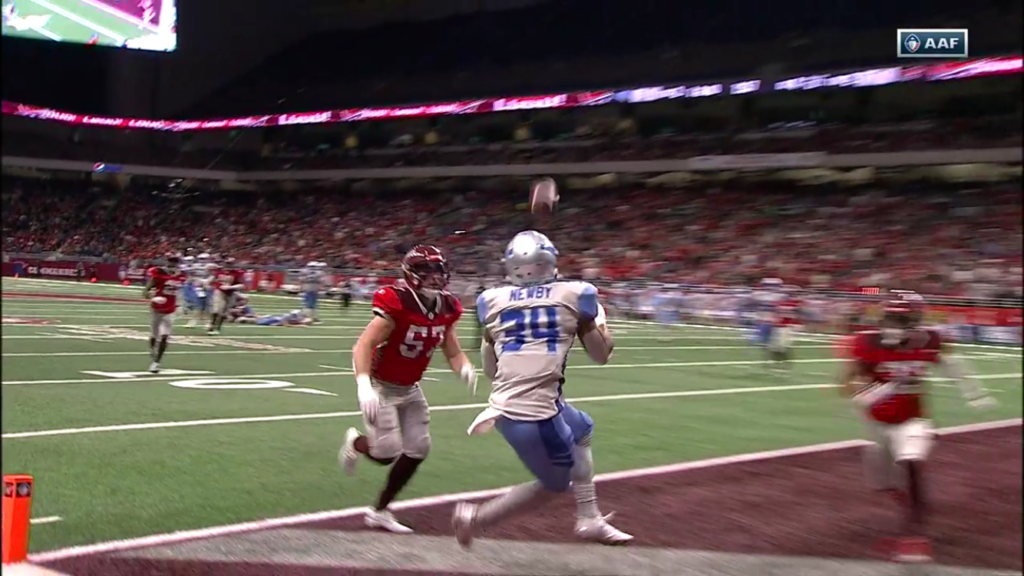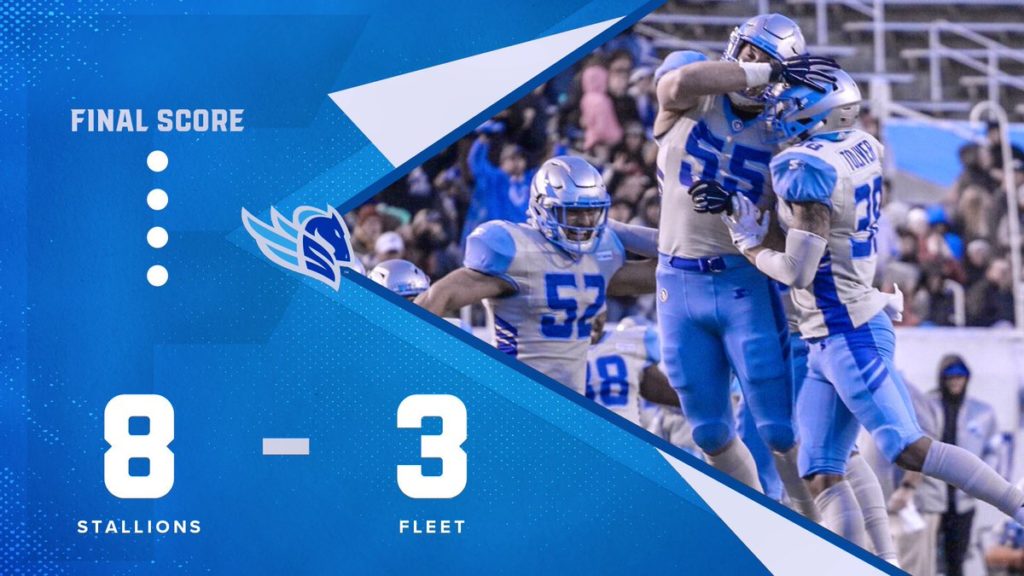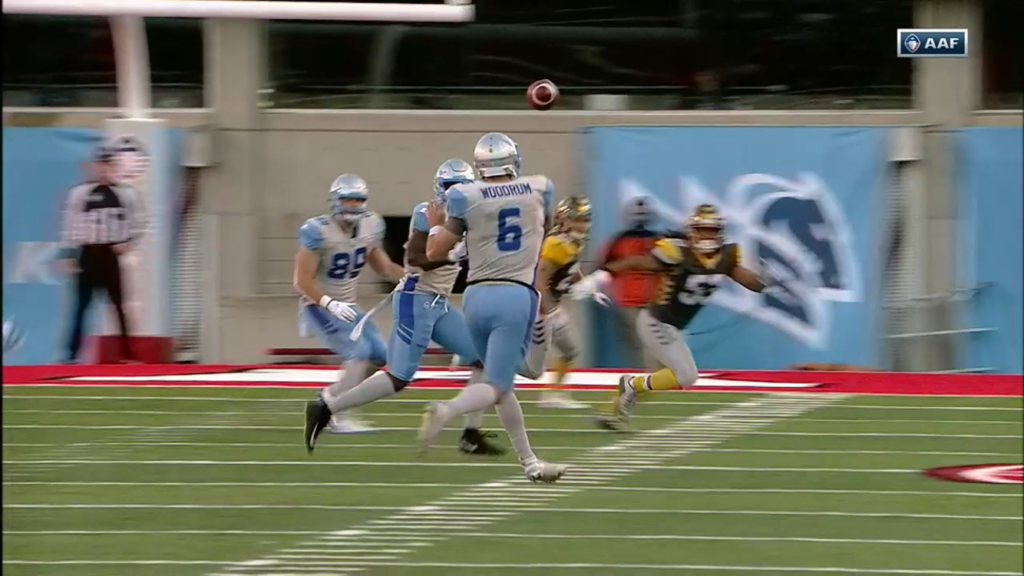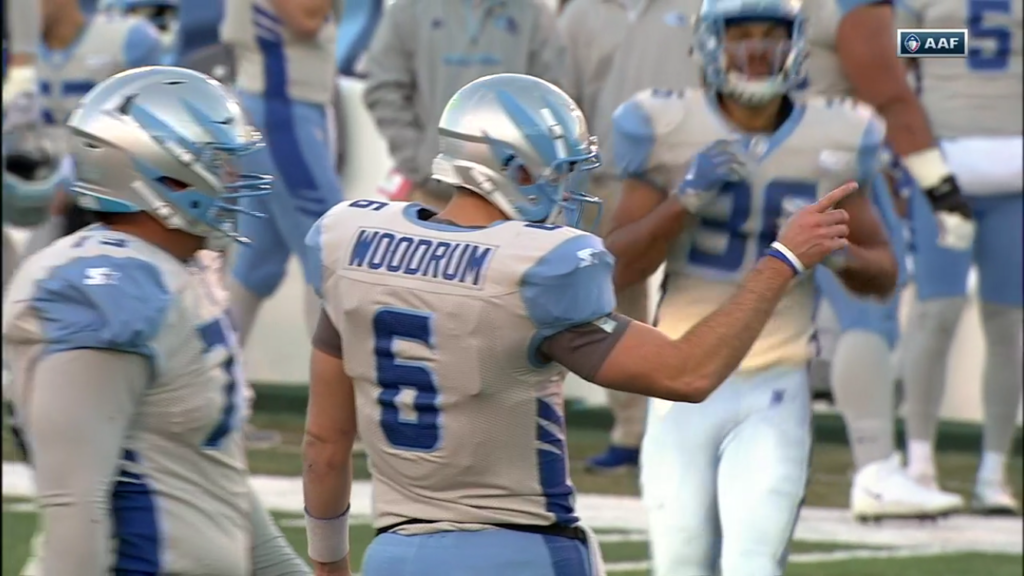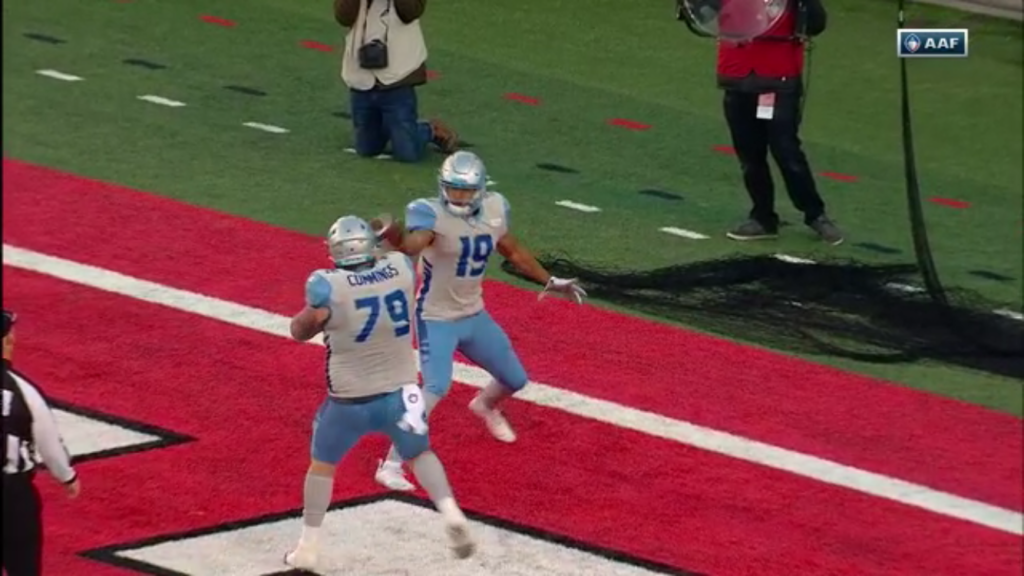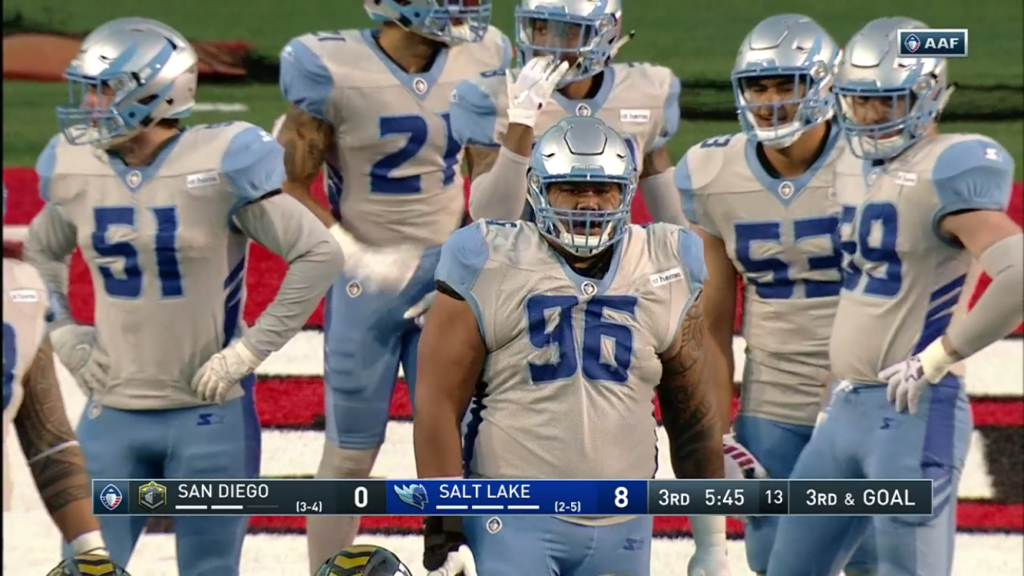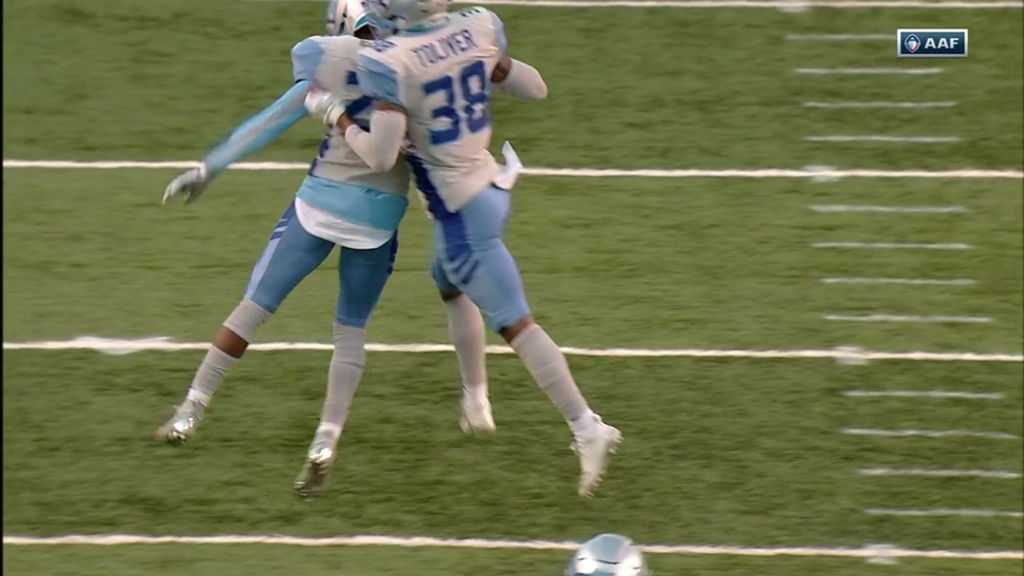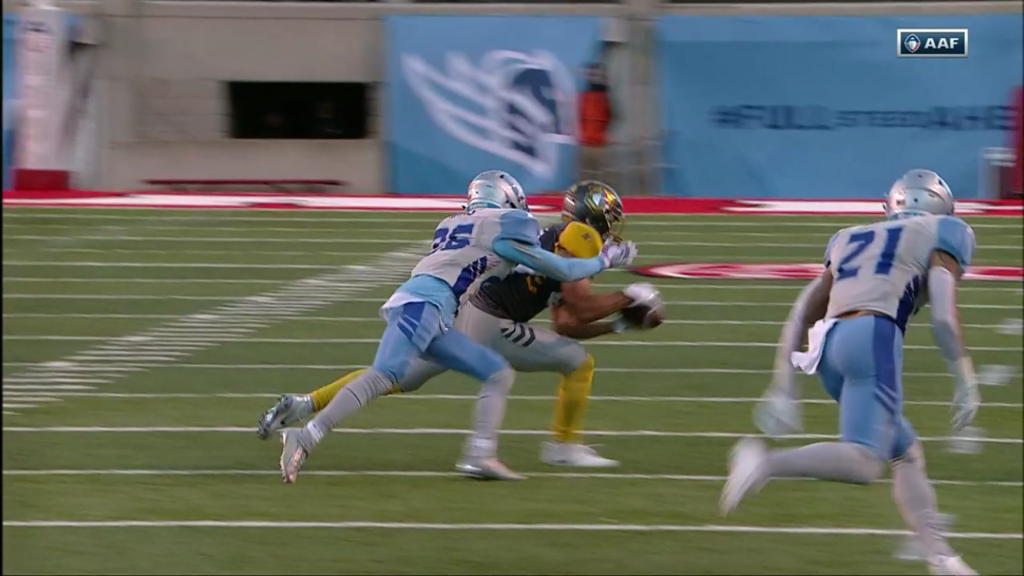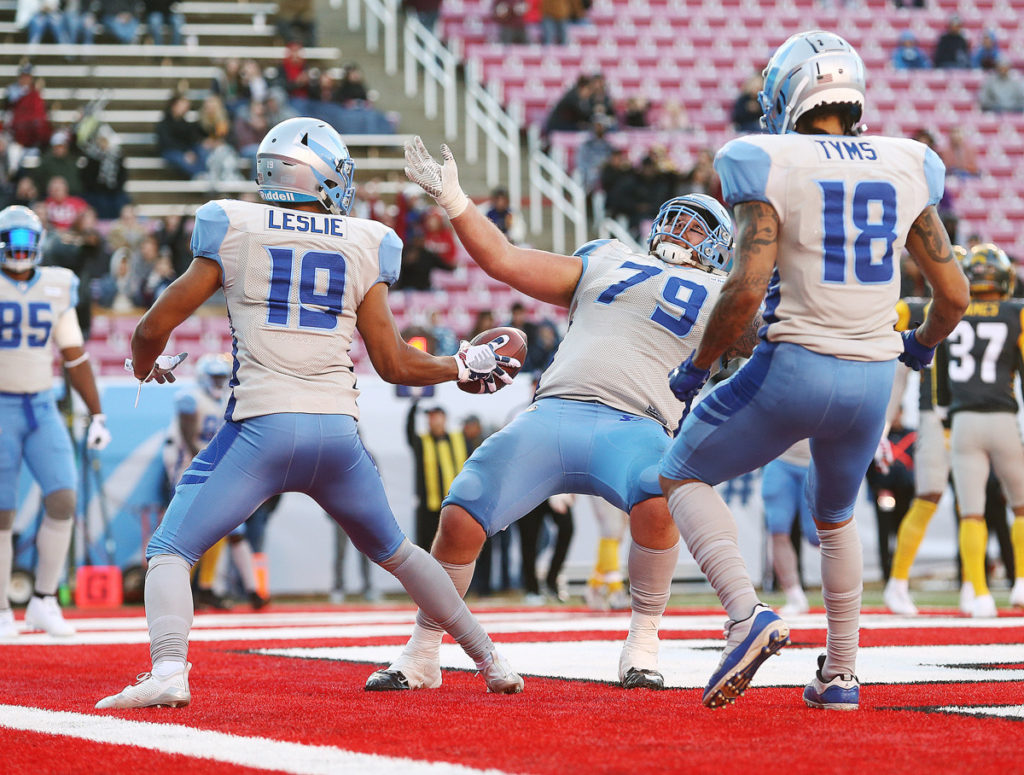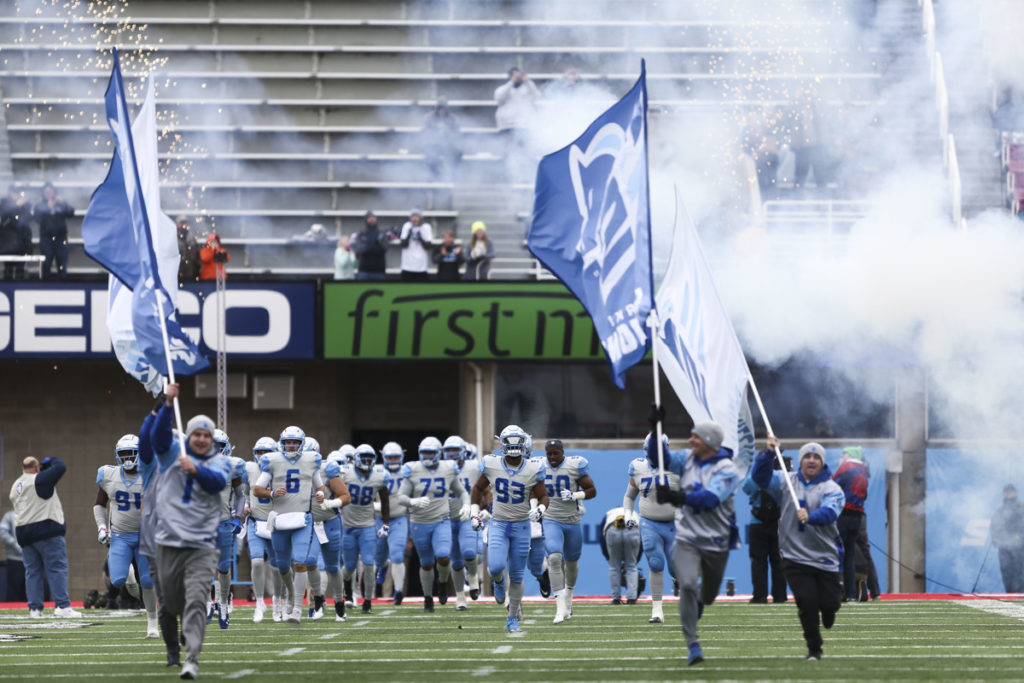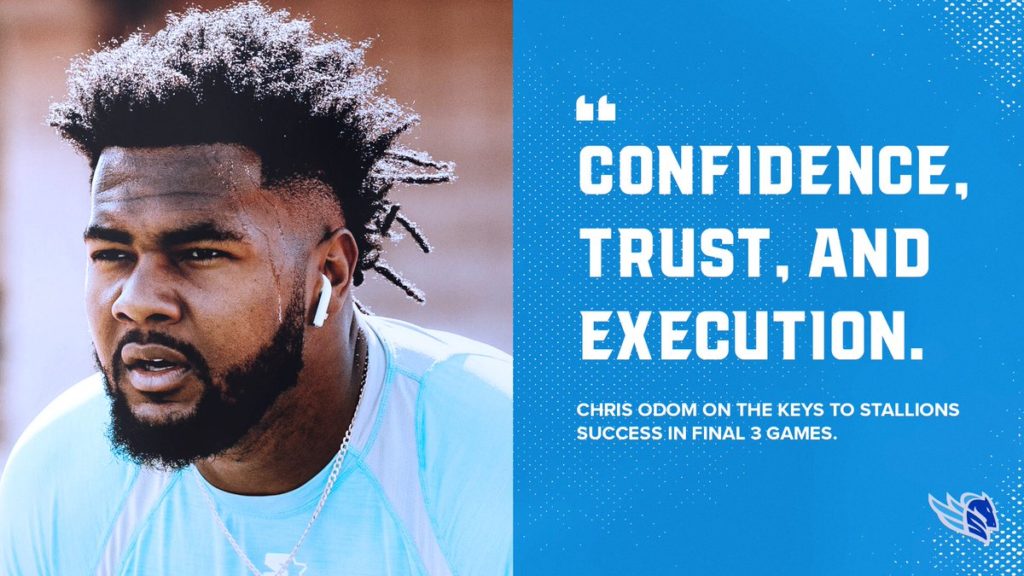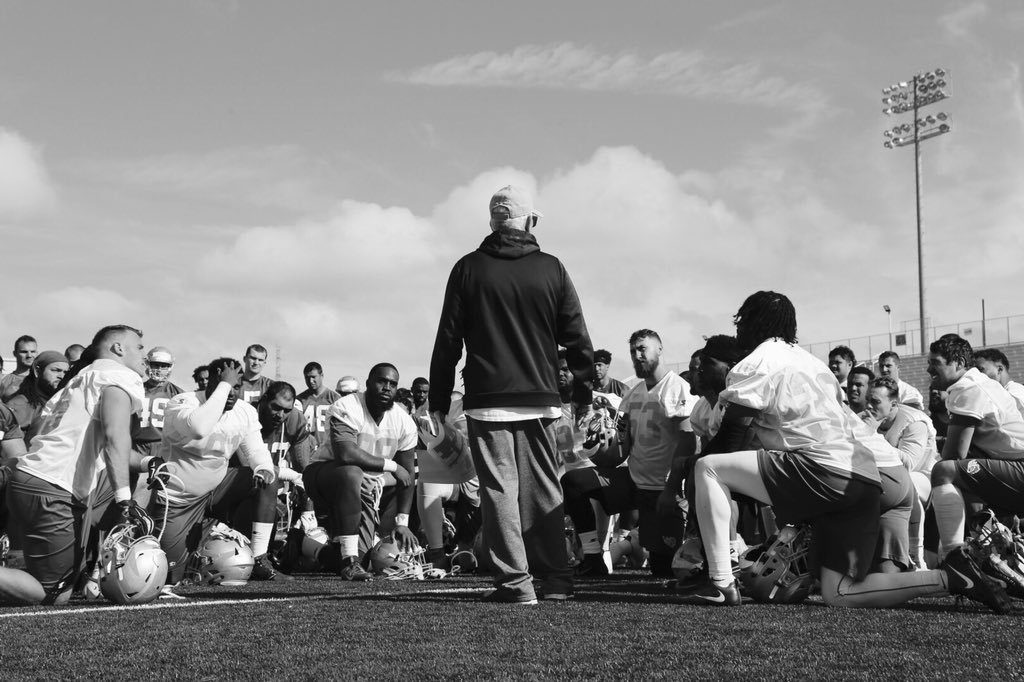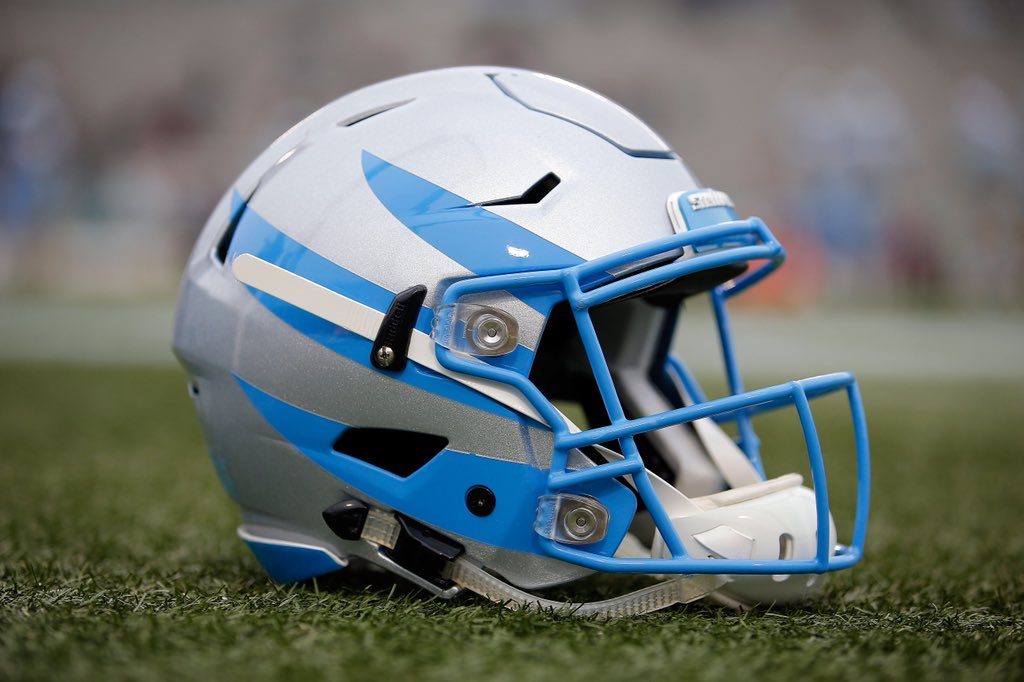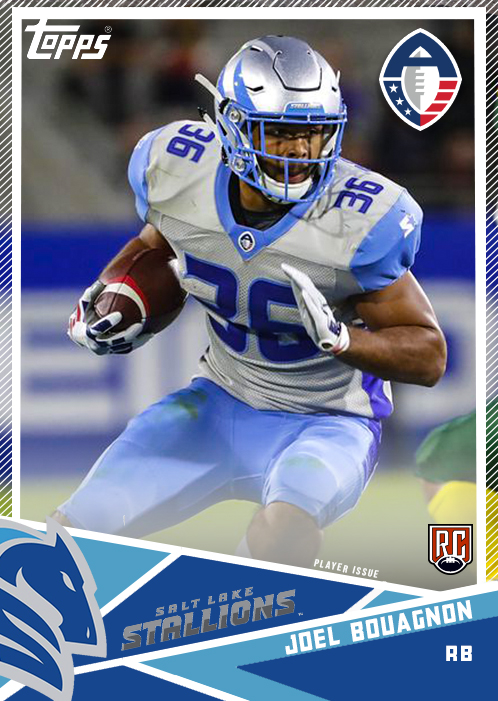
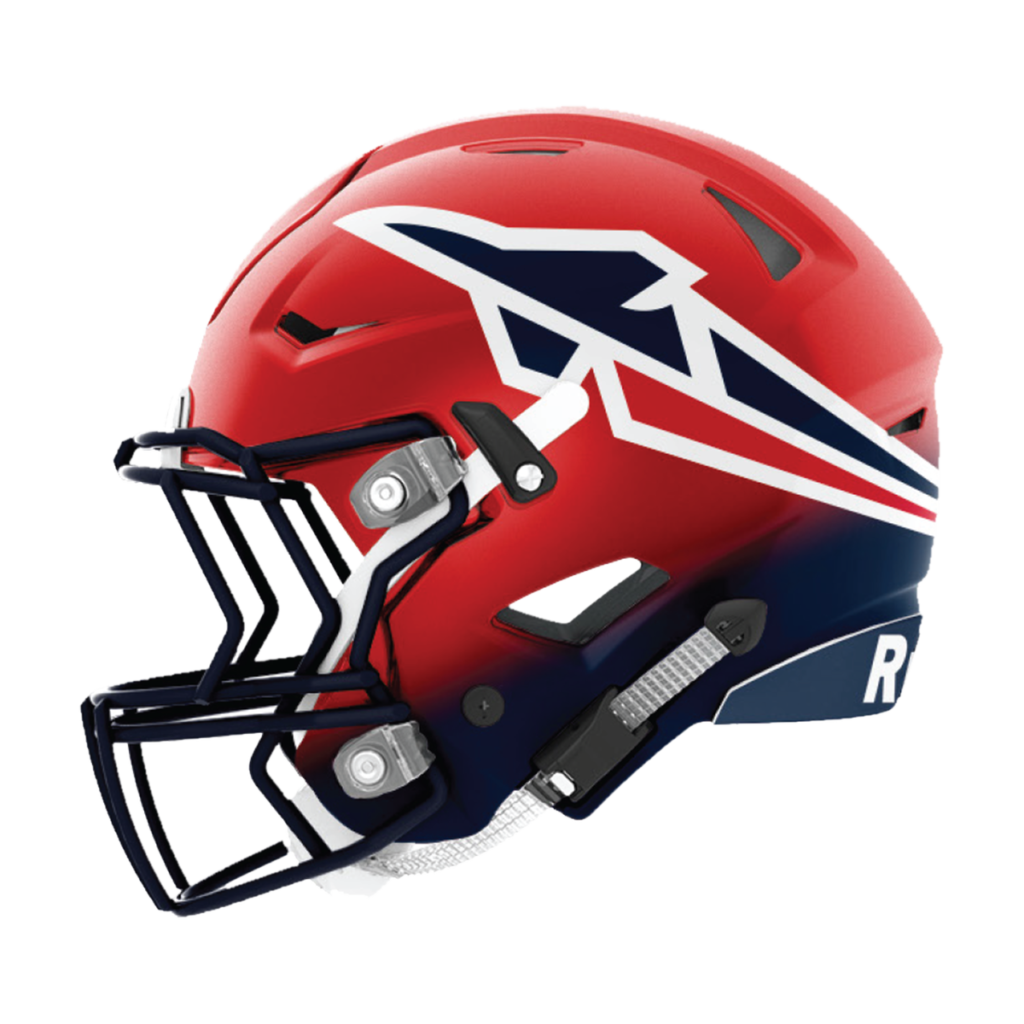
Record: 2-6
Coach: Mike Singletary
Stadium: Liberty Stadium
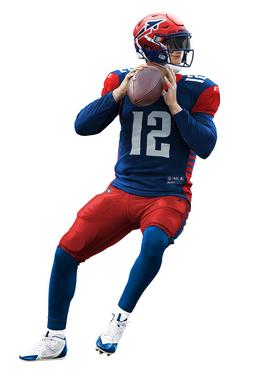
BACKGROUND:
Memphis was the third city named to the AAF back on May 4th, 2018. It made sense, as the city fit the footprint of the former XFL with the Memphis Maniax and their continued support for the NBA Grizzlies. It also had a rich history of hosting other franchises over the last 30 years including the Showboats (USFL) and briefly, the Tennessee Oilers. Memphis is at a crossroads of sorts in the Mid-South and that’s part of its problem with attracting sports franchises and teams. Much like San Antonio, Memphis isn’t really a sexy pick, so it always ends up playing the role of the handmaiden, as its neighbors pick up all the glory.
About a week after the city was named, Memphis’ new coach was announced, and boy did it have a nice buzz to it, as former head coach Mike Singletary was returning to the big stage. It had the trappings of the feel good story of the year. He’d assemble his coaching staff which included such former NFL names as OJ Otowge and Pepper Johnson. Dennis Thurman, David Lee, Hal Mumme, and Tom Mason were also notable coaching finds with considerable experience.
At first I sort of shrugged my shoulders at the logo. I felt it was a bit too close to the league logo colors, and that the Express name and colors were a bit too easy to name after the delivery service. Nonetheless- it grew on me throughout the season, and by the end of the season, it was quite lovable.
The team name comes from the fact that Memphis “is one of the leading centers for logistics and transportation. In fact, Federal Express is based out of the city. So intangibly, speed and precision come along with that.”
– According to Kosha Irby, the Express’ President.
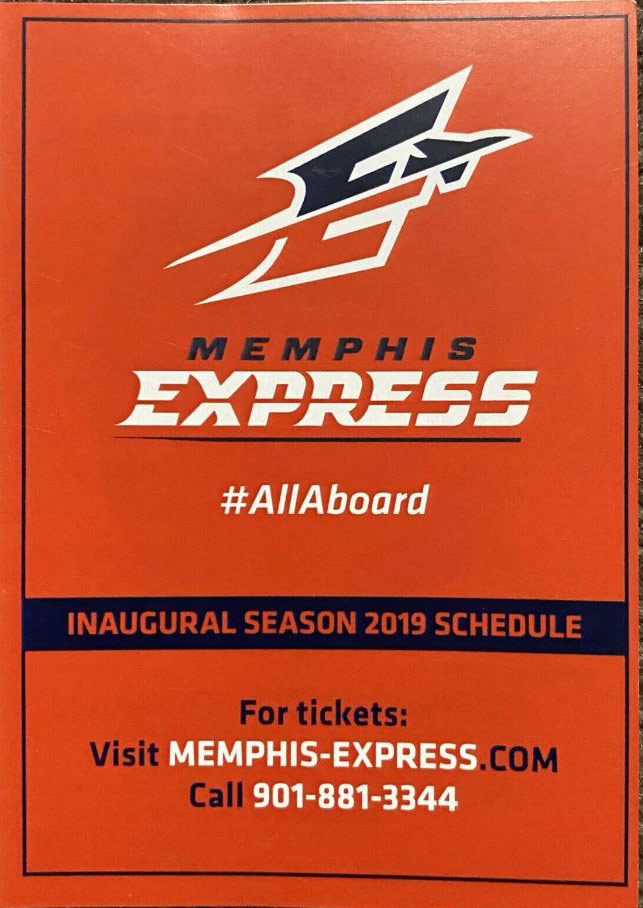
When it came to big names to associate with the team when it launched, Mike Singletary was the uncontested big name. Team president Kosha Irby also had some buzz since he was a Memphis alum as well. Zac Stacy, Kenny Hilliard, and Chris Givens were all interesting players that Memphis signed early on that fans had interest in.
An intriguing find was ‘architect of the Air Raid Offense’- Hal Mumme- to be the offensive coordinator. With him in place, it looked like Memphis was going to be a tough team to beat in the East.
“Hal Mumme brings many positives to our team and offense,” Express coach Mike Singletary said in a press release. “First and foremost, it’s his creativity. I know it’s called the air raid system, but I want to use his imagination to get into the end zone and bring balance to the offense. I know the physicality that I want to have on our team. I want to bring muscle to the passing game.”
-Mike Singletary
Oddly around two weeks later, Mumme was out of the picture. The franchise and Hal had a ‘mutual parting of ways’- just 6 days before the Quarterback Protect or Pick Draft.
Whatever prevented Hal Mumme from becoming OC was the start of it. It could have been great with him but the team ended up going with David Lee, bad decision. The offense was getting progressively better once Bobby Blizzard came into the picture.
-Express & Goal Sports or Something
@MemphisAAF
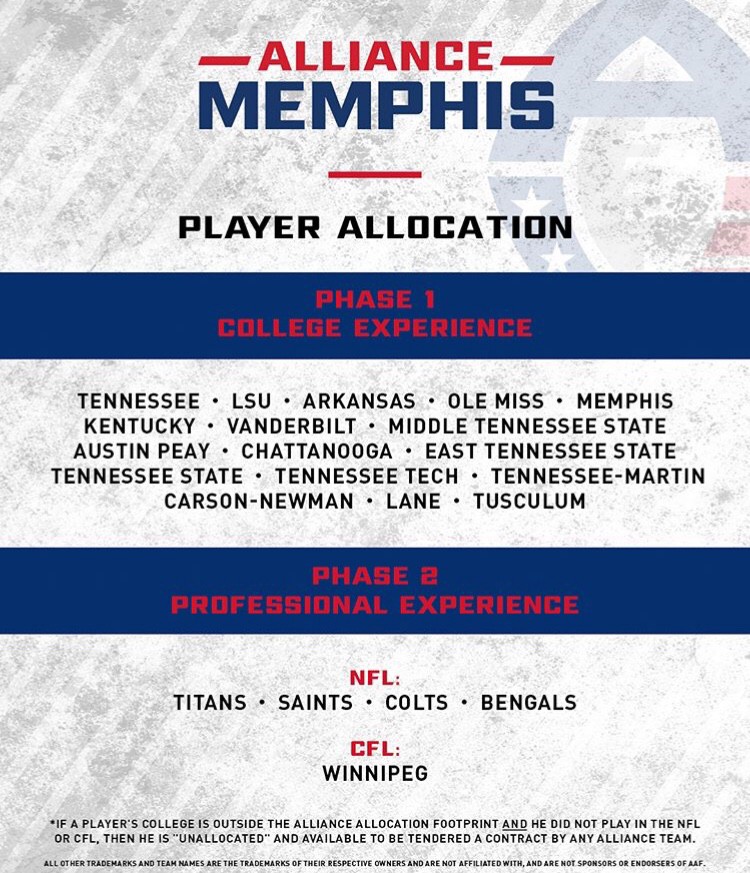

OFFENSE:
And with the 3rd pick of the 2019 AAF quarterback draft, the Memphis Express elected to protect… Troy Cook, QB- UT Martin.
Insert audible gasp here. Not just any gasp- No. Let’s go with like the first time patrons at the Detroit Auto show saw the Pontiac Aztec type gasp. The Express didn’t select again until the 15th pick of round two, when they chose Christian Hackenberg. So there you have it. Lovable Memphis’ problems in an nutshell. Cook it turned out was the only player selected in the first round of the AAF QB draft to not even make it out of training camp. Hack would be the starter out of the gate, backed up by overlooked Zach Mettenberger, and Brandon Silvers.
Hackenberg represented just as much the feel good story that Singletary did, and in camp he showed a lot of promise. He had an excellent preseason game against SLC– posting 128 yards and a TD on 9/15 passes. Then the bottom fell out. Hack started 3 games before he yielded to Mettenberger. Under constant pressure with receivers dropping passes left and right, Christian finished with 277 yards passing and zero passing TDs in 2 and a half games.
Zack gave the Express some oomph that they really needed. Mettenberger sat in the green room of the QB Draft the longest- as team after team passed on him, but he’d show how wrong they were over the next few weeks. Taking over for Hack during the second half of the Orlando/ Memphis tilt, Mettenberger passed for 2 TDs and a 2 point conversion to get things rolling. He’d then have a solid contest against the Fleet in Week 4, leading the team to a win as he threw for 174 yards and a TD, while rushing for one more. He’d then lose a heartbreaker to Atlanta in the final seconds of regulation in Week 5. Things were moving in a positive direction, but Zack on the first offensive play from scrimmage against the Stallions in Week 6, got taken down awkwardly by Karter Schult. Zack’s season was over.
Enter Brandon Silvers. Just looking for a chance, Silvers came in and put on a show for the Express. Over the next 3 contests he’d set team passing records every week despite the fact that (after losing to the Stallions,) things went a bit off the rails as Johnny Manziel joined the Express…
For some reason, Memphis just kept trying to put Johnny in the lineup despite Silvers’ offensive rhythm. Johnny threw for 61 yards and a pick, while running 5 times for 38 yards over the final two weeks of the AAF season. In the meantime, Silvers beat the Iron, passing for a franchise high 266 yards 2 TDs (24/35), and two 2 point conversions. (It would also be the only OT game in league history.) Silvers then put on a show against Orlando, as Memphis almost upset the champs, losing to them in the final seconds of the final game of the year. Thanks in part to those dismal first few games, the Express finished with the worst passing offense in the league averaging 179.2 yards per game.
The rushing offense was led by former pros Zac Stacy and Raijon Neal out of the gate. Stacy would go over 100 yards in the second game of the season, as the team continued to search for an identity. After that strong performance early in the year, Stacy waddled in with 312 yards on 101 carries. He’d lead the team with 3 rushing TDs including a 49 yard long- but finished the season on IR. He also caught 18 passes for 138 yards and a TD- to rank second on the team. Terrence Magee gave it his best shot. The diminutive back clocked in at 5-8, 213, but rushed for 134 yards on 40 carries and 2 TDs. He was second among the Express RBs with 11 catches and a TD. Sherman Badie saw action in 3 games starting 1. He’d run for 74 yards on 16 carries and catch 3 passes for 87 yards. Kenny Hilliard and Rajion Neal lasted all of two games apiece, while Anthony Manzo-Lewis saw limited action in all 8 games as the fullback. The rushing offense finished with 694 yards- good for 7th in the league.
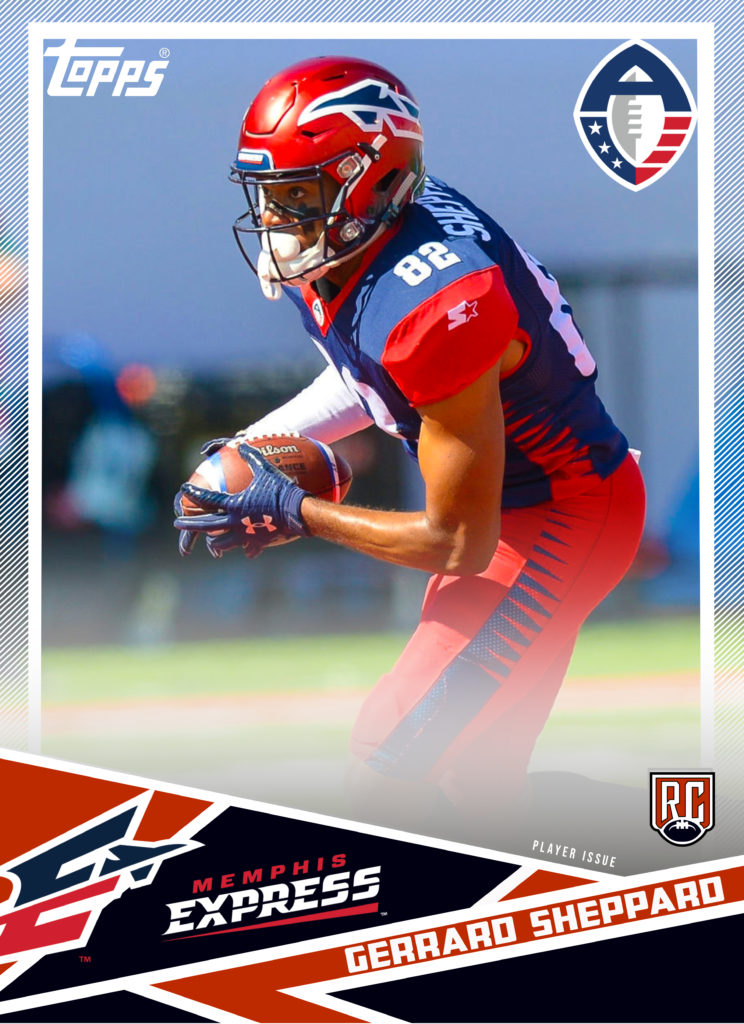
The team’s secret weapon was WR Reece Horn. As Memphis’ offensive identity began to coalesce, it was really apparent that he and Silvers were forming a good rapport. Reece posted back to back 100+ yard games against the Stallions and Iron in week 6 and 7 and finish with 429 yards on 28 catches. Pig Howard started 5 games and snagged 17 receptions for 157 yards from the slot. Gerrard Sheppard started on the other side of the field from Horn.
He posted 12 catches for 155 yards and a 40 yard TD. Daniel Williams saw action in 4 games, starting 2. He’d finish tied for 3rd in receptions with 17 for 164 yards and a TD. Dontez Byrd saw action in 6 games behind Sheppard. He’d have 10 catches for 131 yards and a TD. Devin Lucien started a game and played in 5 managing 9 catches for 113 yards and a 30 yards TD, while Fabian Guerra and Kayaune Ross contributed to a limited degree as well.
Memphis’ tight end group was led by Brandon Barnes. As most targets were going to the receivers, and the offensive line needed all the help they could get on passing downs, Barnes finished with 9 receptions for 75 yards. He was backed up by Adrien Robinson, who had very similar stats with 7 receptions for 40 yards.
The offensive line had some terrible days punctuated by some individual highlights. The line finished in a 5 way tie for last, giving up 23 sacks. Christian Morris (LT), Davonte Boudin (LG), Demetrius Rhaney (C), Dallas Thomas (RG), and Toby Weathersby (RT), made up the starting group. The Express sported the worst 3rd down conversion rating in the league with a dismal 25% (27-106).
DEFENSE:
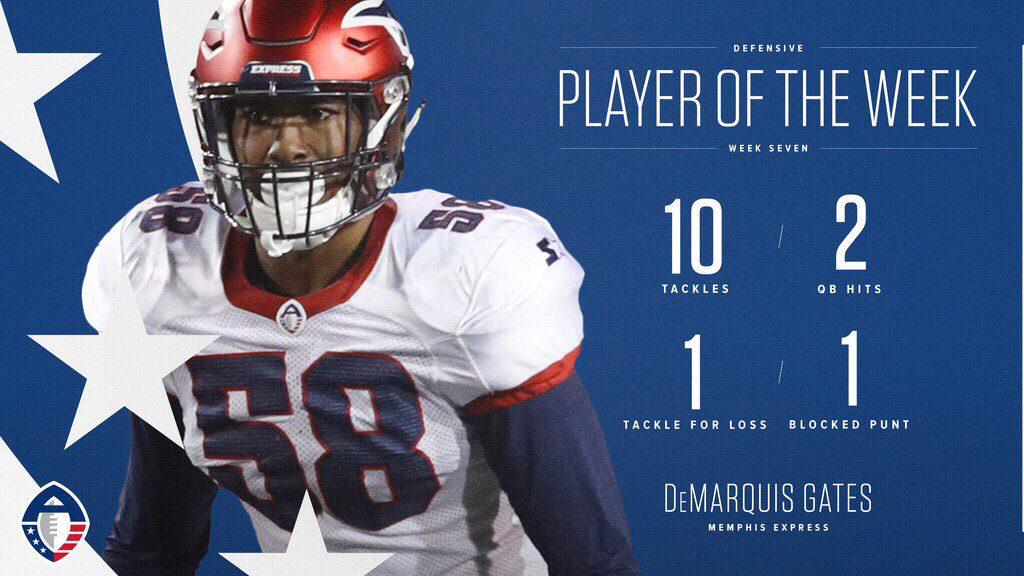
(4-3) The Express front four from left to right consisted of Jamichael Winston, Julius Warmsley, Latarius Brady, and Corey Vereen. Vereen led the front four in sacks with 4 (12 tackles, 2 forced fumbles). Jamichael led the down linemen in tackles with 18 (.5 sacks). Warmsley had 2.5 sacks and 16 tackles, while Latarius had 8 and a sack. Greg Gilmore was a sneaky 2 gap nose who came in and posted 2 sacks and 11 tackles. ‘Kimbo’ Johnson arrived and blew by defenders during the regular season for 2 sacks. Outside of that Montori Hughes, Corey Crawford, and Martin Ifedi combined for maybe 10 tackles.
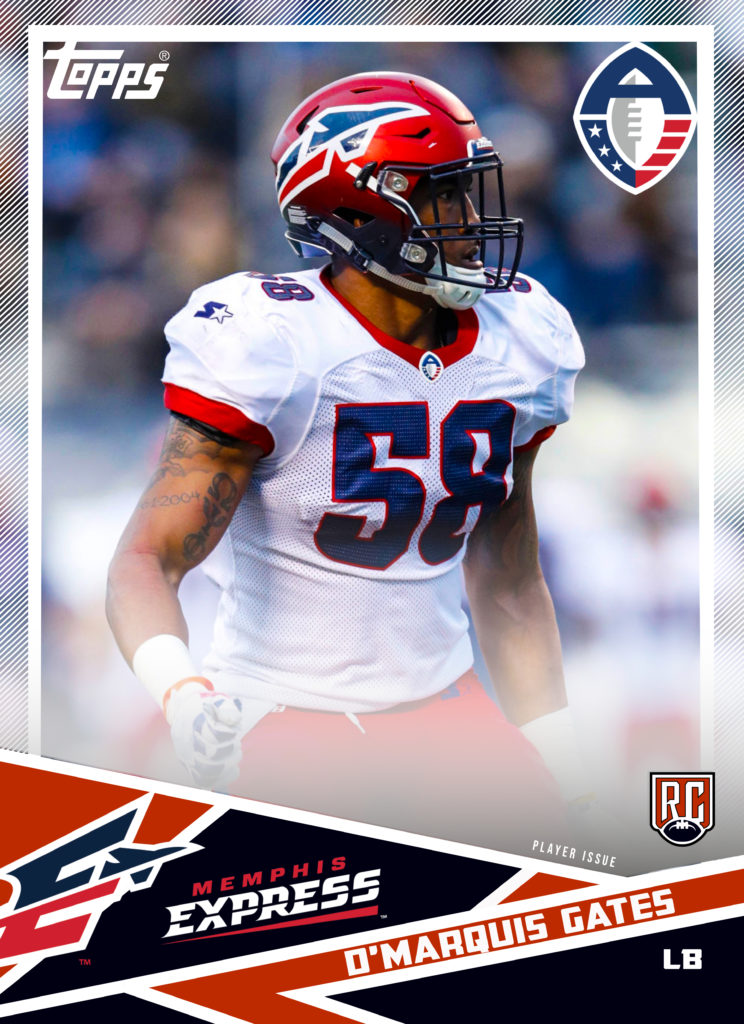
With a coach like Mike Singletary- you know that this team would pay special attention to its middle 3. With that being said Drew Jackson, Davis Tull, and DeMarquis Gates had productive seasons. Gates led the AAF in tackles and was named Defensive Player of the Week. He finished with a line of 72 tackles, a sack, and 5 forced fumbles on the year at weakside linebacker.
Davis Tull in the middle out of UT- Chatanooga had 37 tackles, a sack, and a fumble recovery. Andrew ‘Drew’ Jackson took no prisoners either from strongside finishing with an impressive 52 total tackles, a sack, an interception, and a forced fumble. Backing them up was Freddie Bishop and Quentin Gause. Colton Jumper floated around as an elephant back between the secondary and linebacker corps and had 25 tackles. Of note- Gates and Jackson finished first and second in the league in Tackles for Loss.
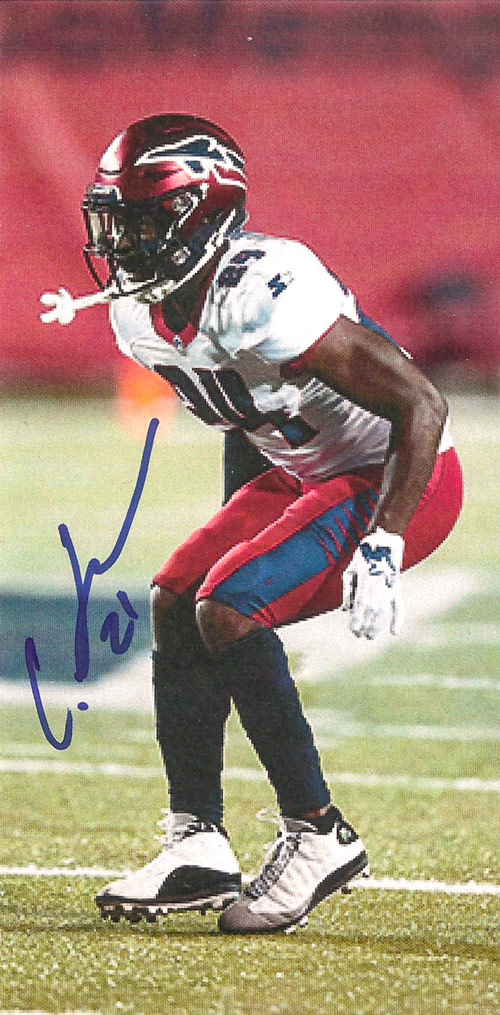
The back 4 was led by Arnold Tarpley at free safety who had 44 tackles and a pick. Former Texan Charles James II came out of nowhere to have 25 tackles from CB starting 3 games. Channing Stribling had an interception and 19 tackles in 6 starts (8 games). Jonathan Cook also picked up a pick and 8 total tackles playing in 6 games. Justin Martin started 2 games (5 played) and managed to have 9 tackles and an interception. Jeremy Cutrer came out of Middle Tennessee State to start 6 games.
He posted an interception, 2 fumble recoveries, and 20 total tackles. Brandon Maiden also chipped in 7 tackles. Of note, no player on defense had more than 1 interception, and no player other than Charles James had NFL experience.
Overall defensive numbers looked average at best as their 3rd down defense came in around the middle of the pack allowing 34% conversions. The Express made only 17 sacks, ranking 6th, while their turnover differential wasn’t too bad, coming in flat at -1. Unfortunately they allowed the most big plays in the league (72+).
SPECIAL TEAMS:
The special teams were just as incongruous as the rest of the team.
Reece Horn juggled #1 receiving duties also with being the team’s primary punt returner. He had 9 returns for 125 yards including a 33 yarder he almost broke to daylight. Amir Carlisle had 4 returns for 17 yards, while Sherman Badie, Dontez Byrd, and Pig Howard stood back to return a combined 4 times.
Brad Wing started out as the punter, but he’d be cut a few weeks into the season. He finished with 16 punts for 705 yards, 6 inside the 20 and a puny net of 41.5. He was replaced by Ryan Winslow, Winslow really boomed his kicks averaging 48.4 yards per punt (27 punts), dropping 10 inside the 20 (2 touchbacks), and nailing a 68 yard long.
Hometown Josh Jasper started as the kicker for the Express but he too cut after going 3/5- but missing 2 field goals over 40 yards. Austin MacGinnis replaced him at kicker and finished 9/11 on field goals including 4/4 over 40 yards. He’d also kick the game winner for the franchise’s first win.
Although DeMarquis Gates had the only punt block in the history of the short lived league the Express allowed 23 returns for 160 yards and a TD as Winslow outkicked his coverage with regularity. He also fumbled a punt at the end of the Orlando game. The coverage team also blocked a punt for a TD against the Iron in their second meeting- the only one in league history.
THE SEASON:
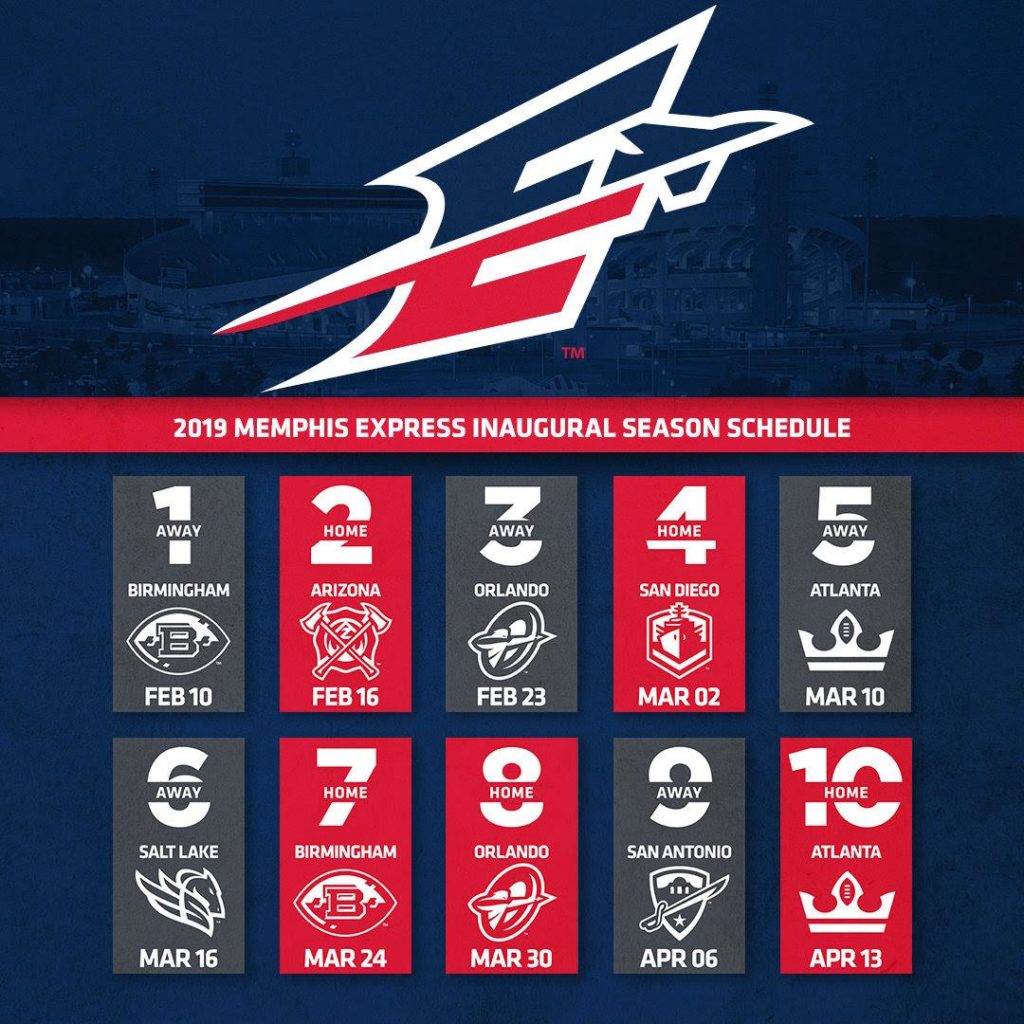
The Express’ expectations came crashing back down to reality right out of the gate playing against the Iron in Week 1, as they were shut out. In the Express’ season opener against the Hotshots, Memphis fell 20-18 in front of a supposed crowd of 11,980. After almost beating the Orlando Apollos on the road behind Zach Mettenberger, Memphis returned home to play the San Diego Fleet. A reputed 13,621 showed up to see the Express pull off their first win of the season. The Express drew a two game road stand, where they lost a heart breaker to Atlanta, and then got socked in the face by Salt Lake.
Returning home without Mettenberger, the largest crowd in Express history showed up for week 7- 13,758. They’d not be disappointed as the Johnny Manziel/ Brandon Silvers show, pulled off the OT upset over the Iron.
The Week 8 game- in which 12,417 attended, was marred by controversy as the teams combined for a league high 25 penalties. Memphis alone had 13-147, as Mike Singletary himself garnered the penalty that allowed the Apollos to sneak in to win the game. It would be an ignominious end to the franchise.
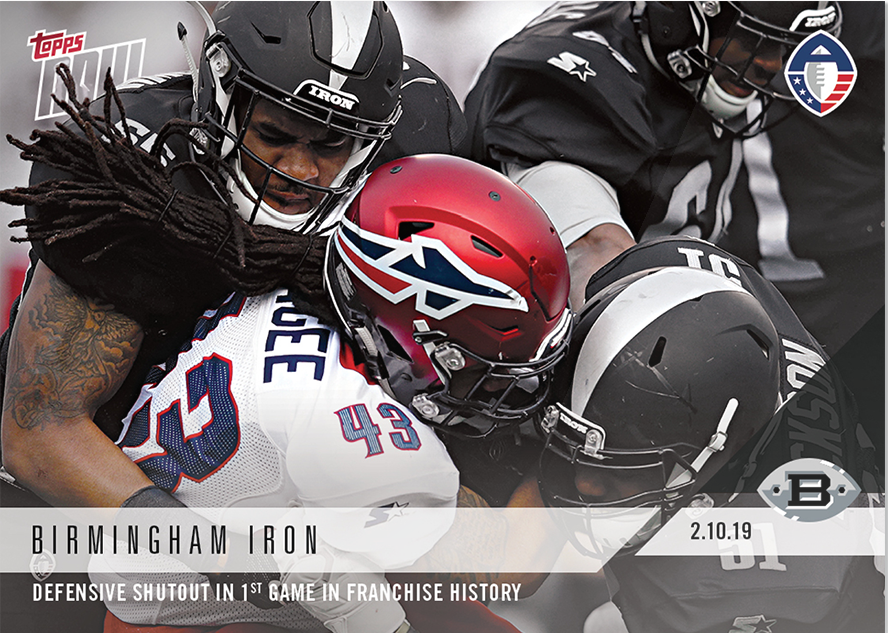
| WEEK | Q1 | Q2 | Q3 | Q4 | F |
| MEM | 0 | 0 | 0 | 0 | 0 |
| BIR | 3 | 6 | 0 | 17 | 26 |
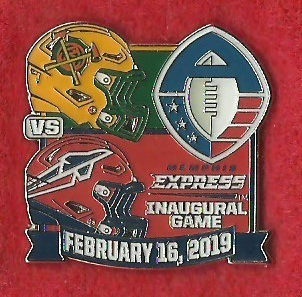
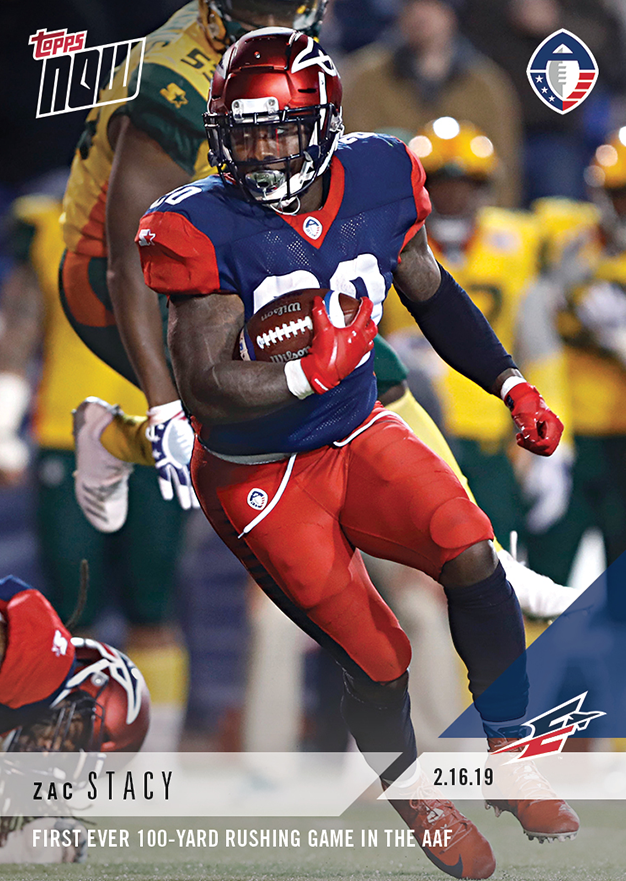
| WEEK | Q1 | Q2 | Q3 | Q4 | F |
| MEM | 9 | 3 | 0 | 6 | 18 |
| ARZ | 0 | 0 | 6 | 14 | 20 |
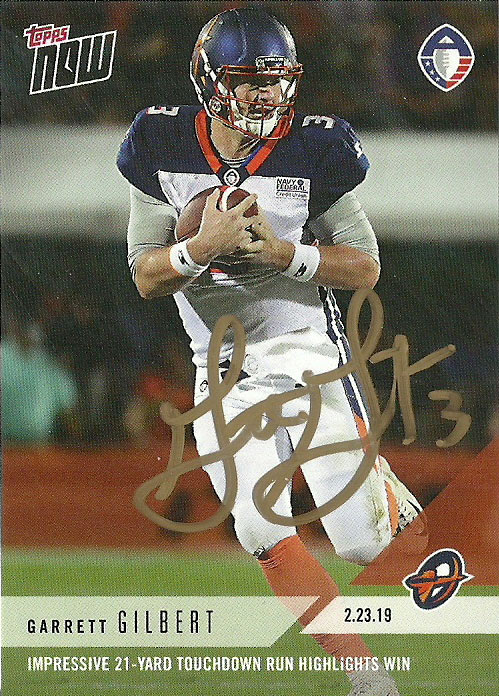
| WEEK | Q1 | Q2 | Q3 | Q4 | F |
| MEM | 0 | 0 | 6 | 11 | 17 |
| ORL | 9 | 0 | 6 | 6 | 21 |
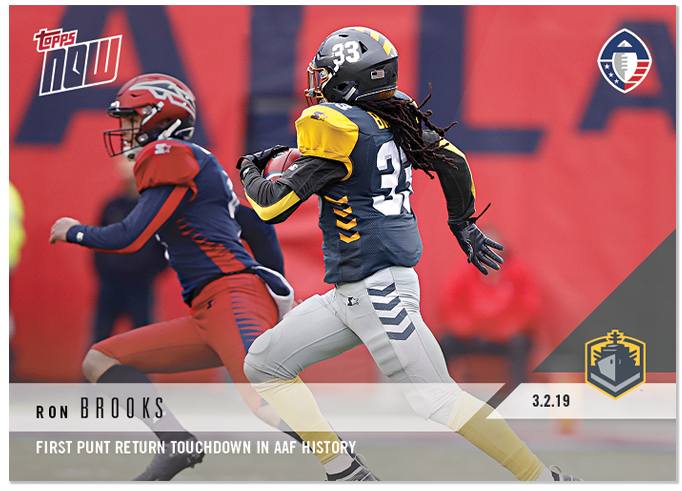
| WEEK | Q1 | Q2 | Q3 | Q4 | F |
| MEM | 3 | 12 | 0 | 11 | 26 |
| SD | 14 | 6 | 0 | 3 | 23 |
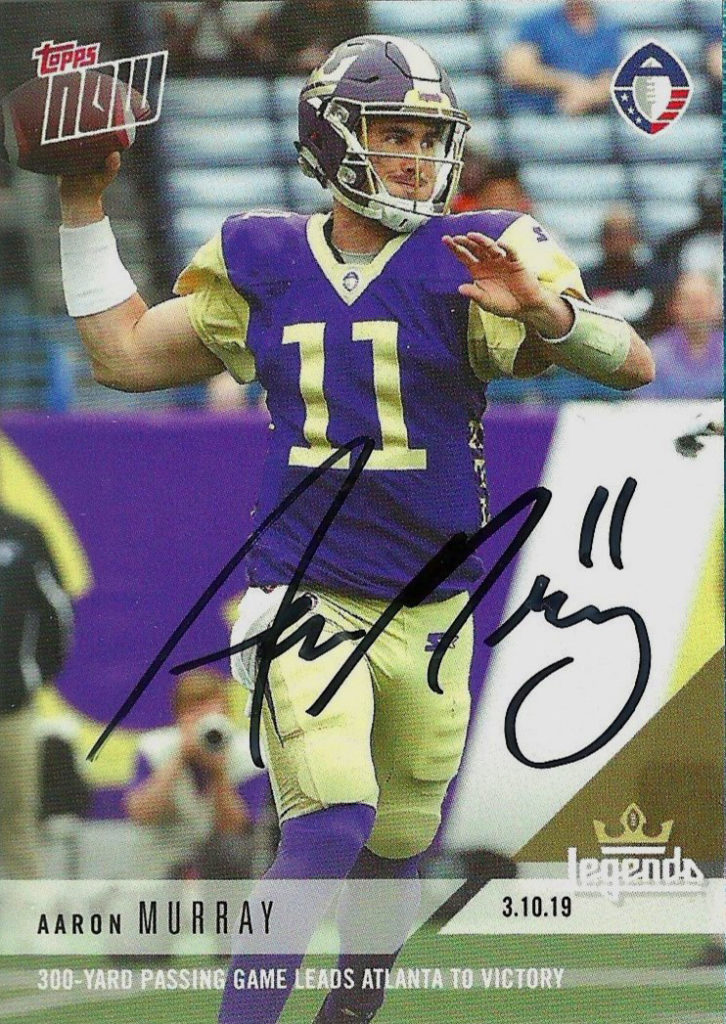
| WEEK | Q1 | Q2 | Q3 | Q4 | F |
| MEM | 6 | 6 | 8 | 0 | 20 |
| ATL | 3 | 11 | 0 | 9 | 23 |
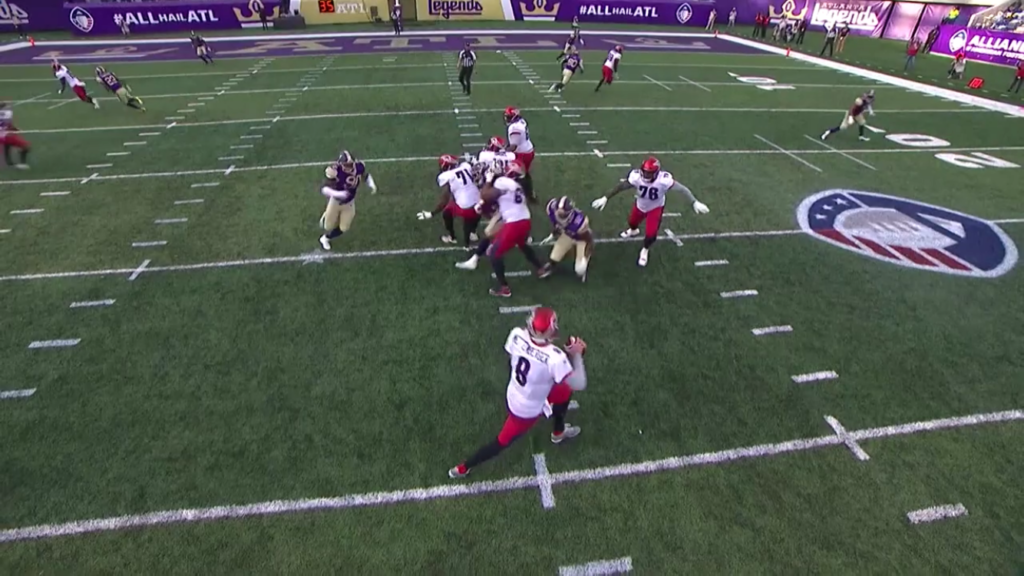
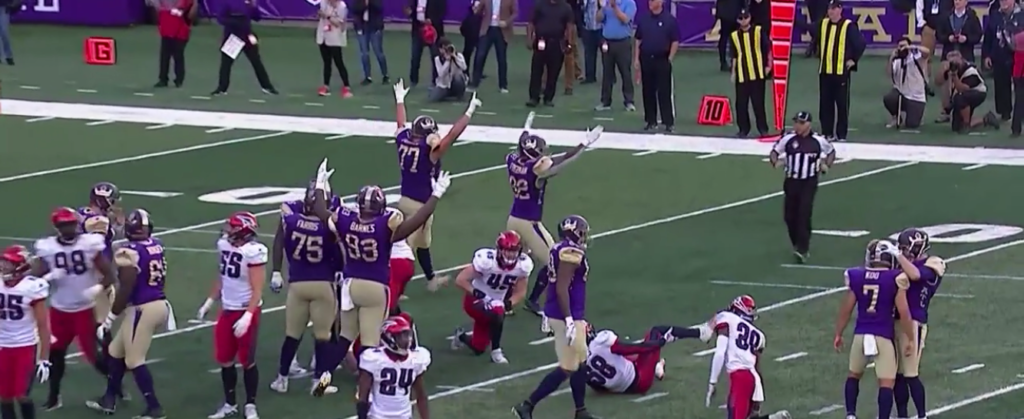
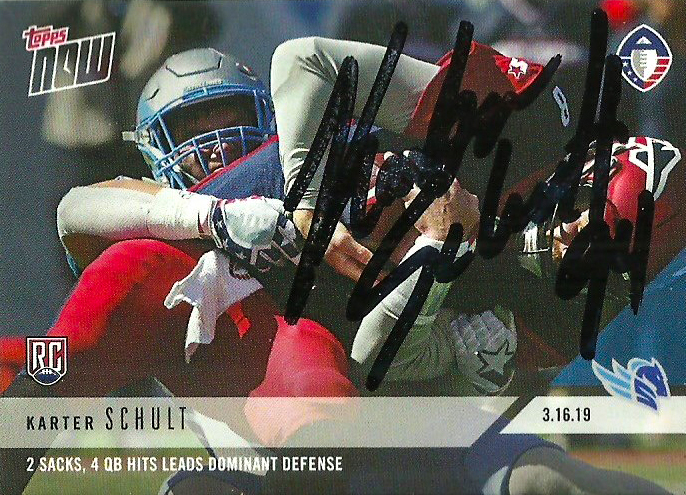
| WEEK | Q1 | Q2 | Q3 | Q4 | F |
| MEM | 0 | 9 | 0 | 0 | 9 |
| SLC | 16 | 3 | 0 | 3 | 22 |
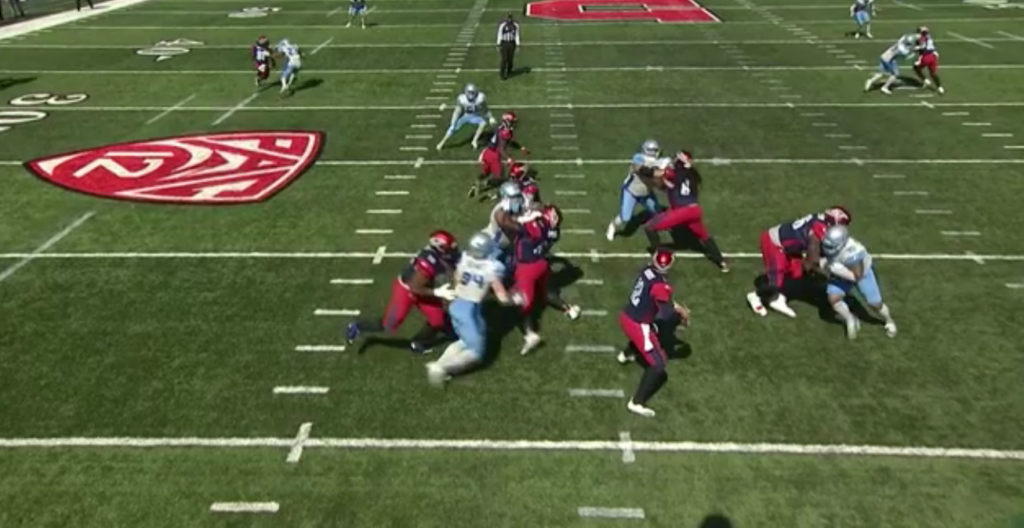
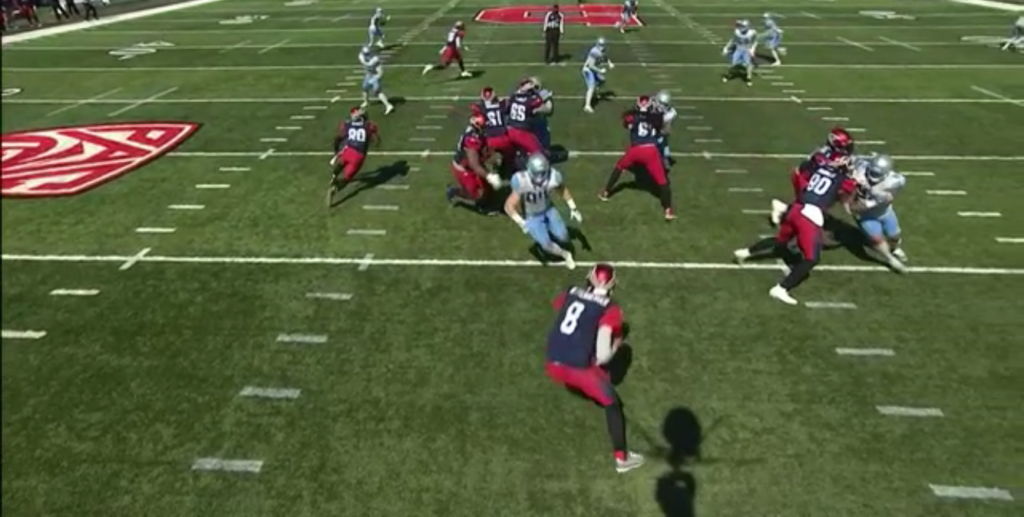
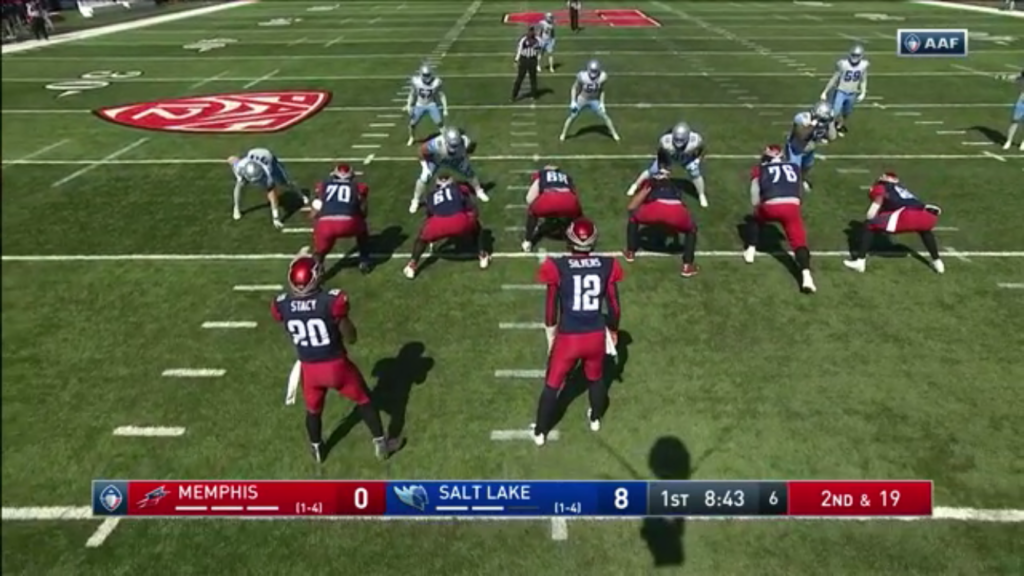
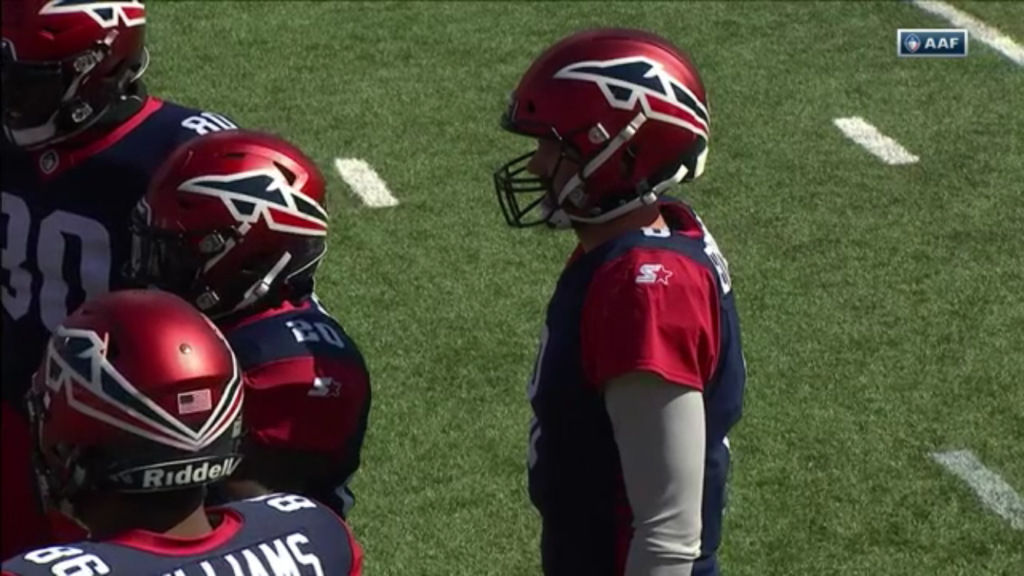
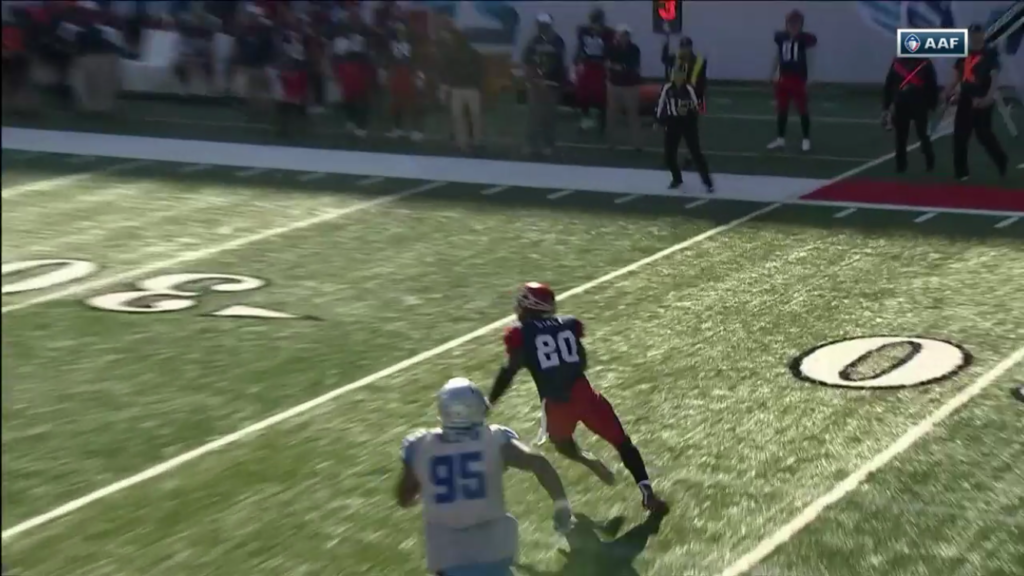
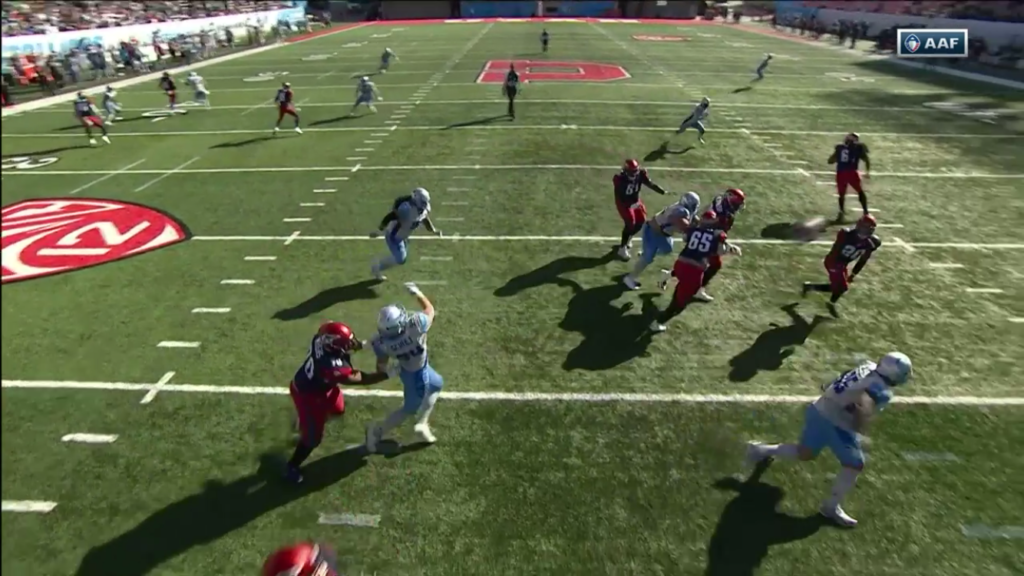
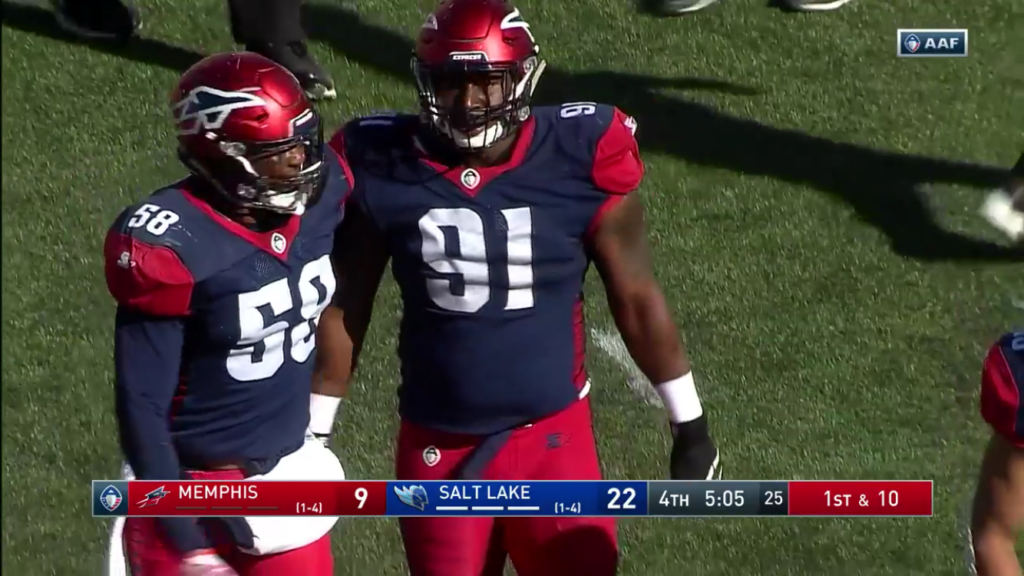
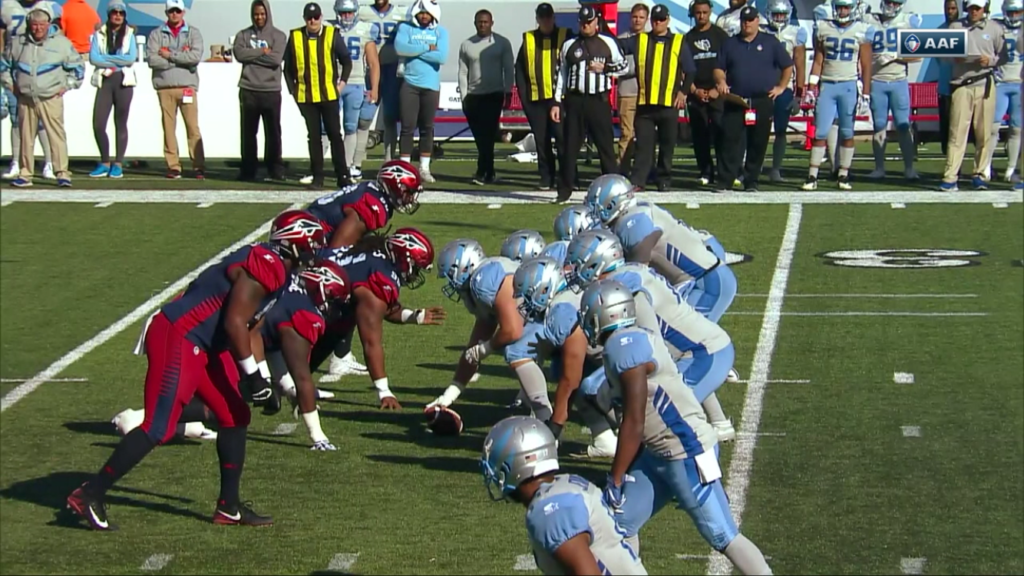
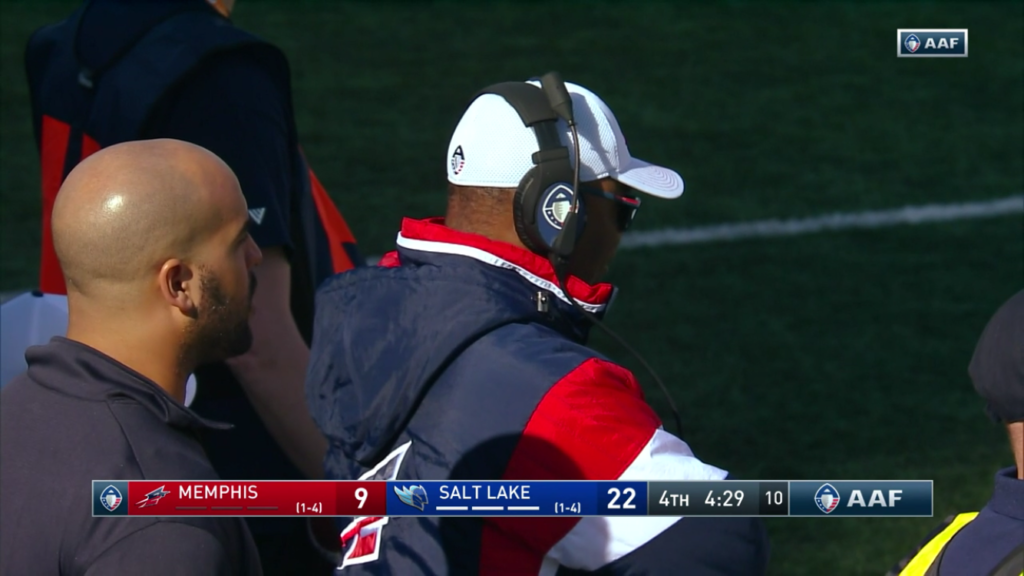
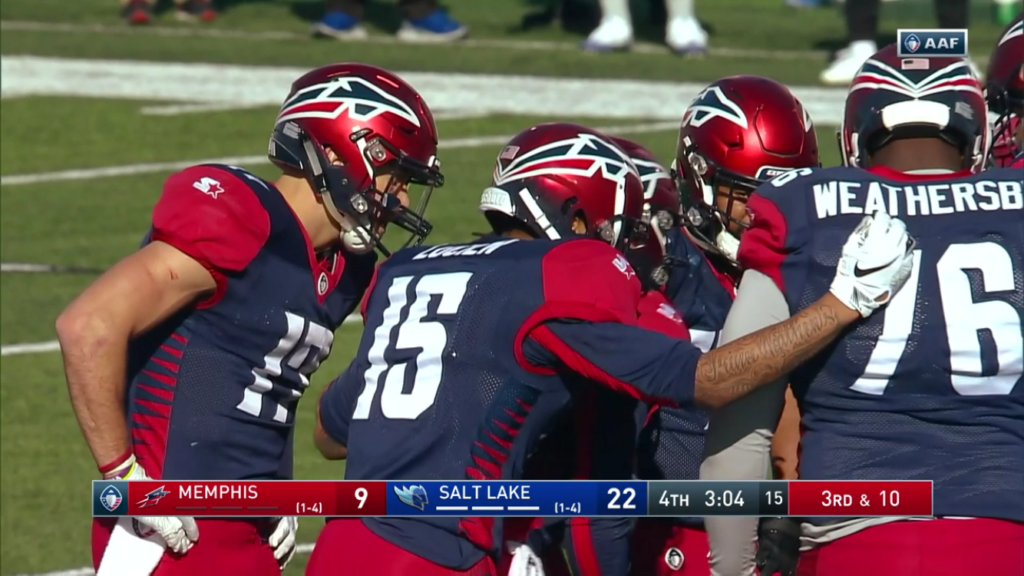
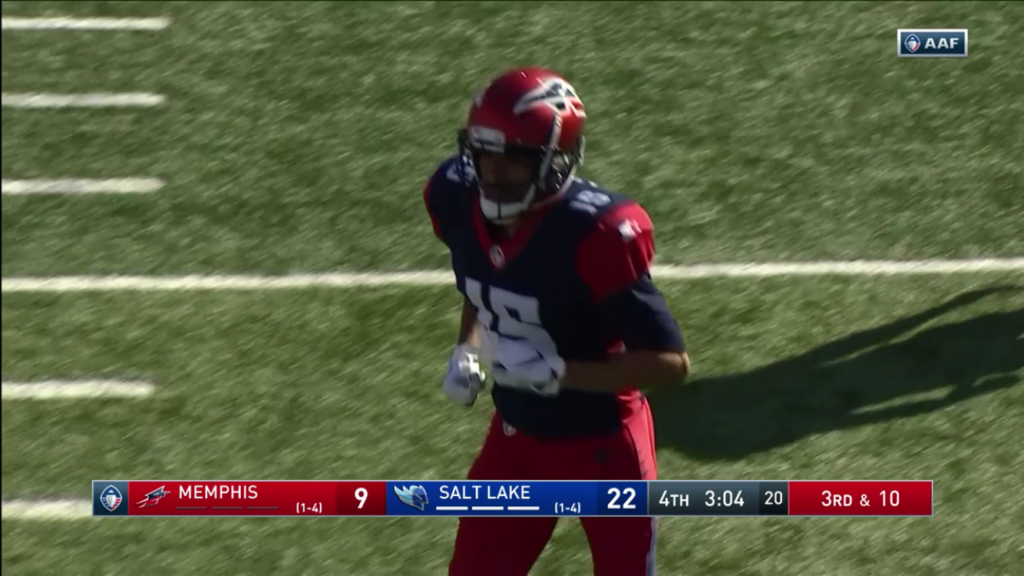
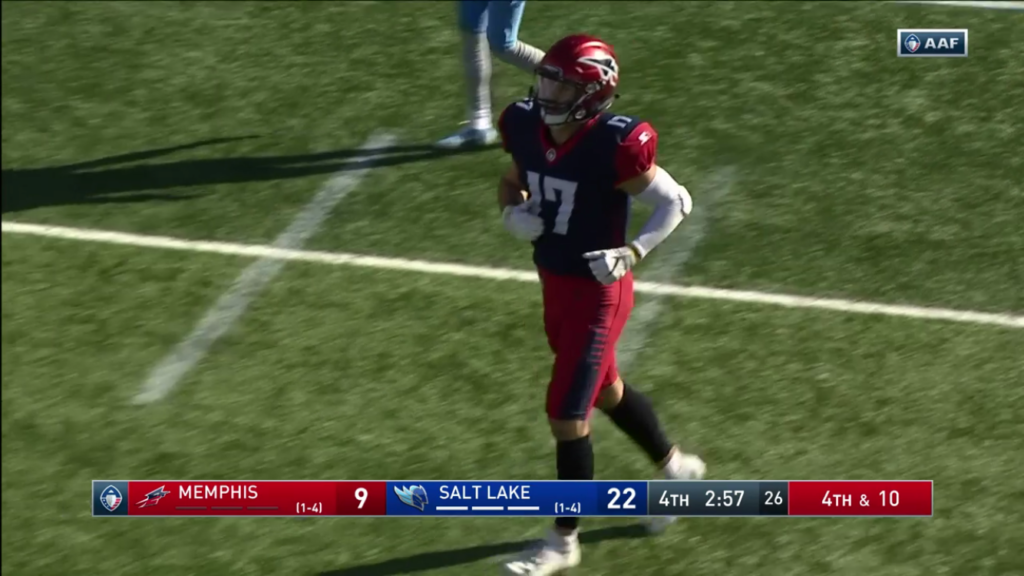
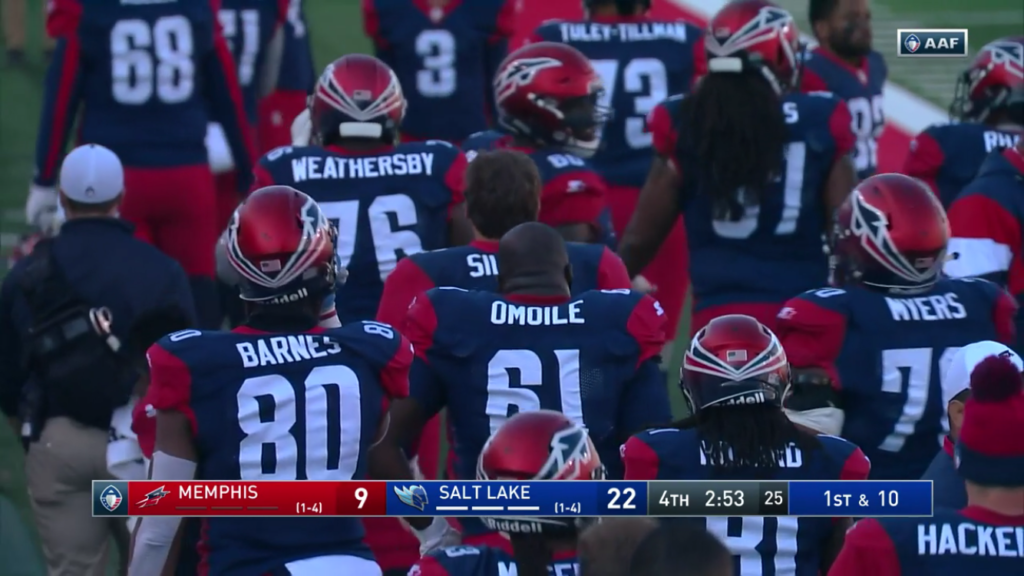
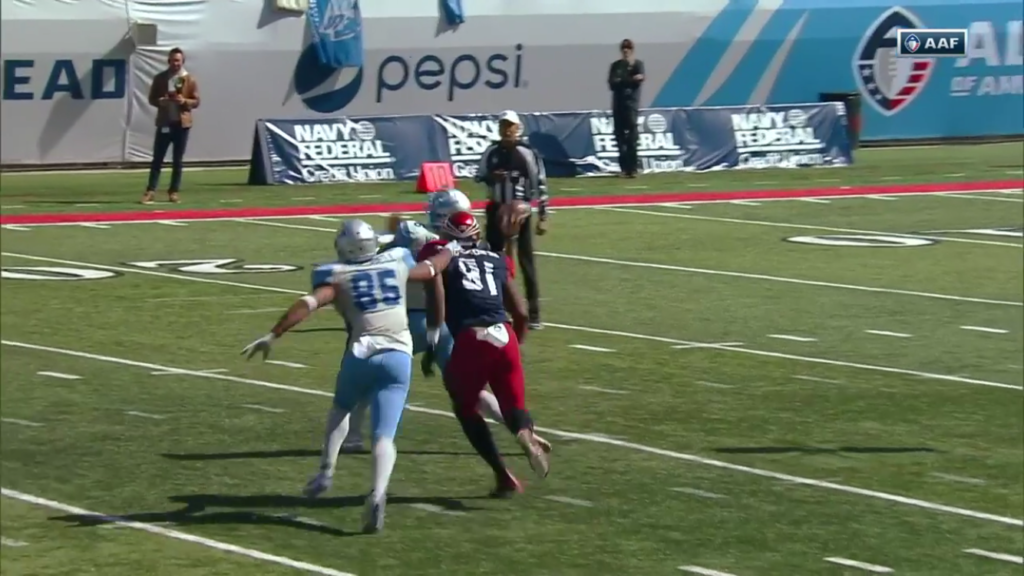
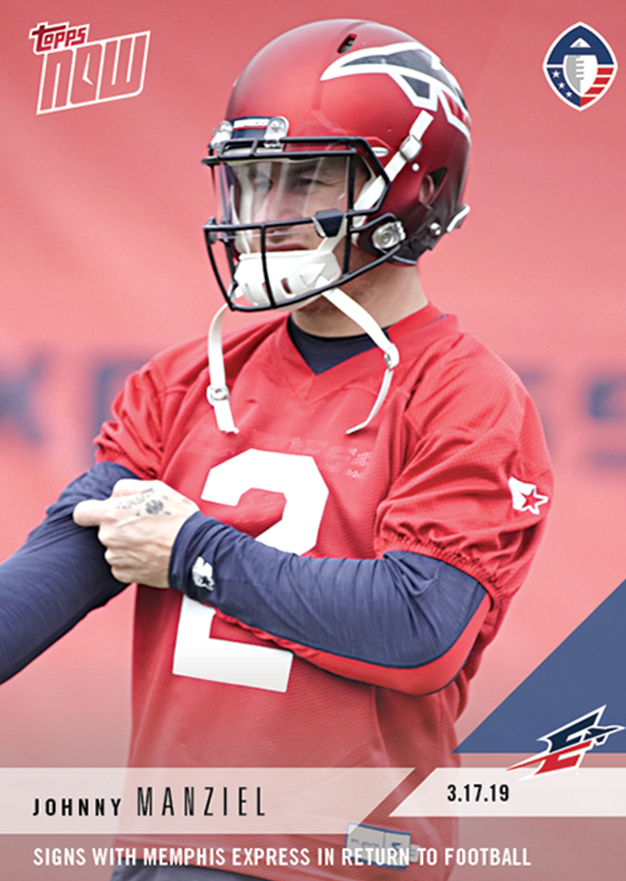
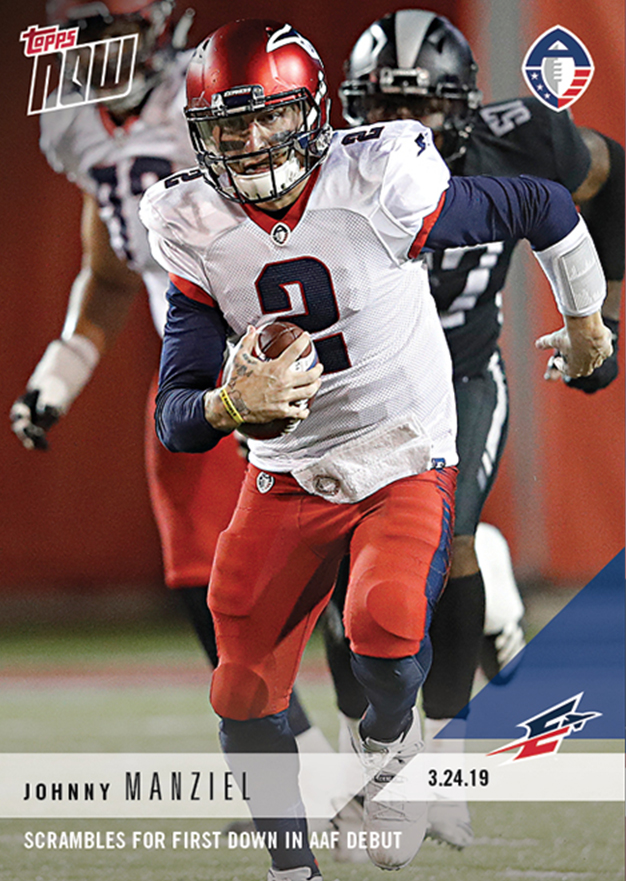
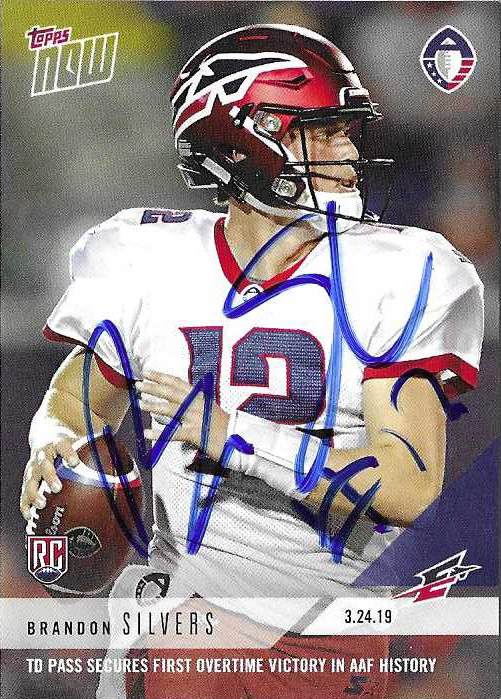
| WEEK | Q1 | Q2 | Q3 | Q4 | OT | F |
| MEM | 0 | 8 | 6 | 11 | 6 | 31 |
| BIR | 8 | 8 | 3 | 6 | 0 | 25 |
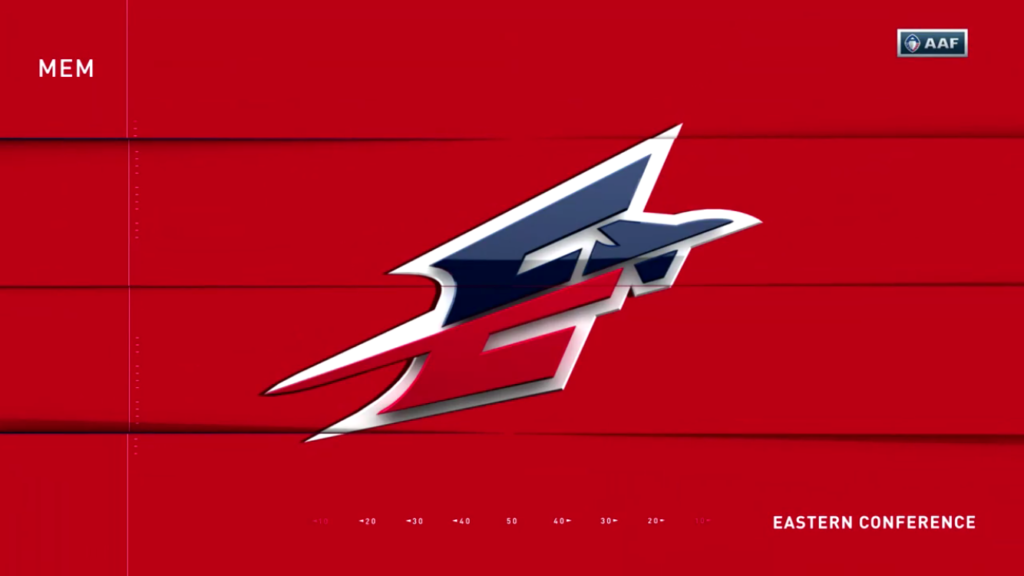
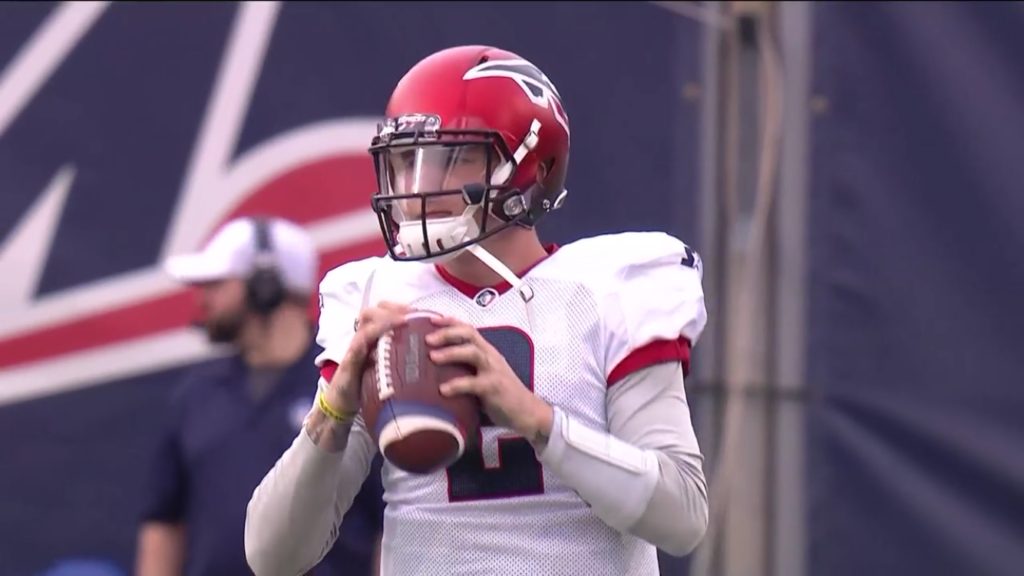
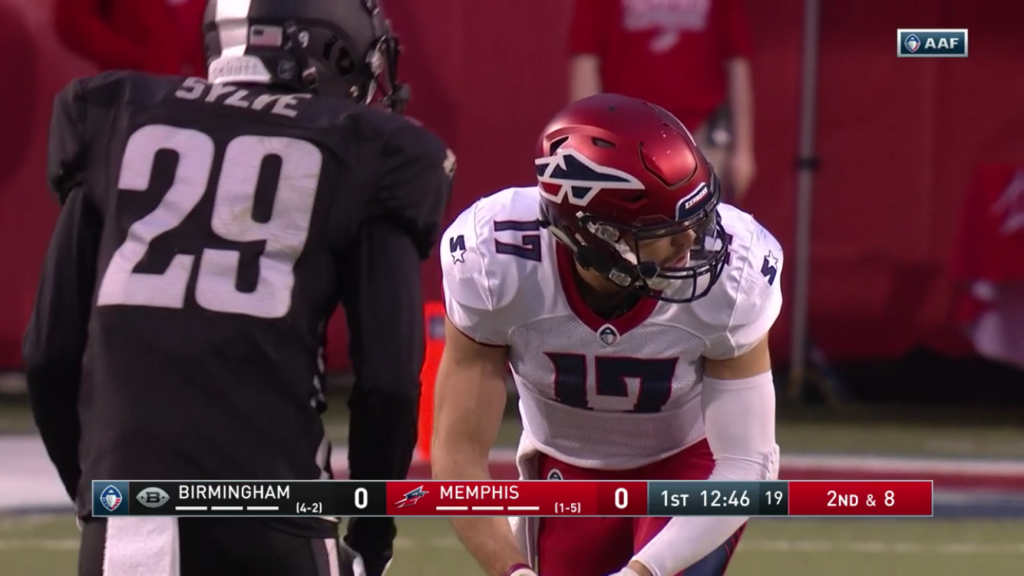
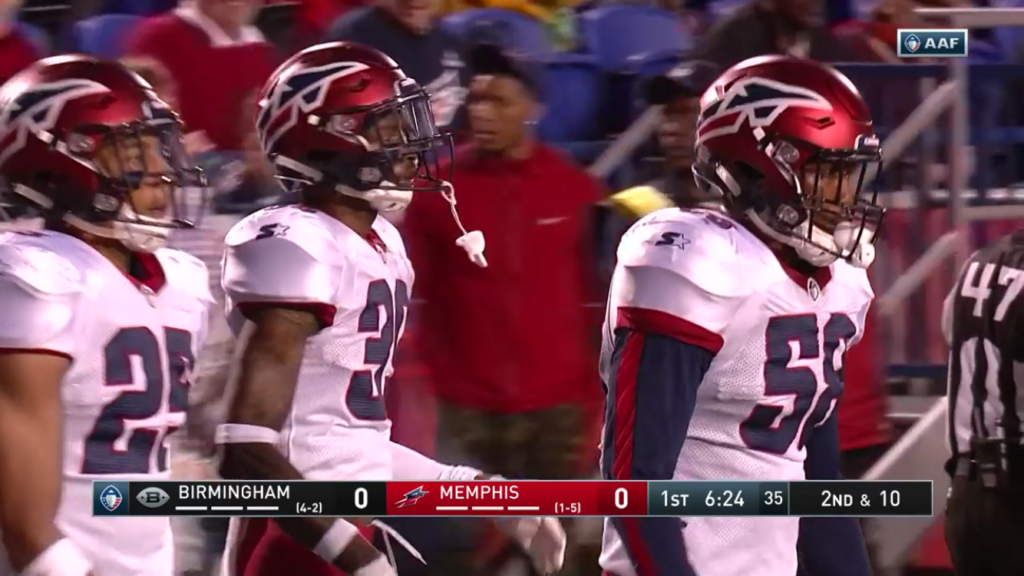
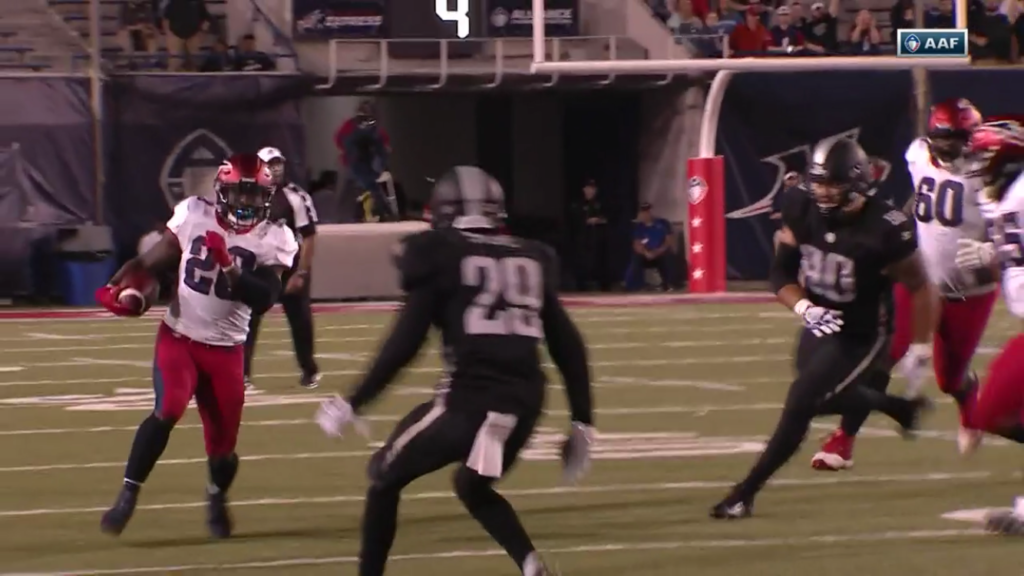
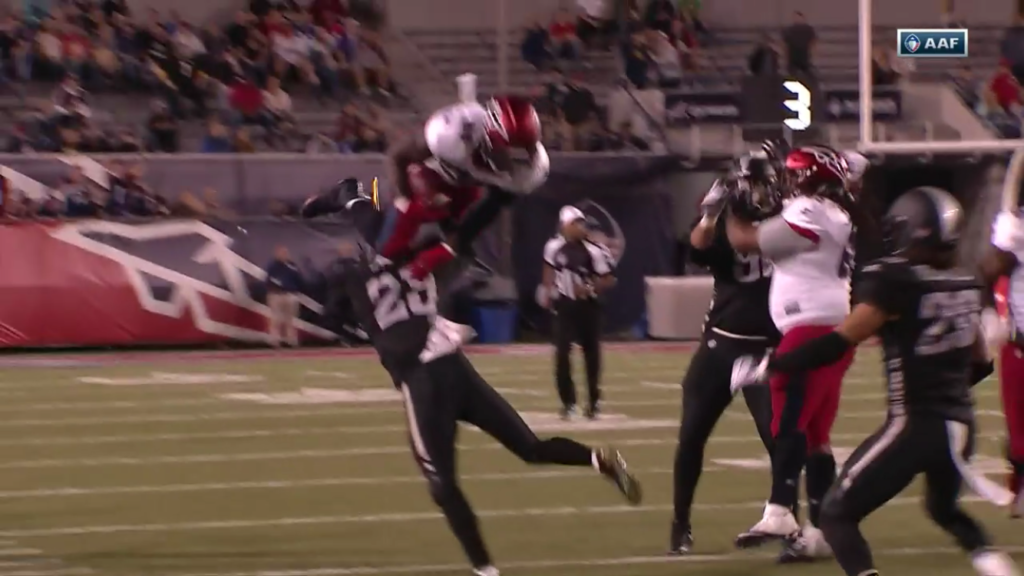
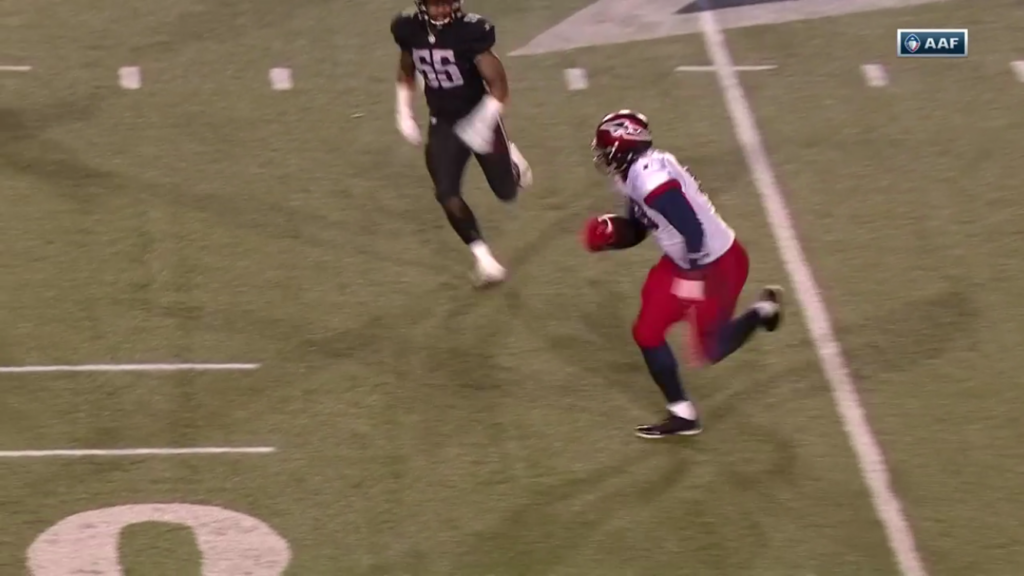
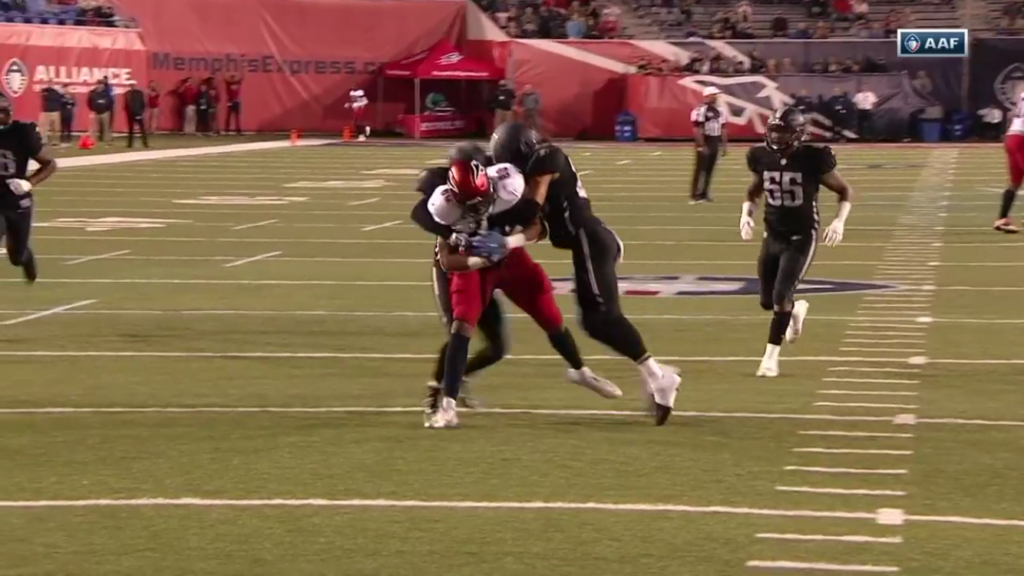
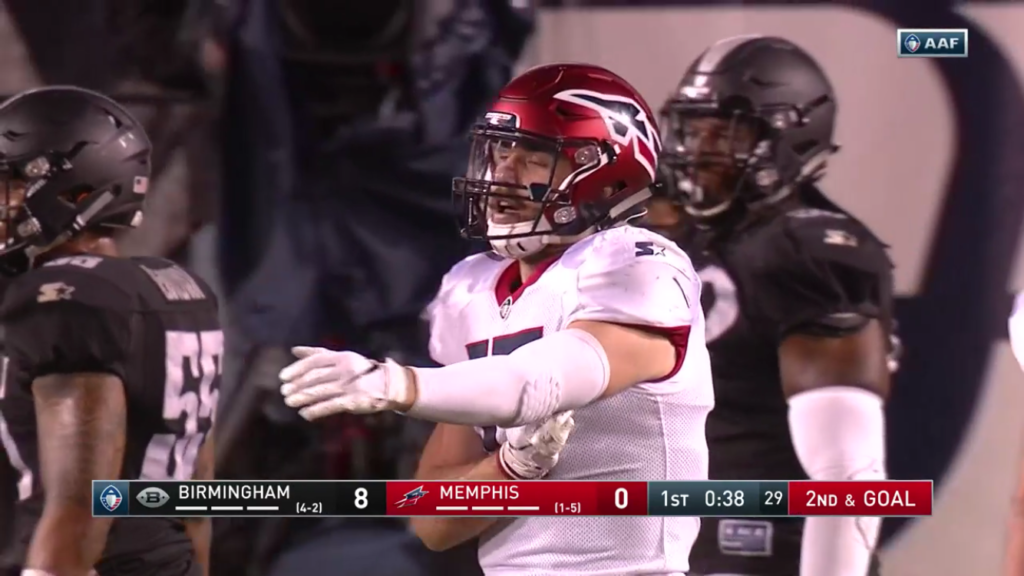
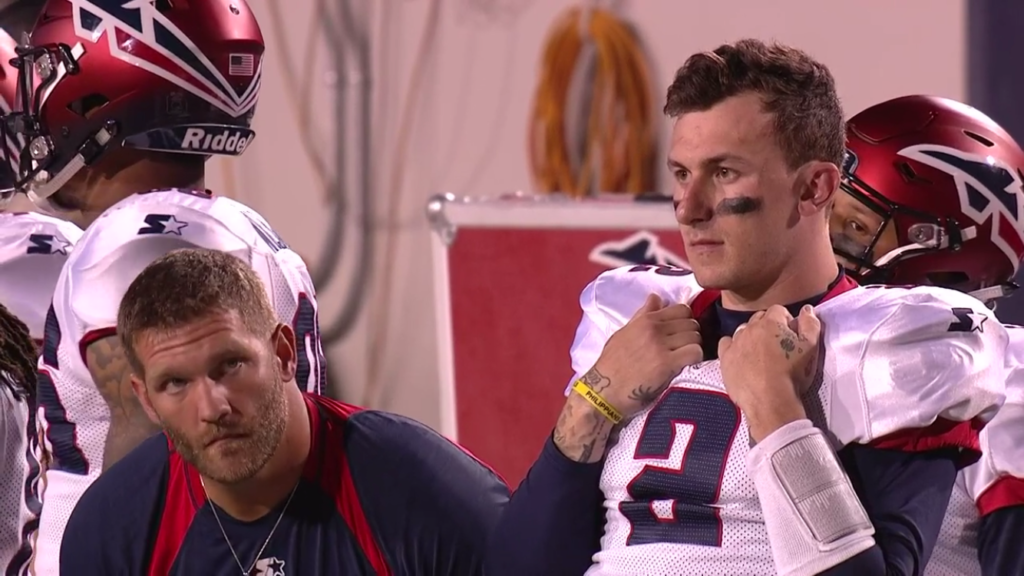
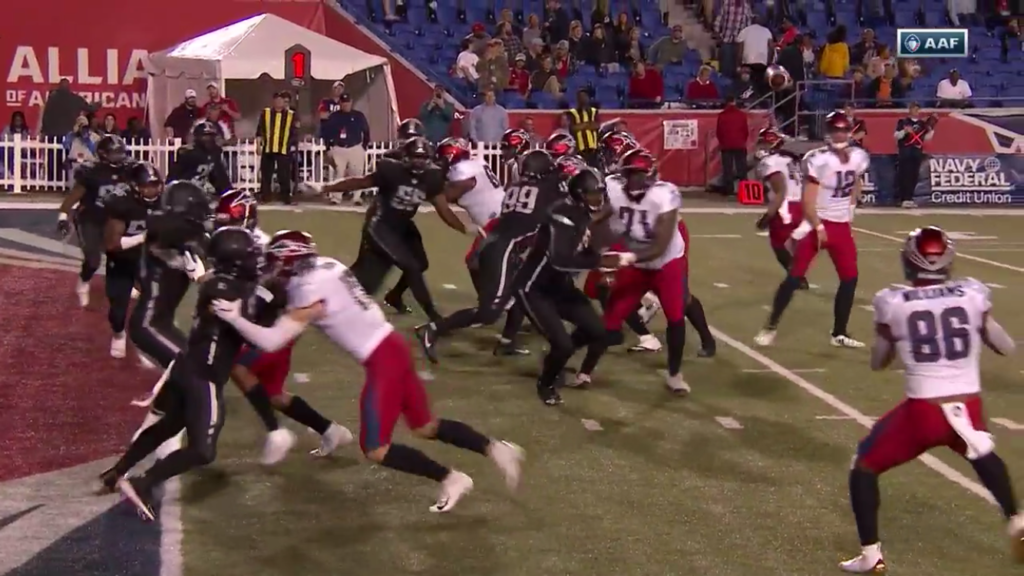
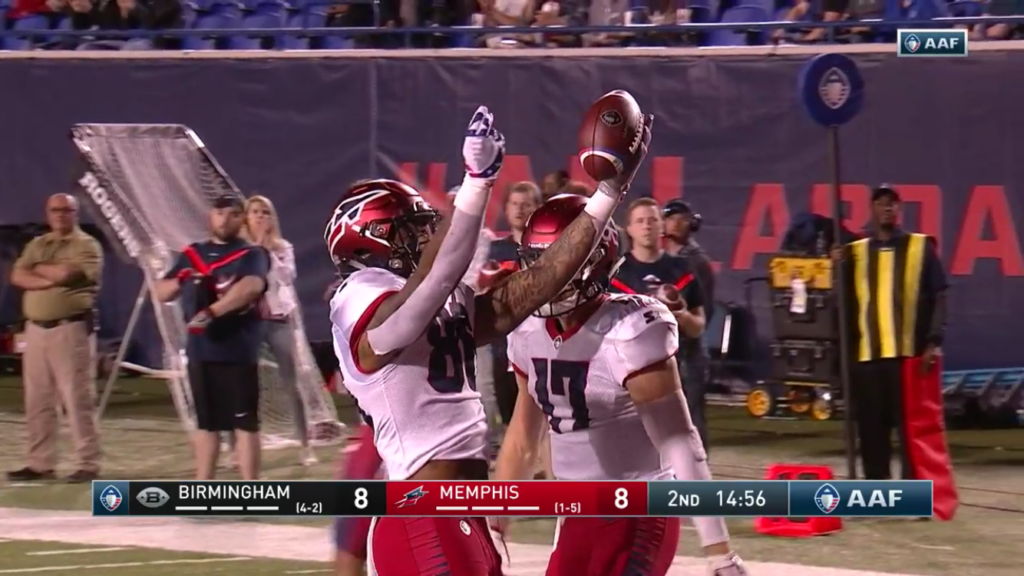
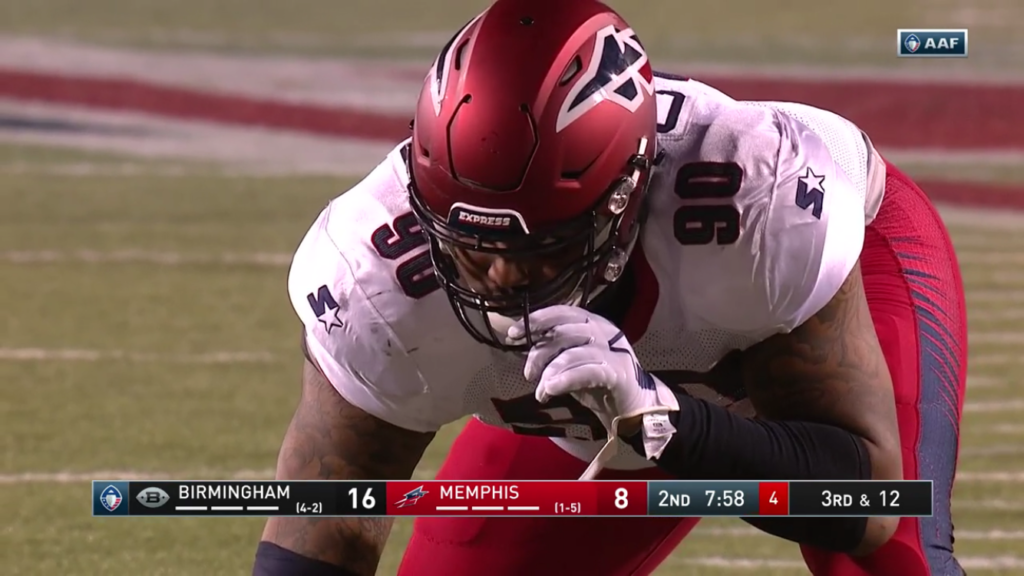
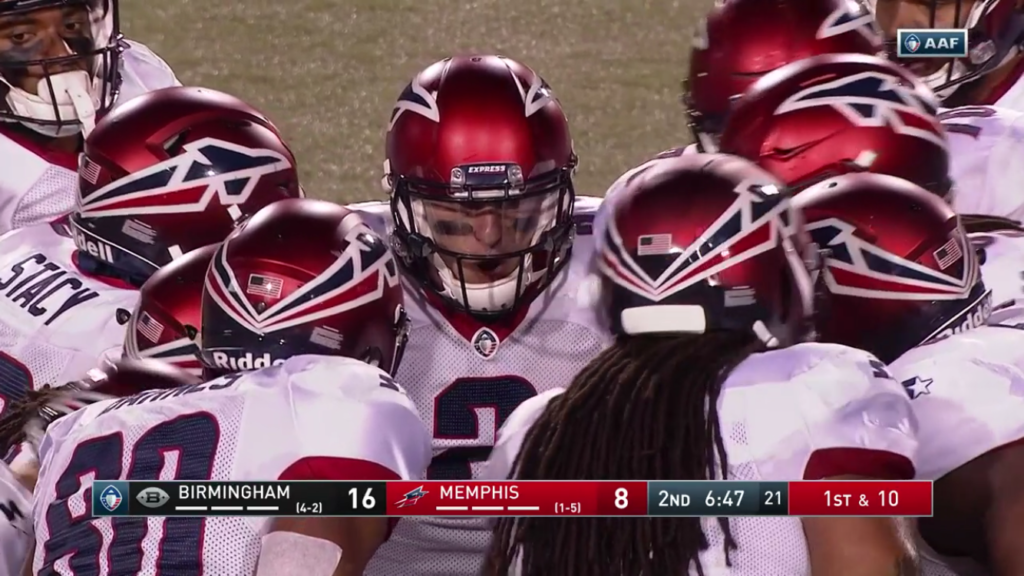
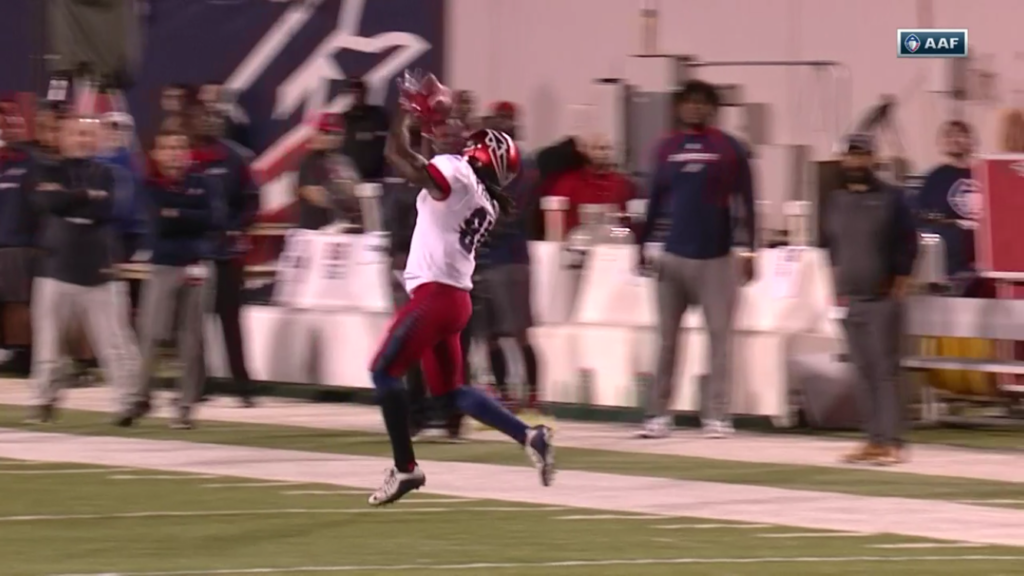
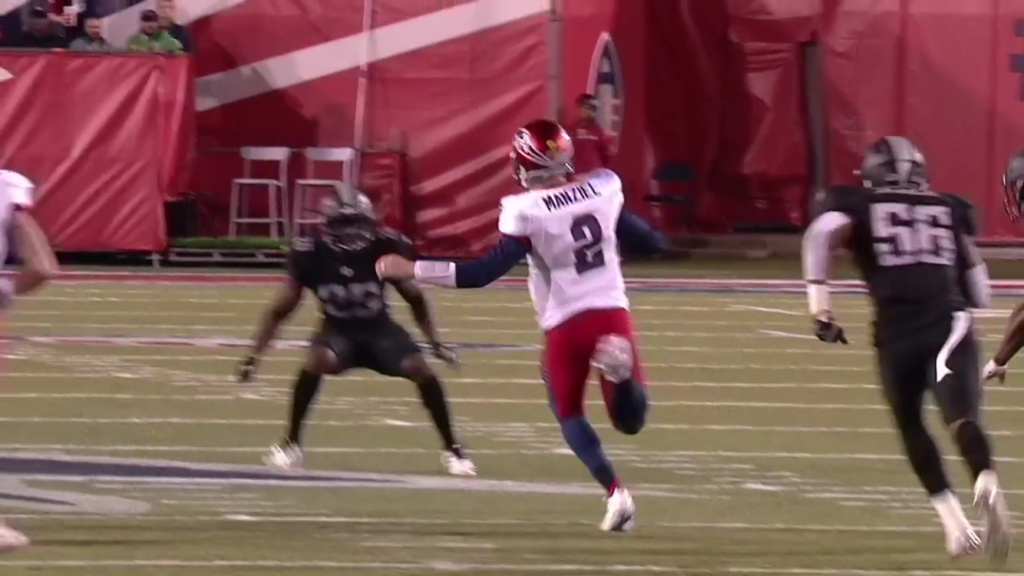
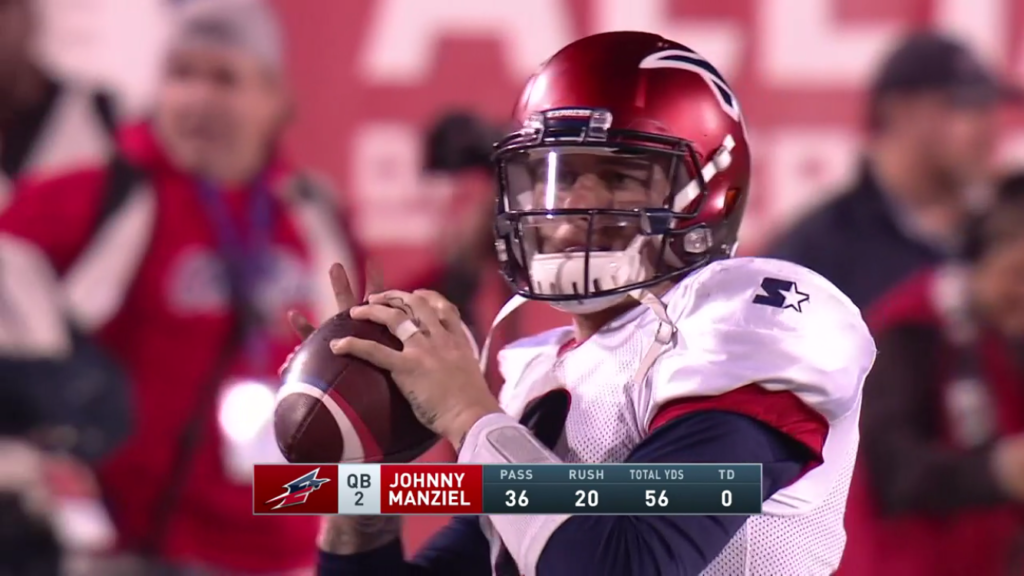
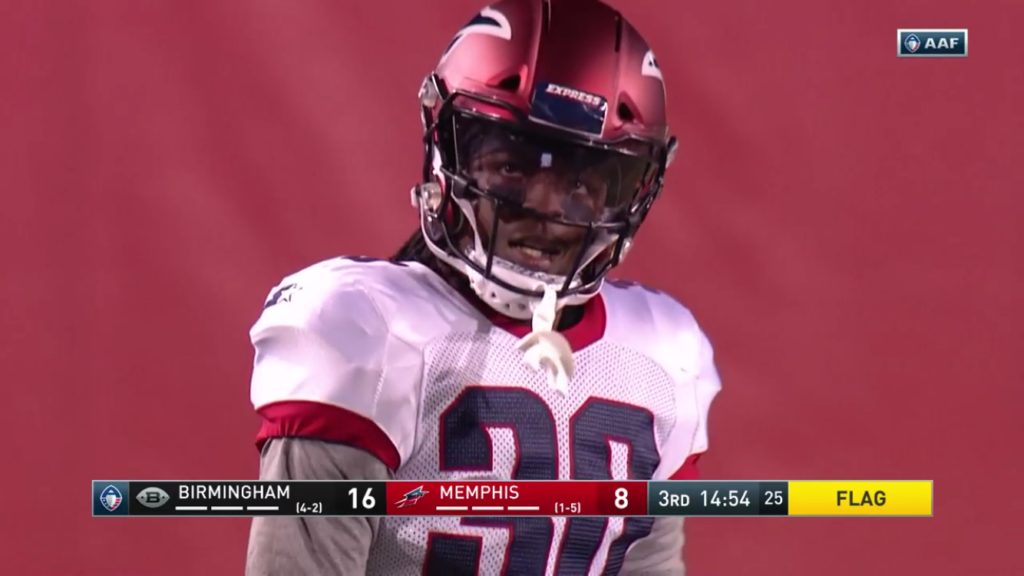
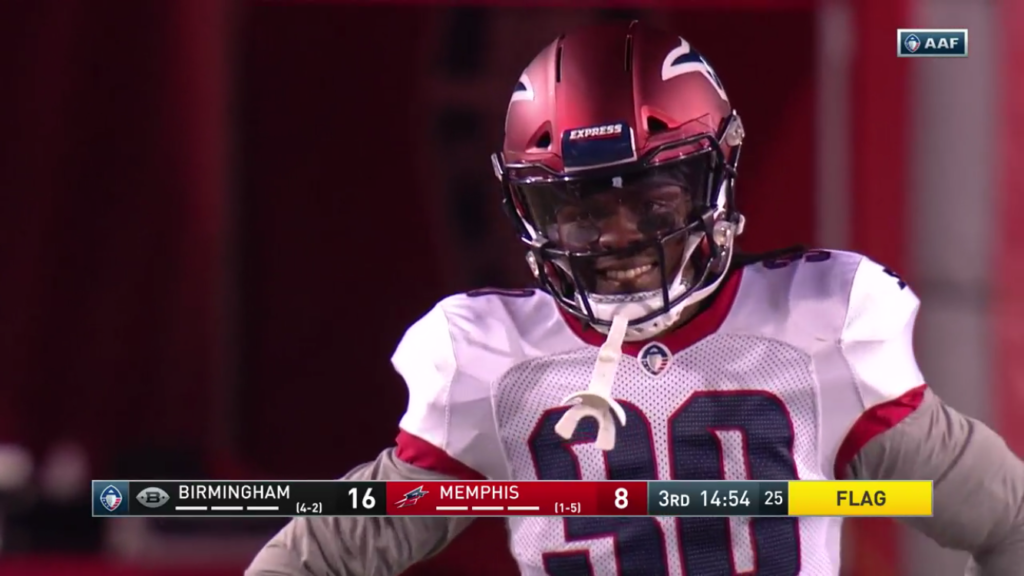
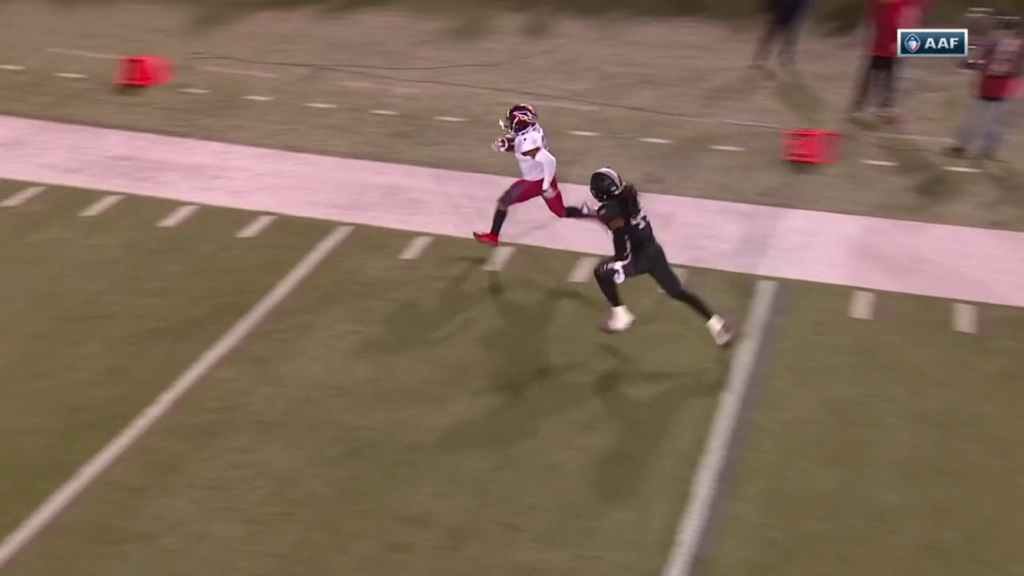
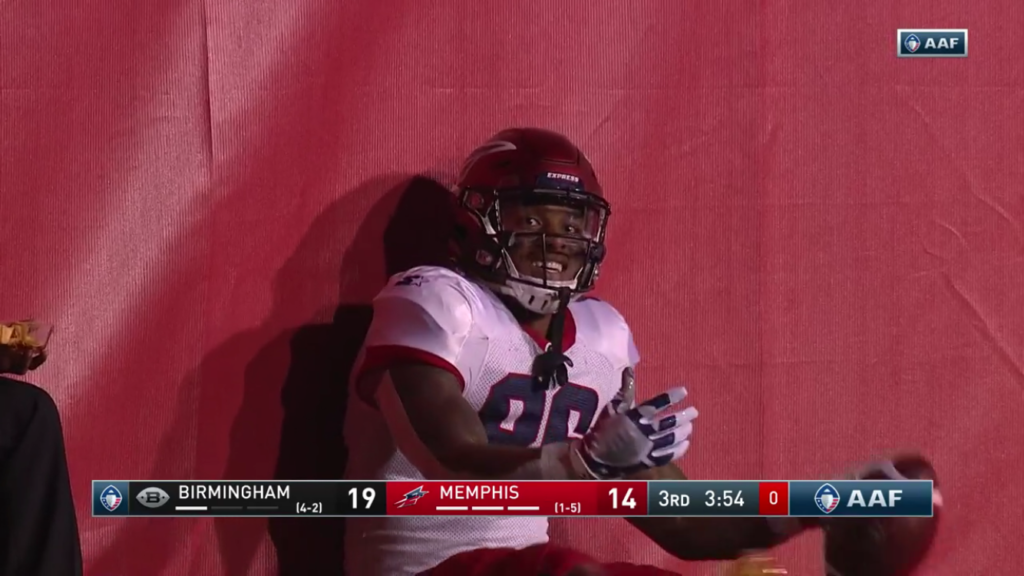
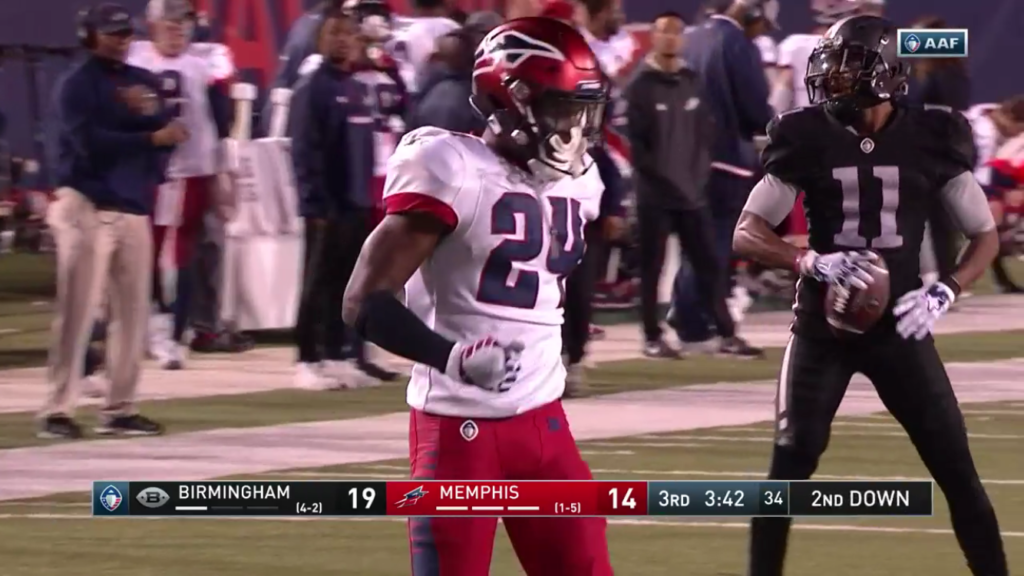
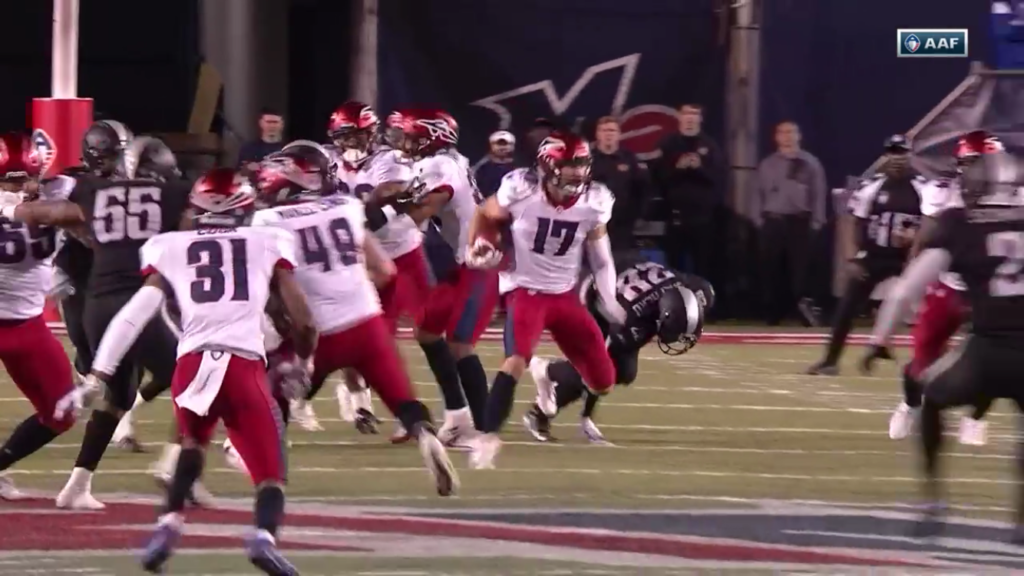
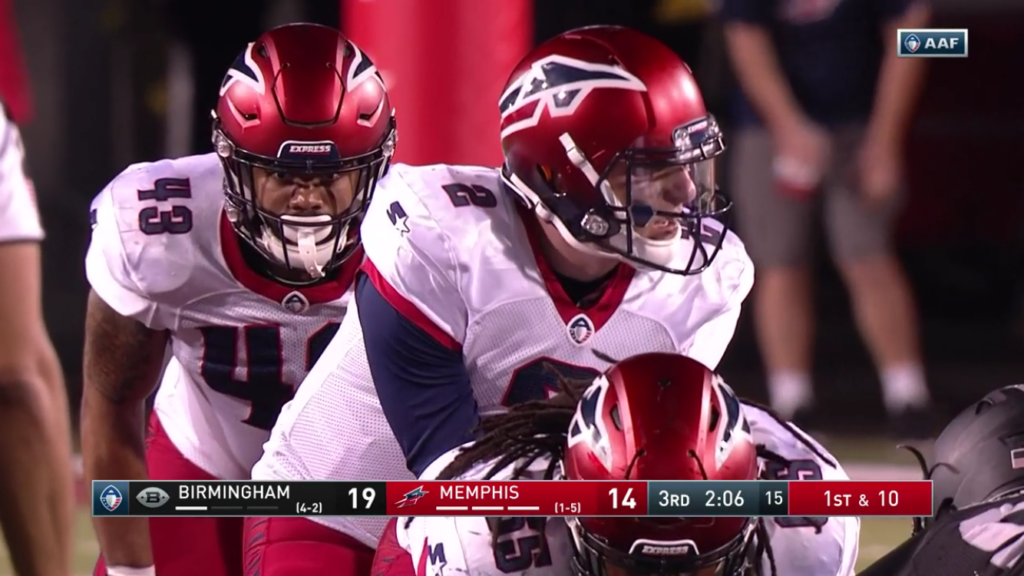
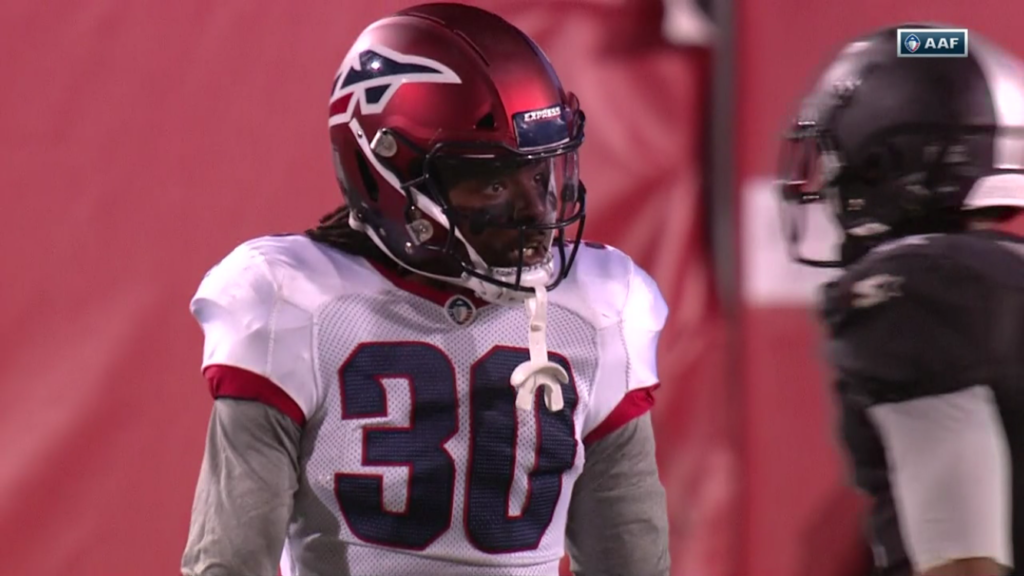
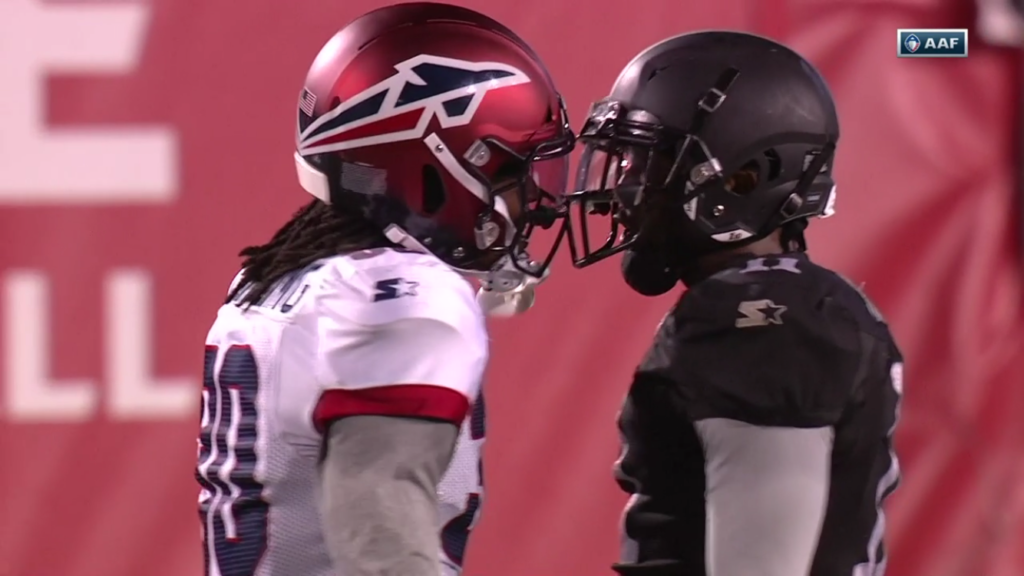
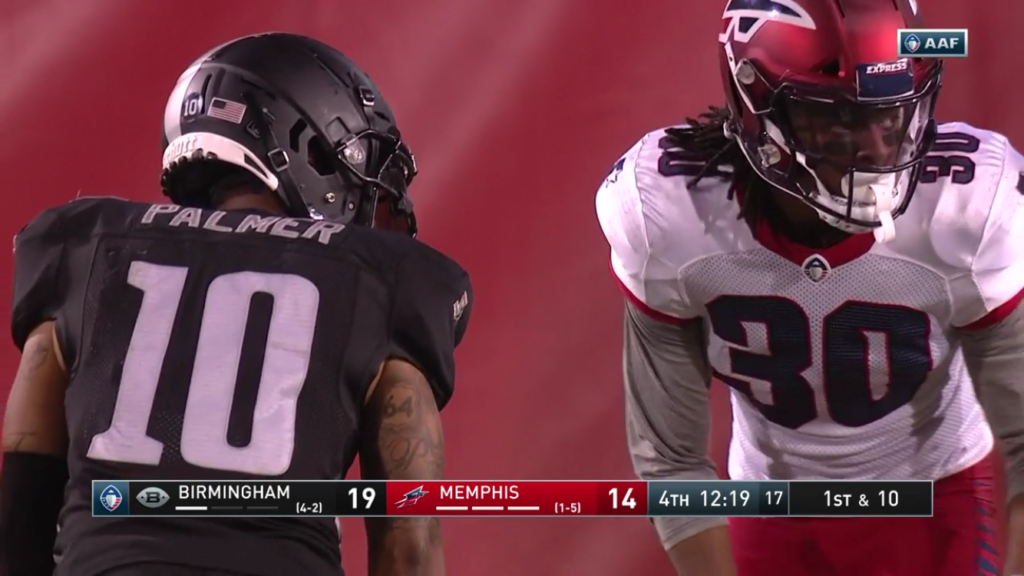
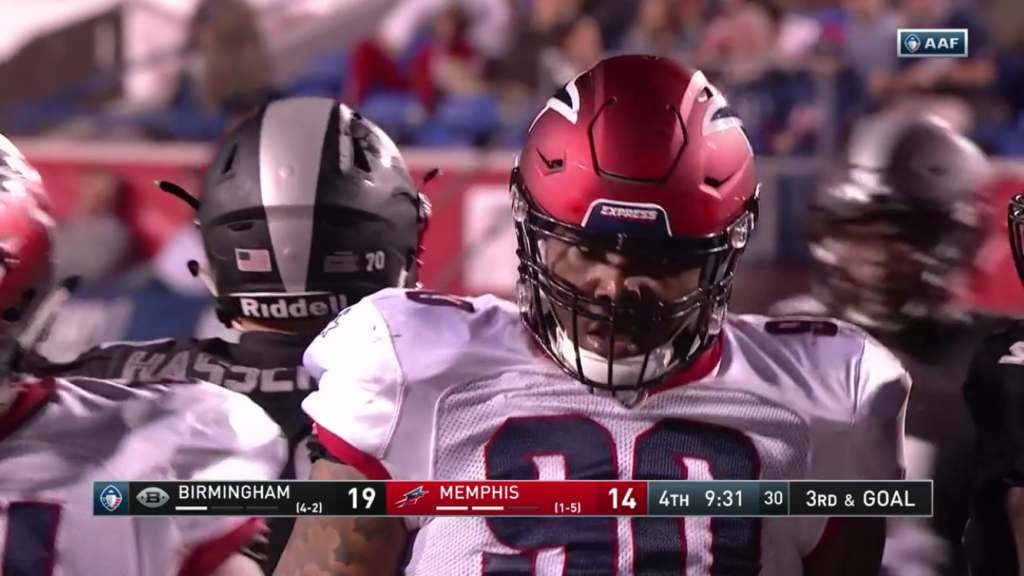
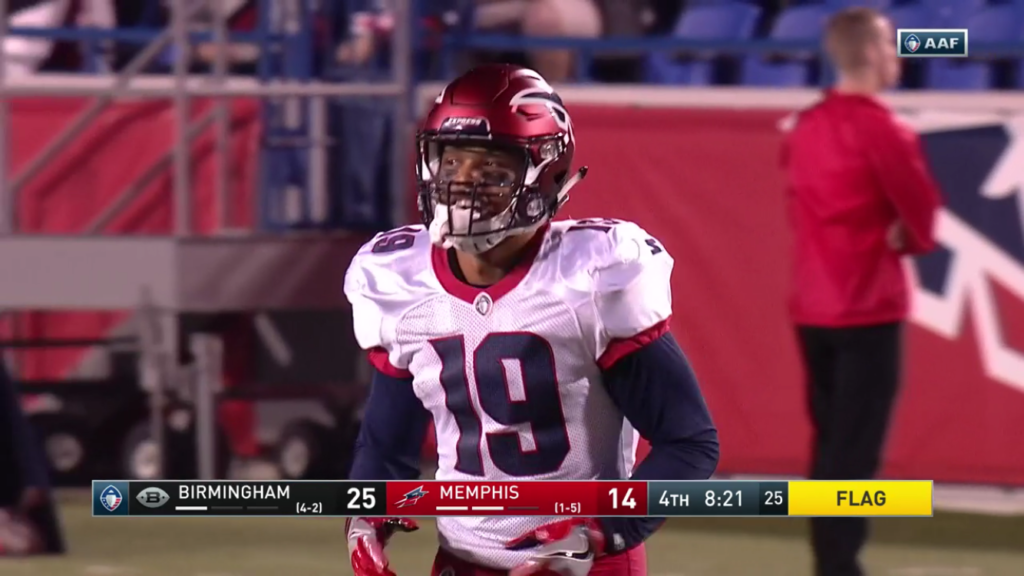
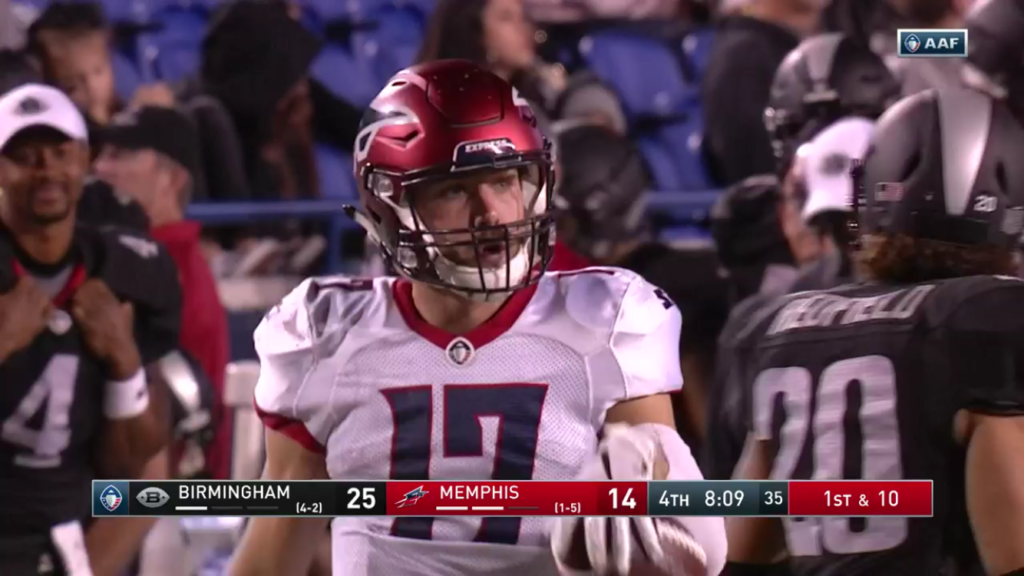
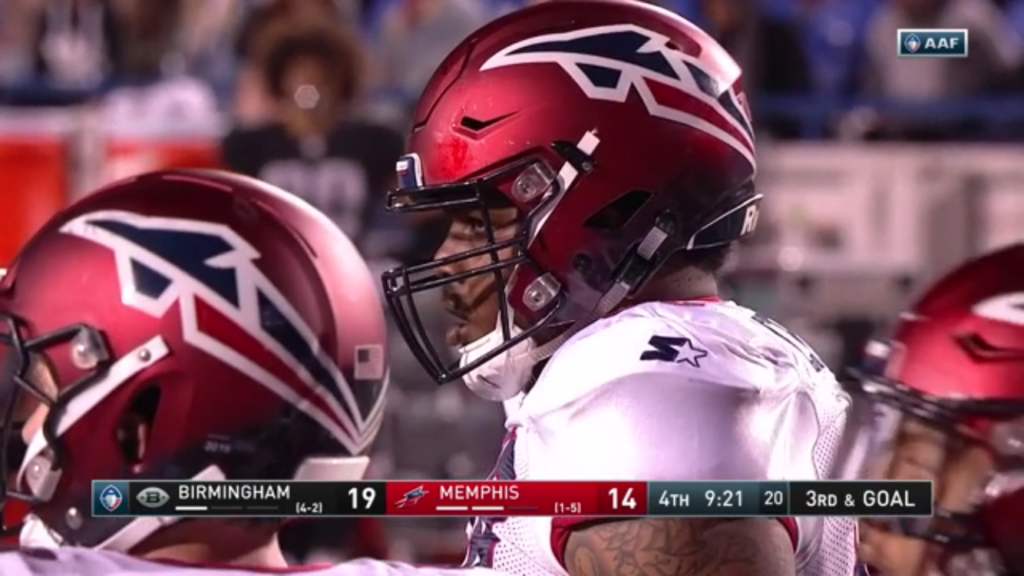
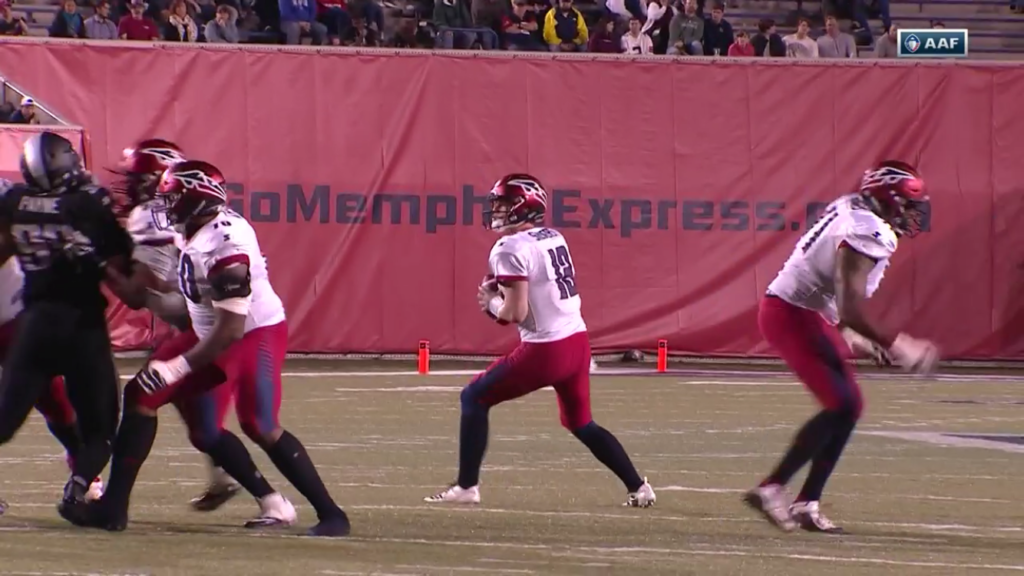
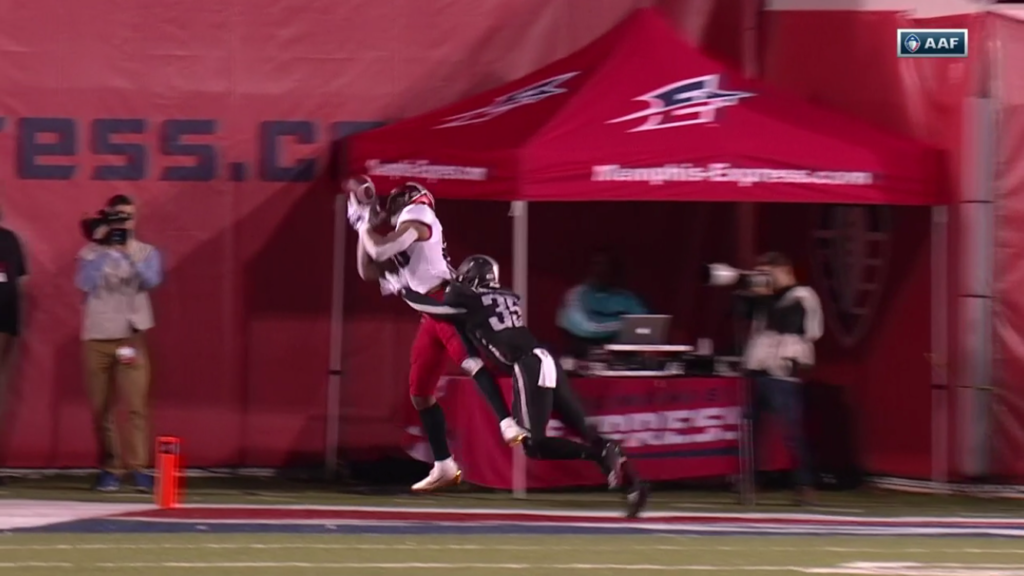
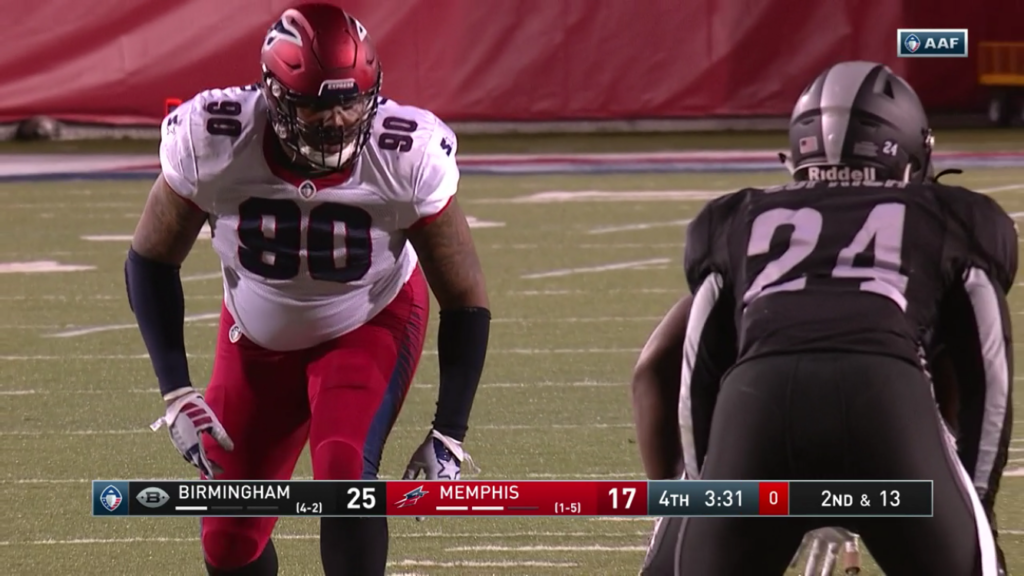
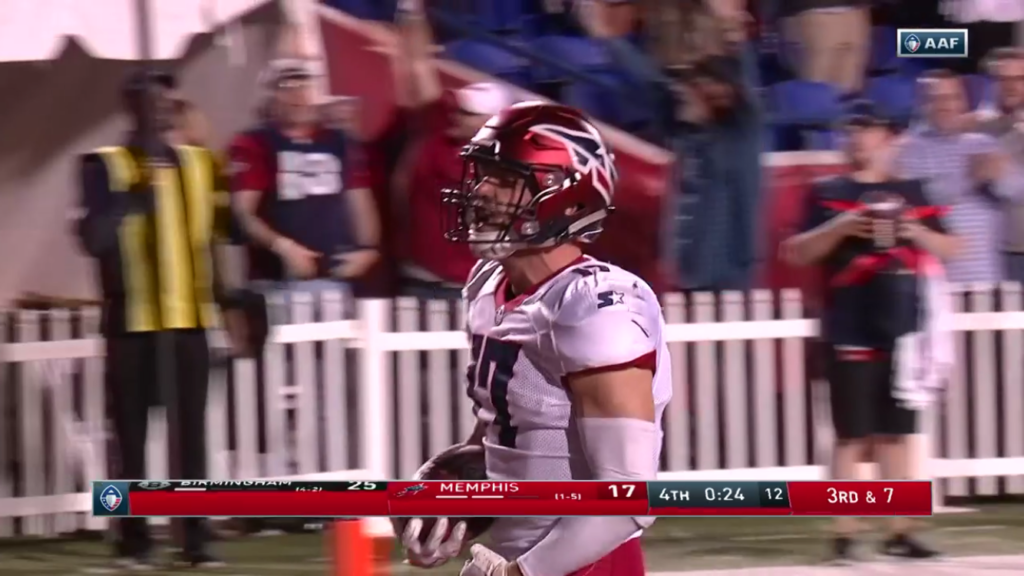
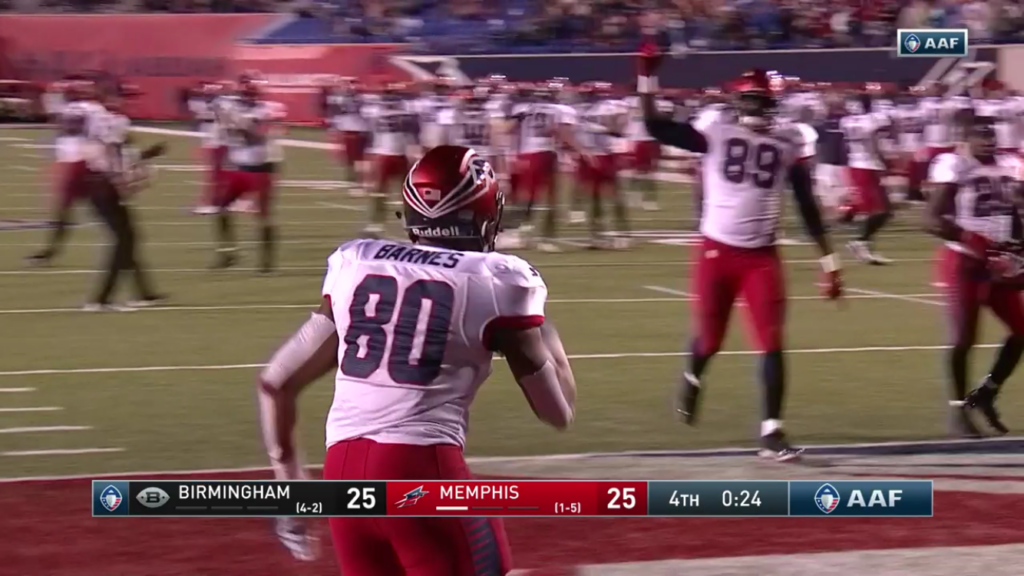
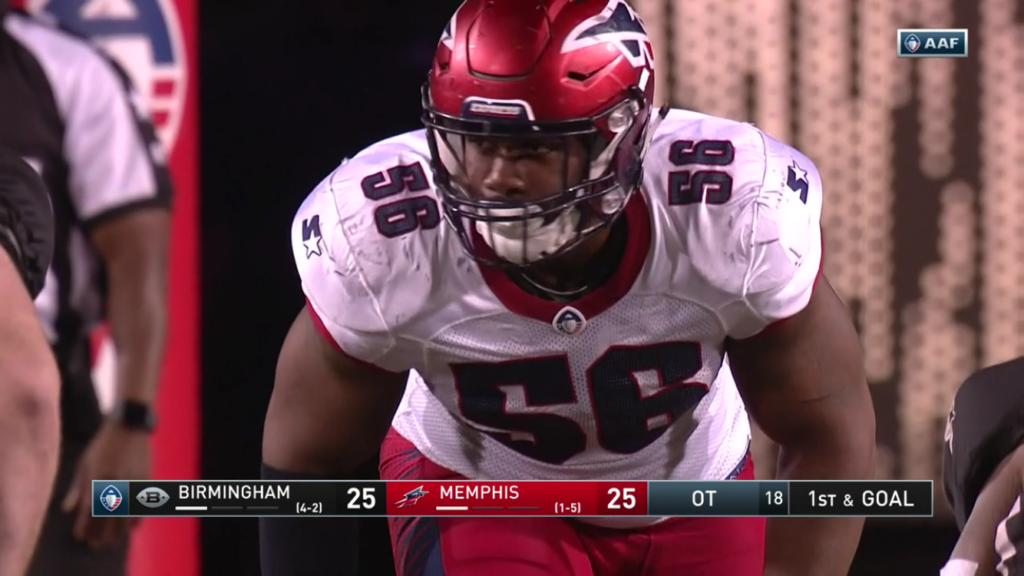
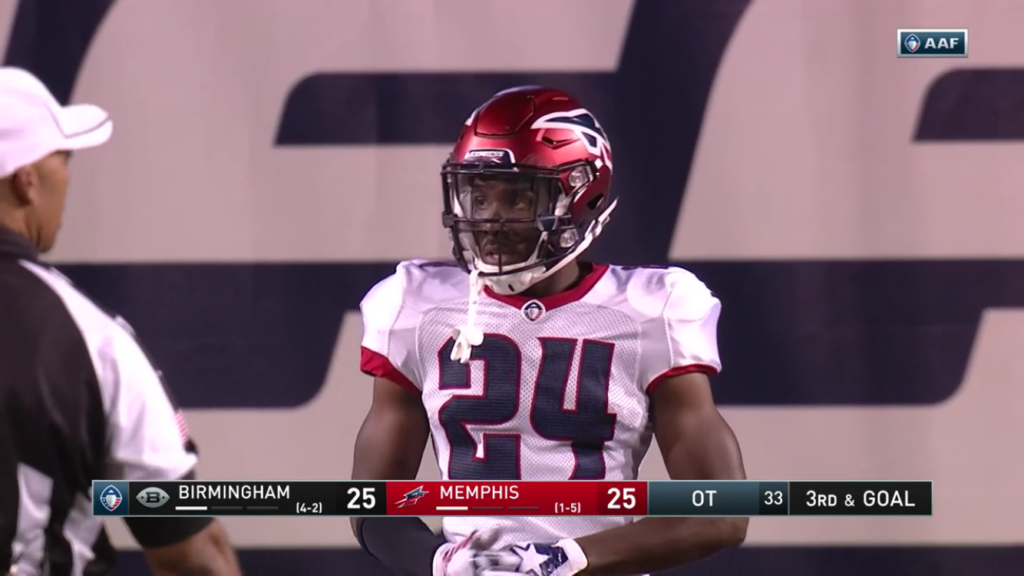
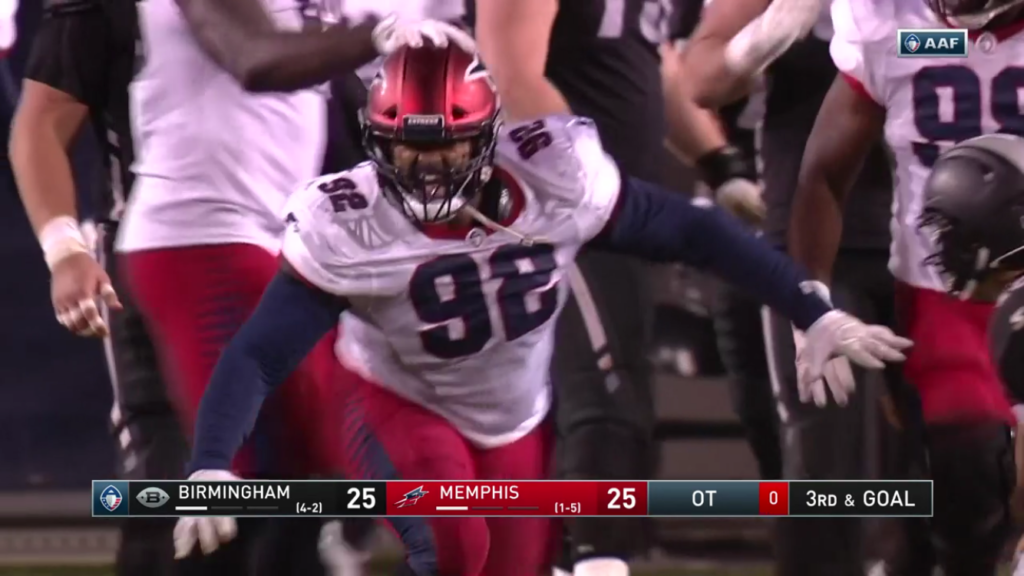
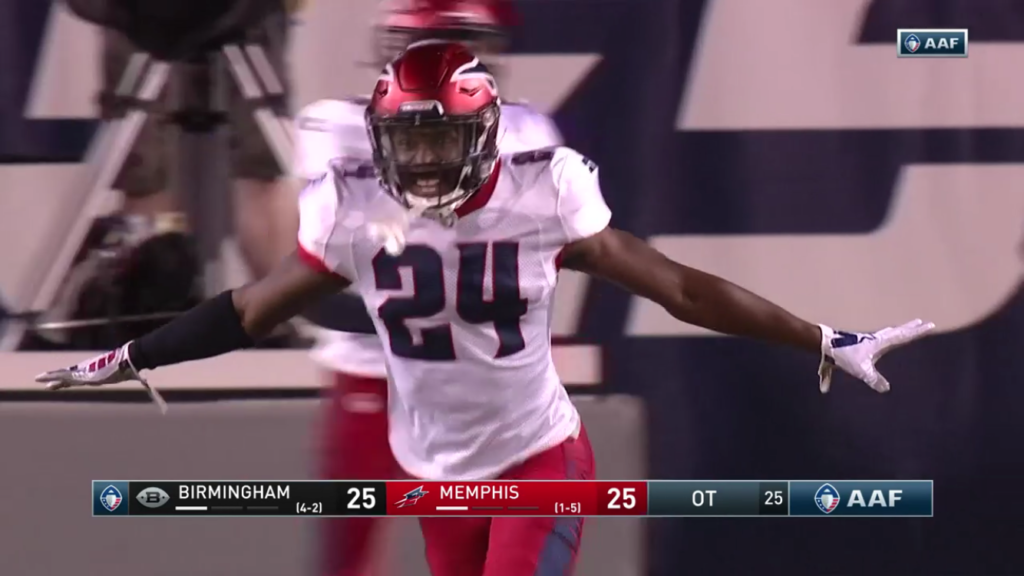
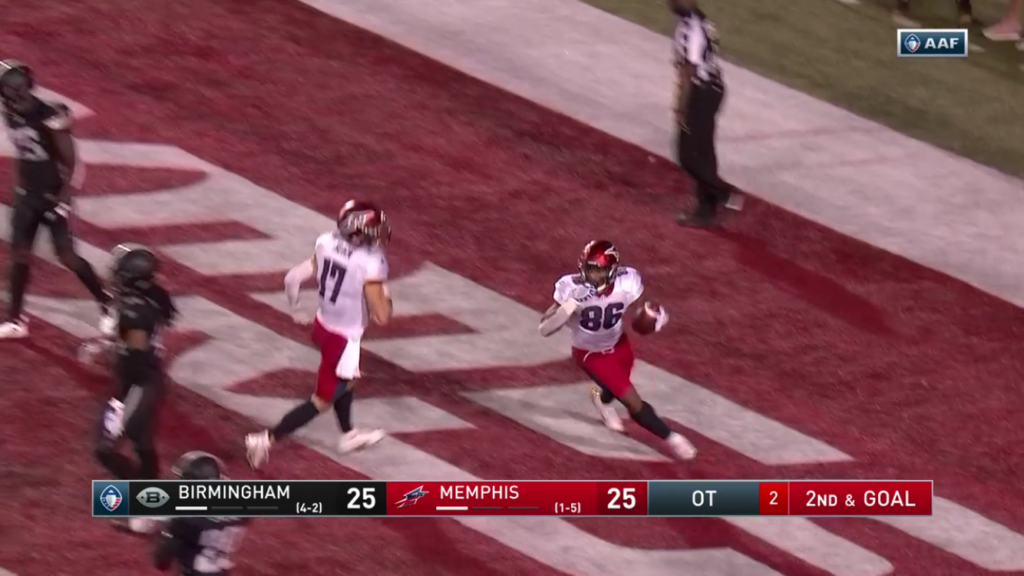
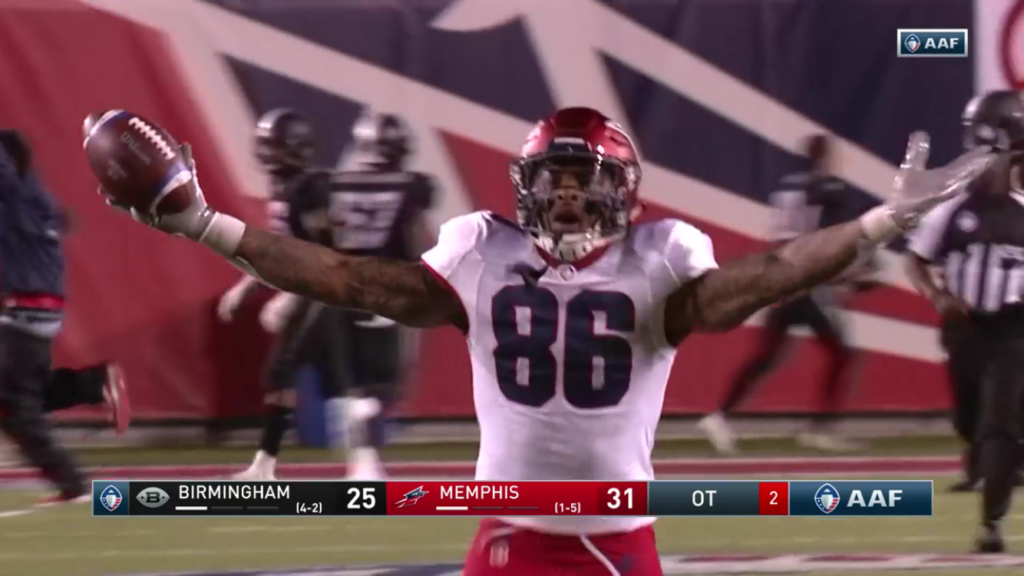
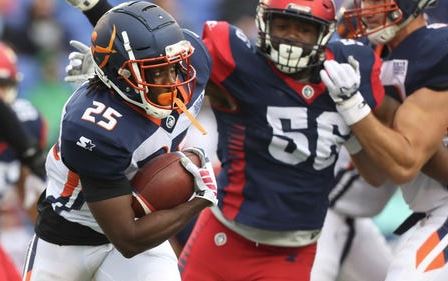
| WEEK | Q1 | Q2 | Q3 | Q4 | F |
| MEM | 0 | 9 | 14 | 8 | 31 |
| ORL | 3 | 11 | 8 | 12 | 34 |
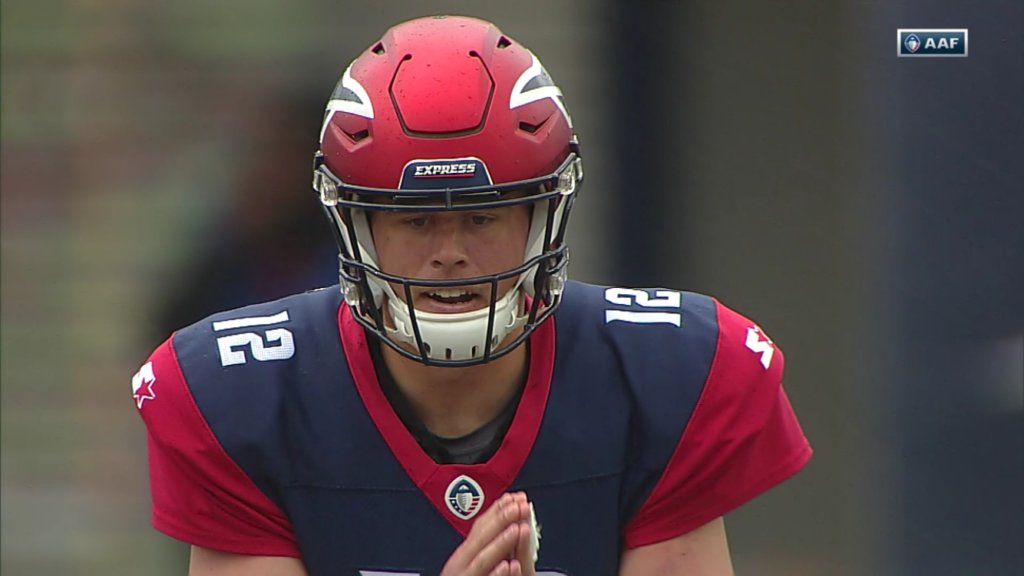
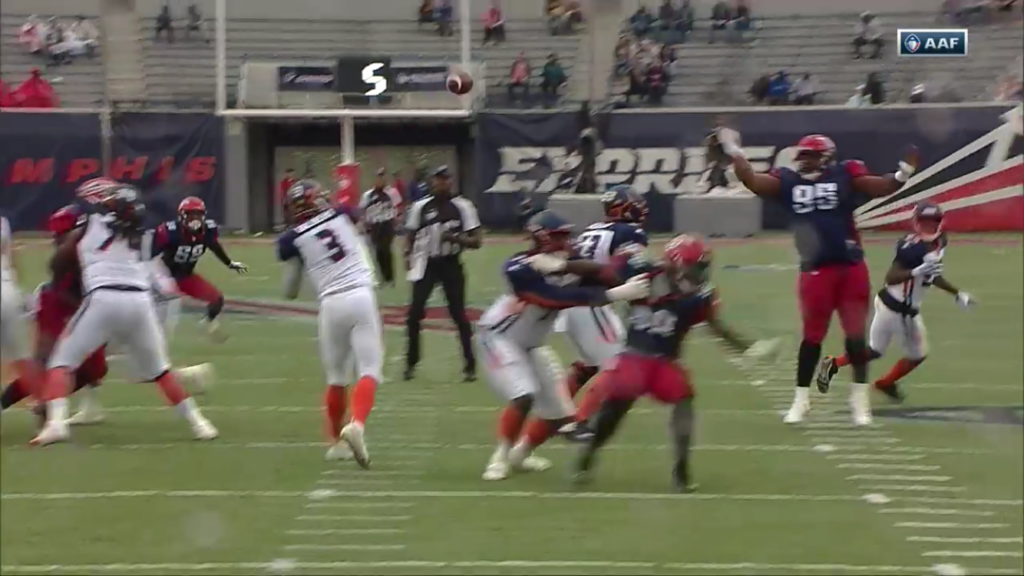
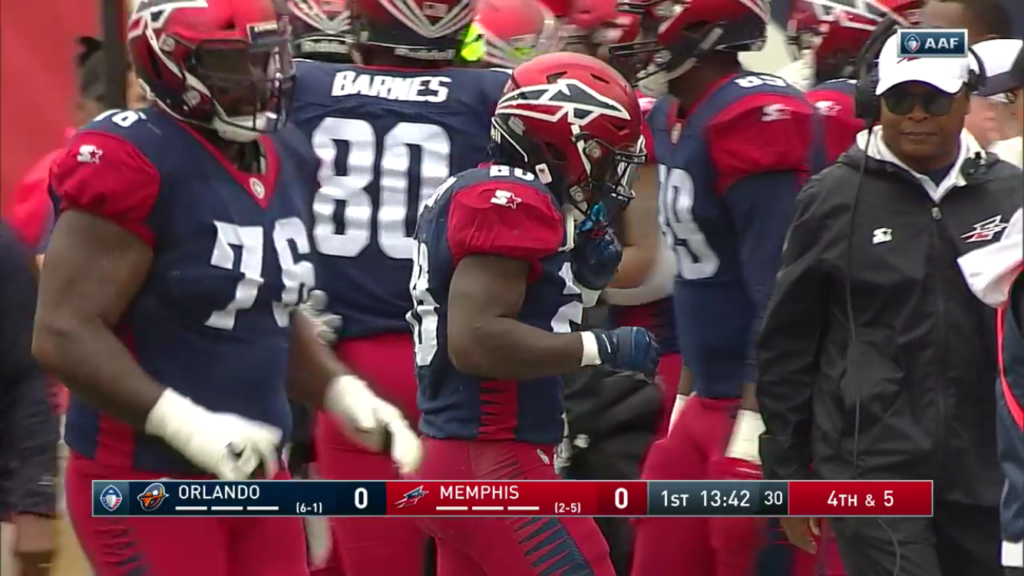
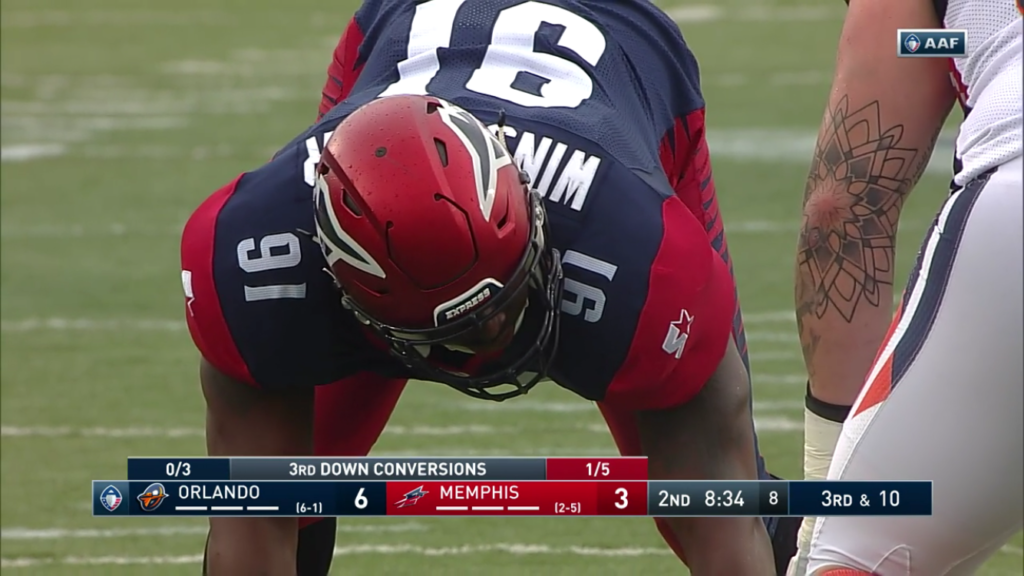
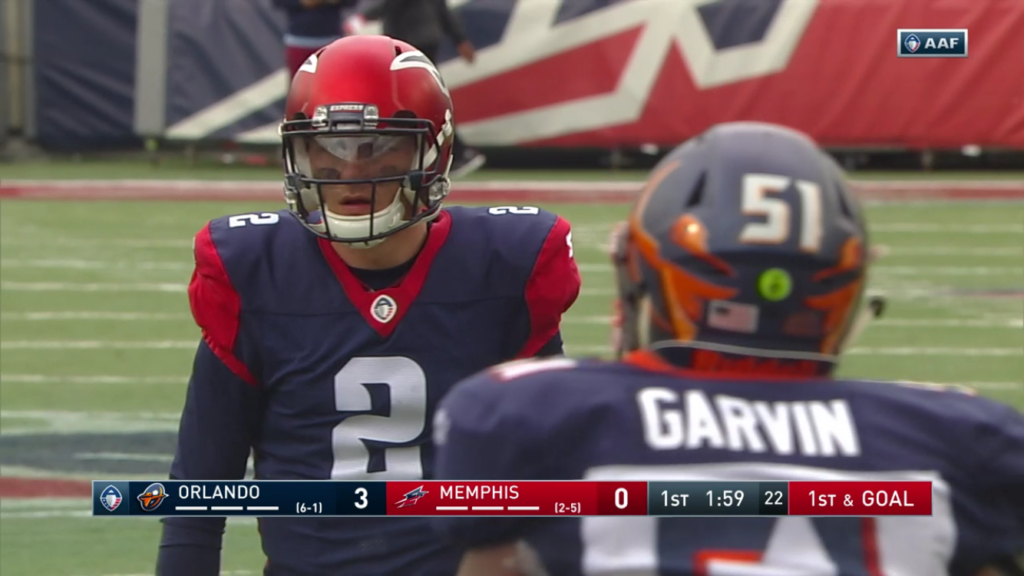
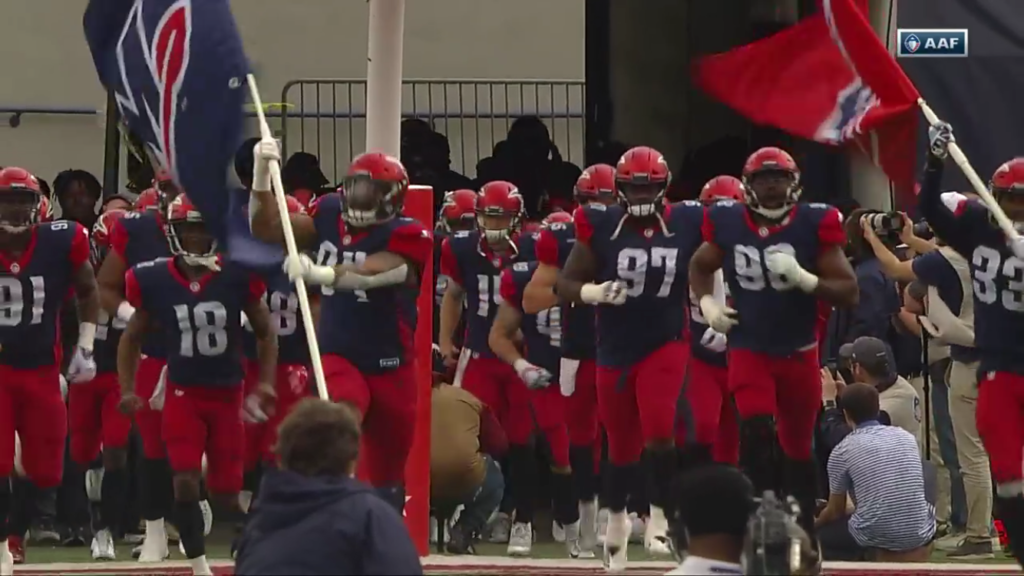
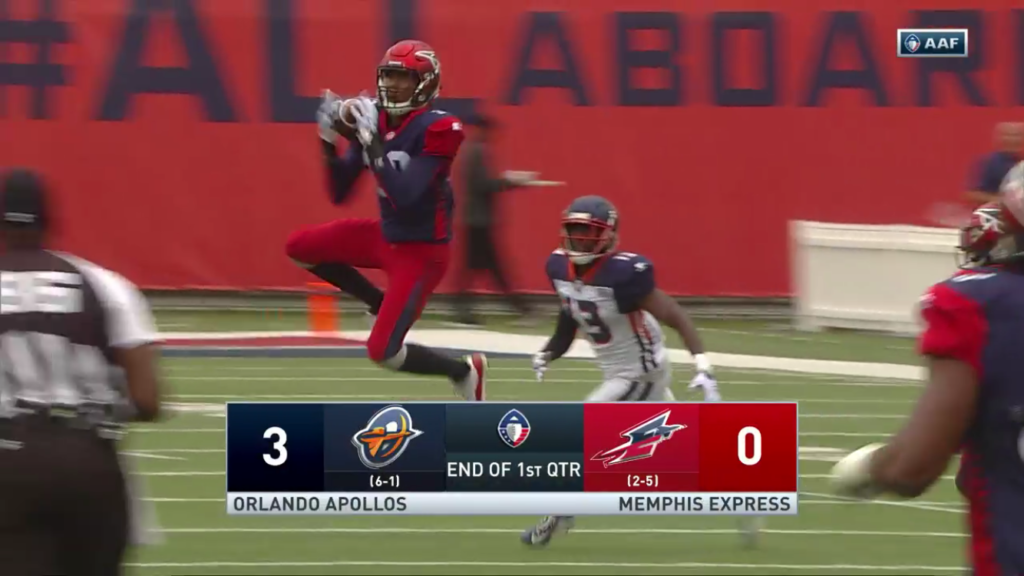
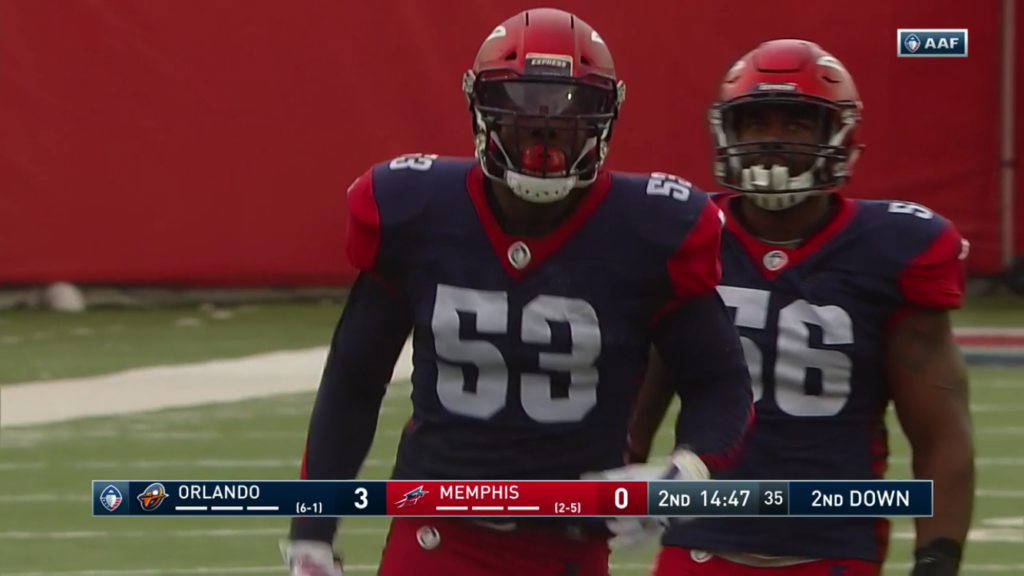
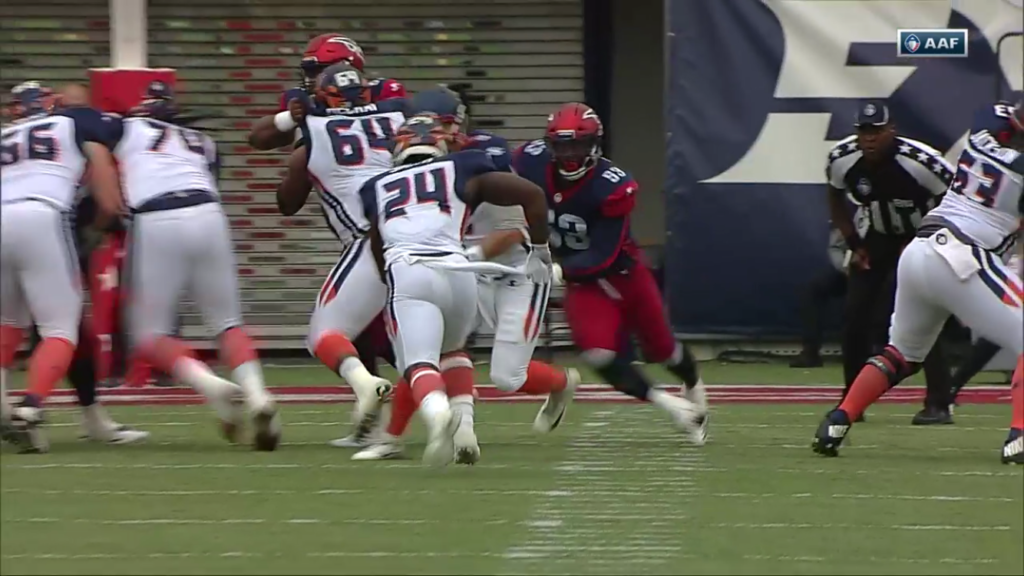
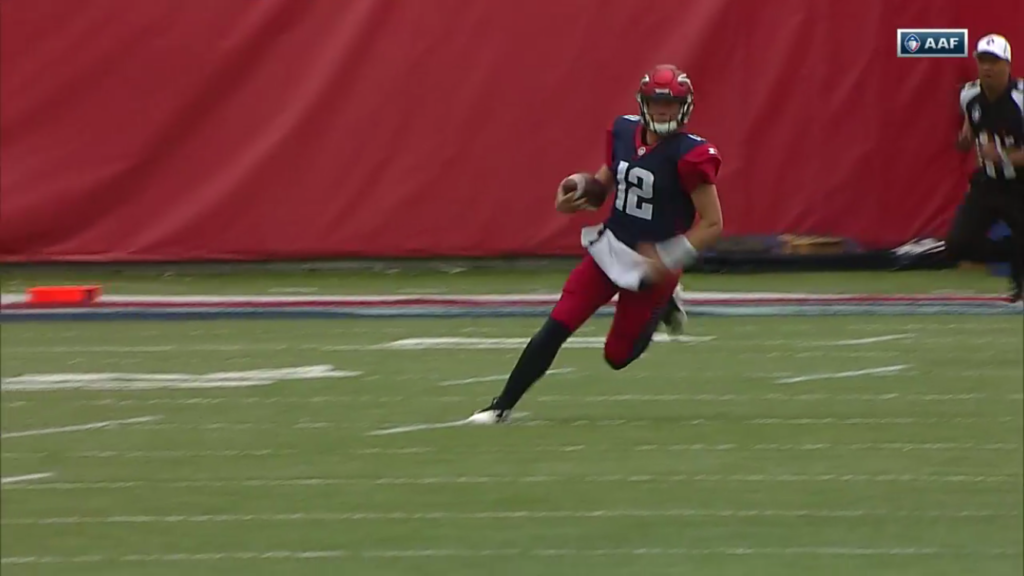
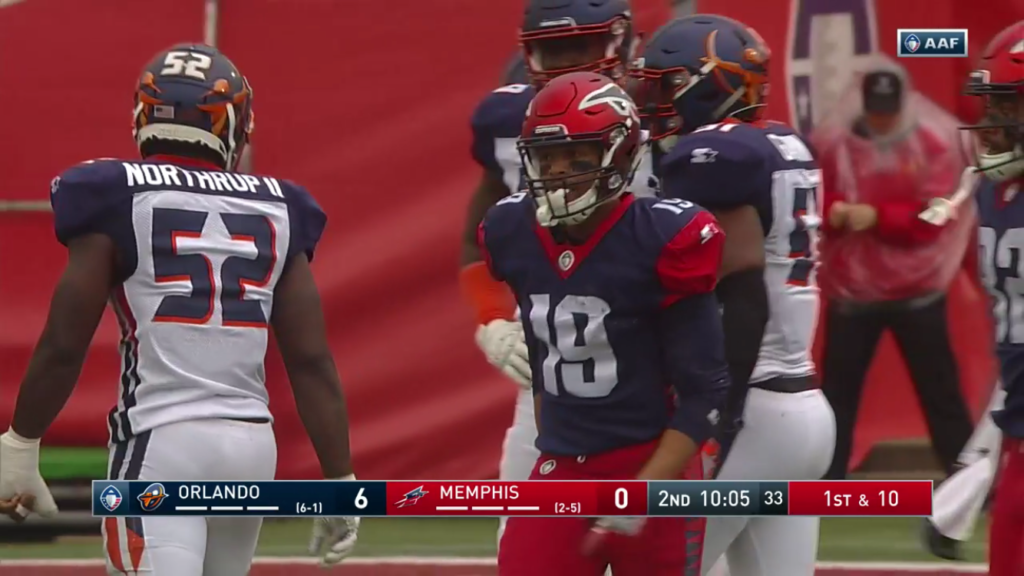
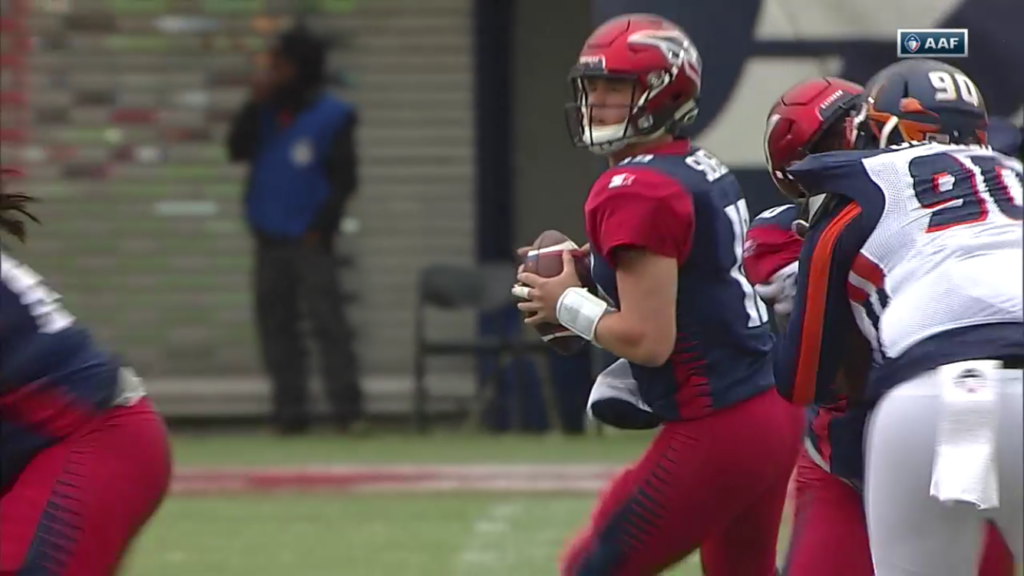
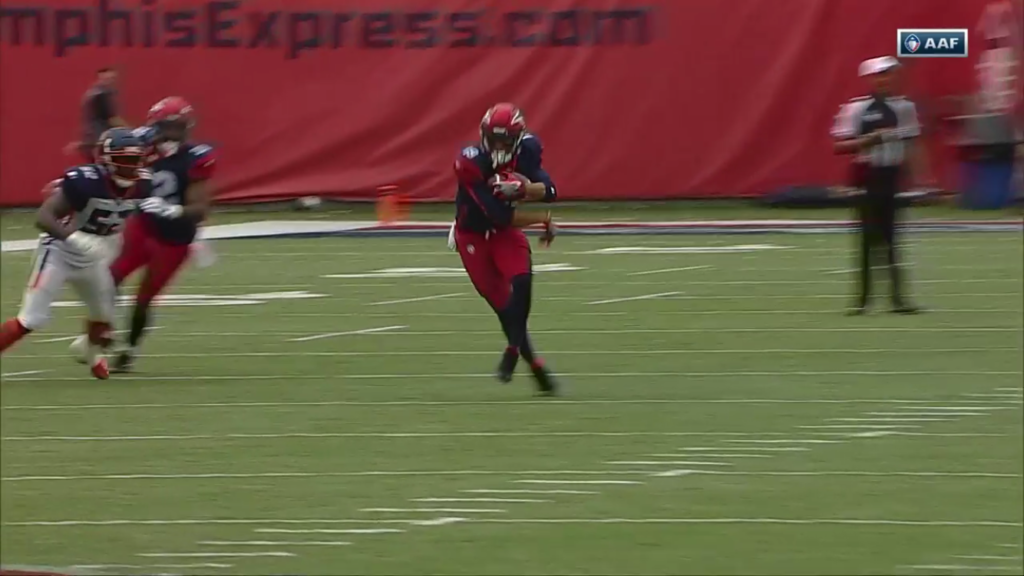
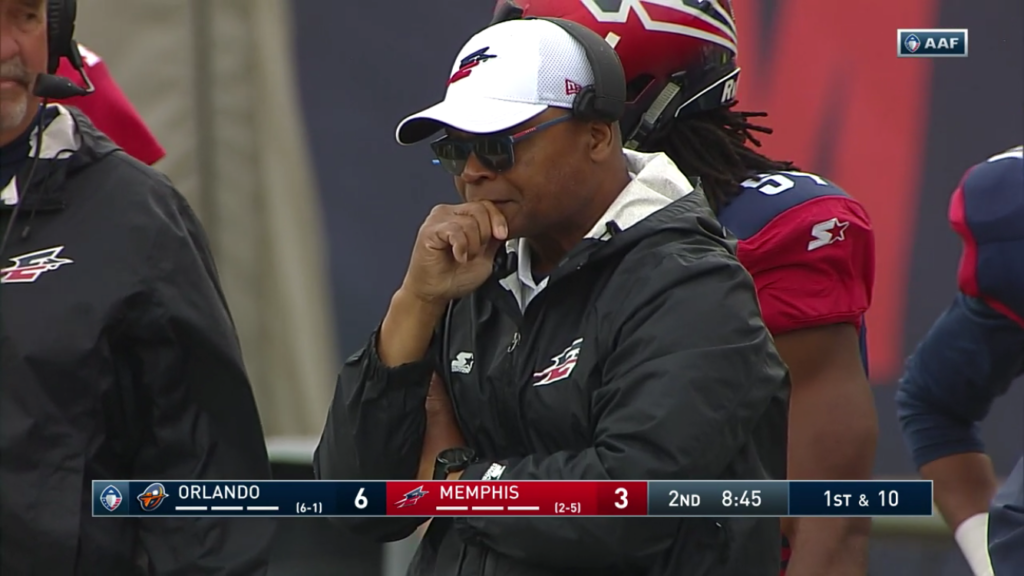
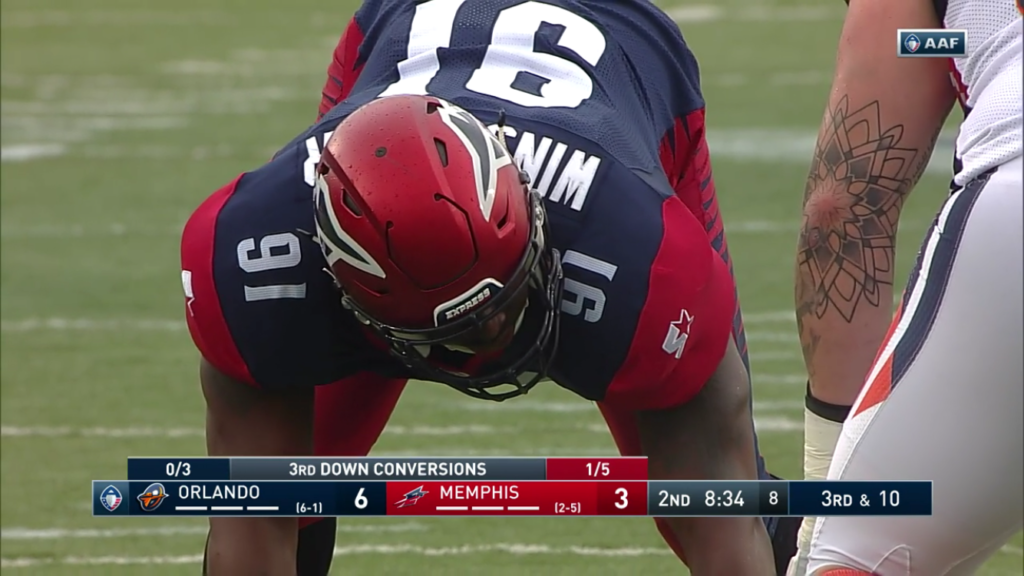
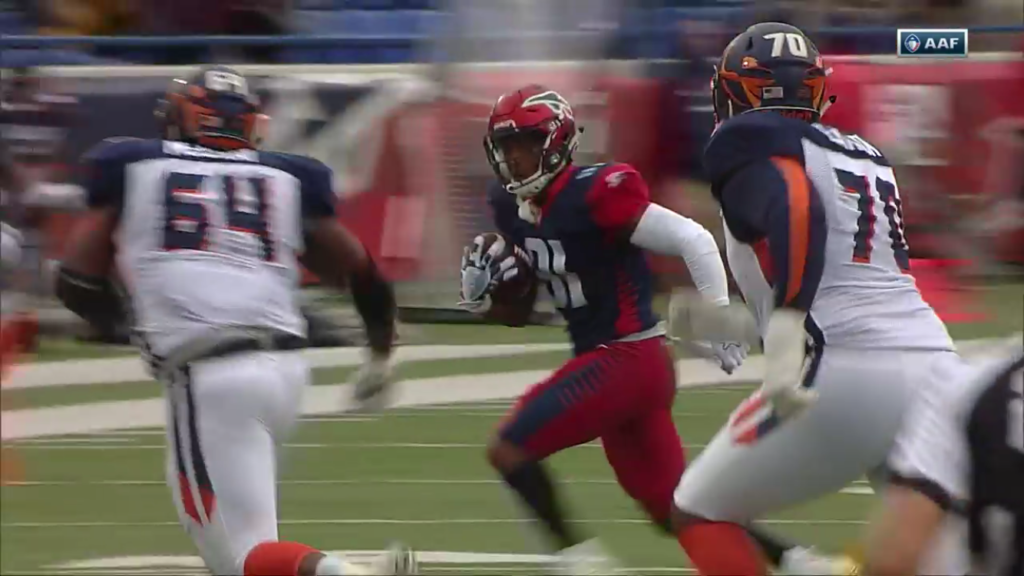
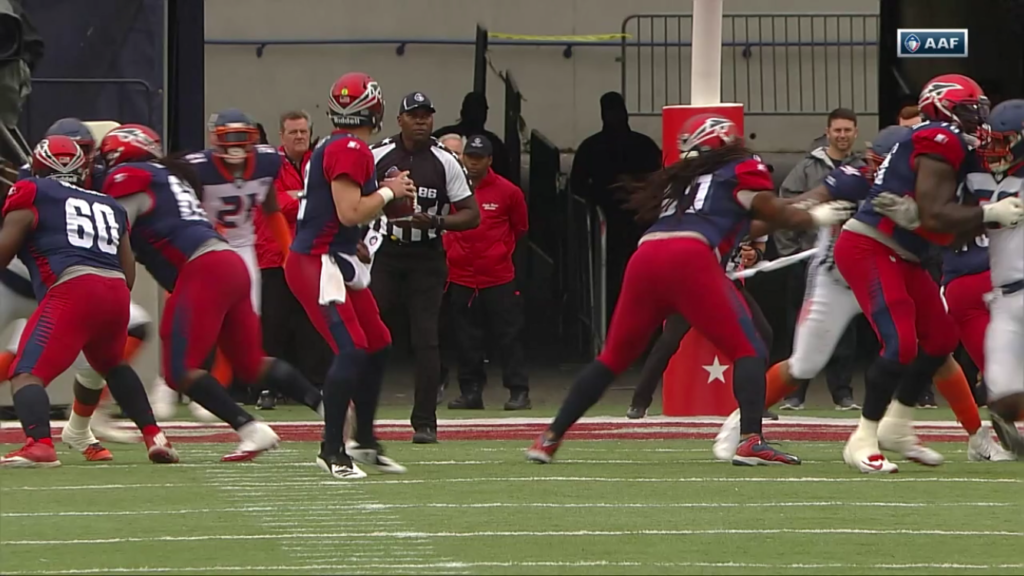
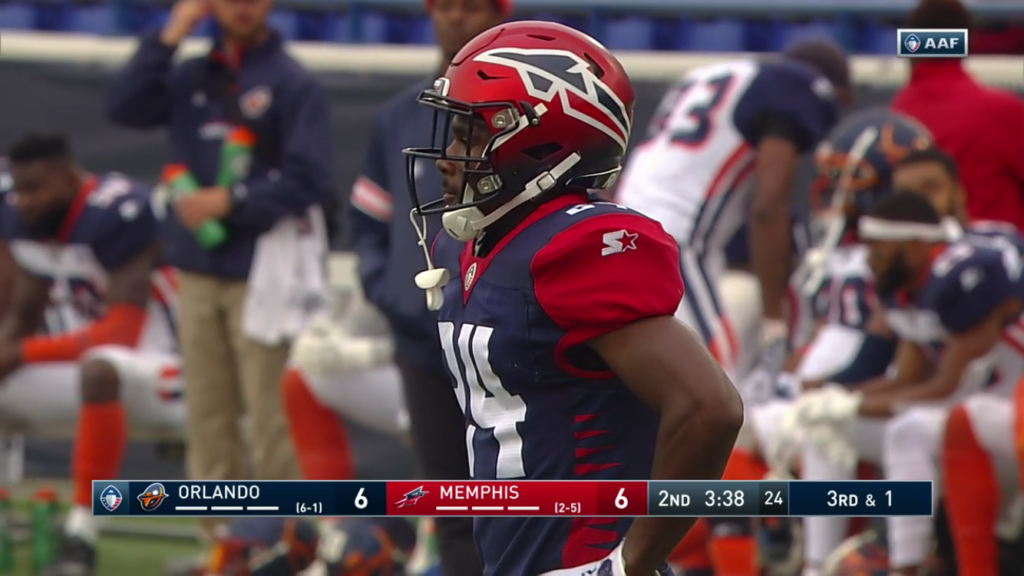
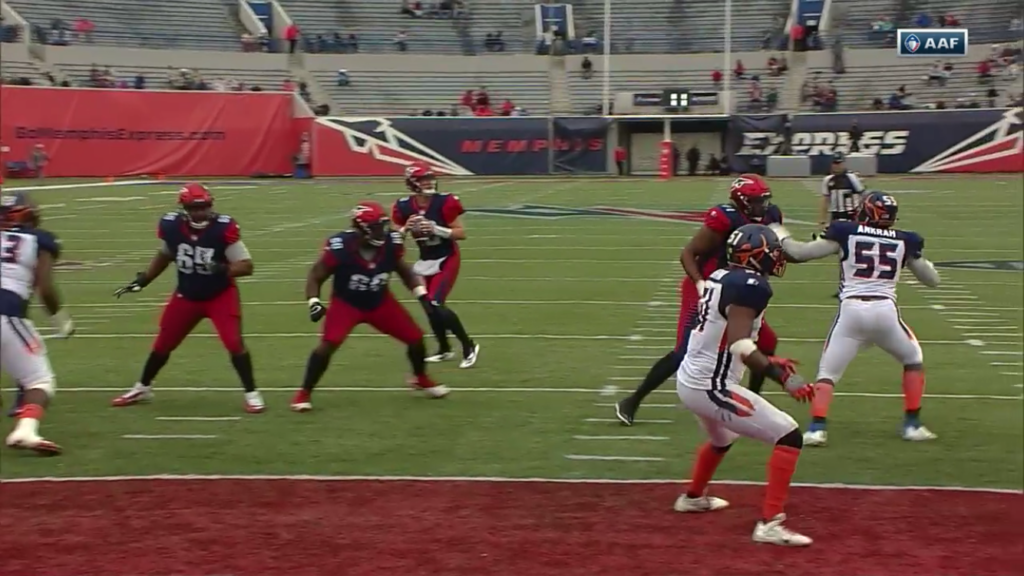
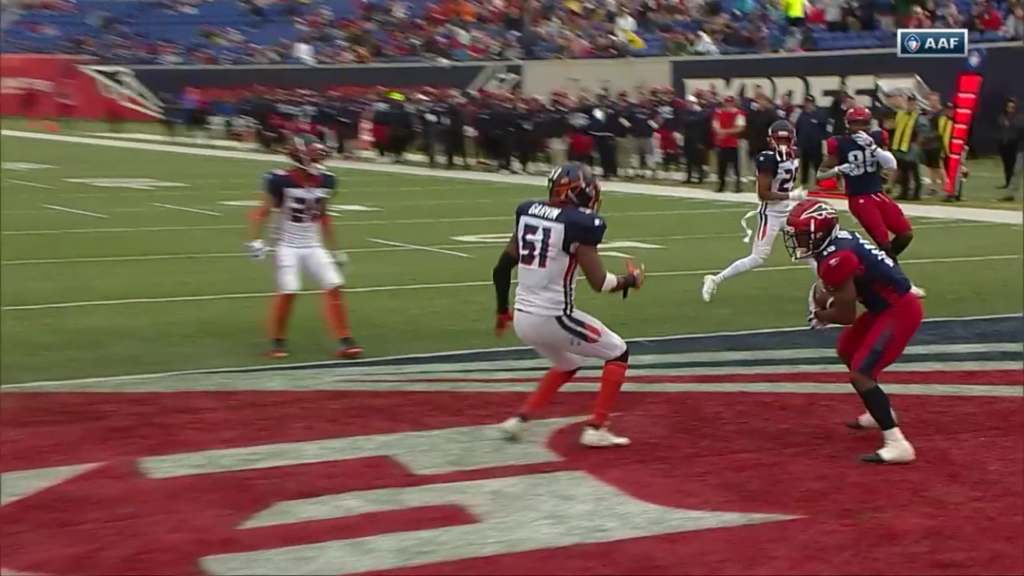
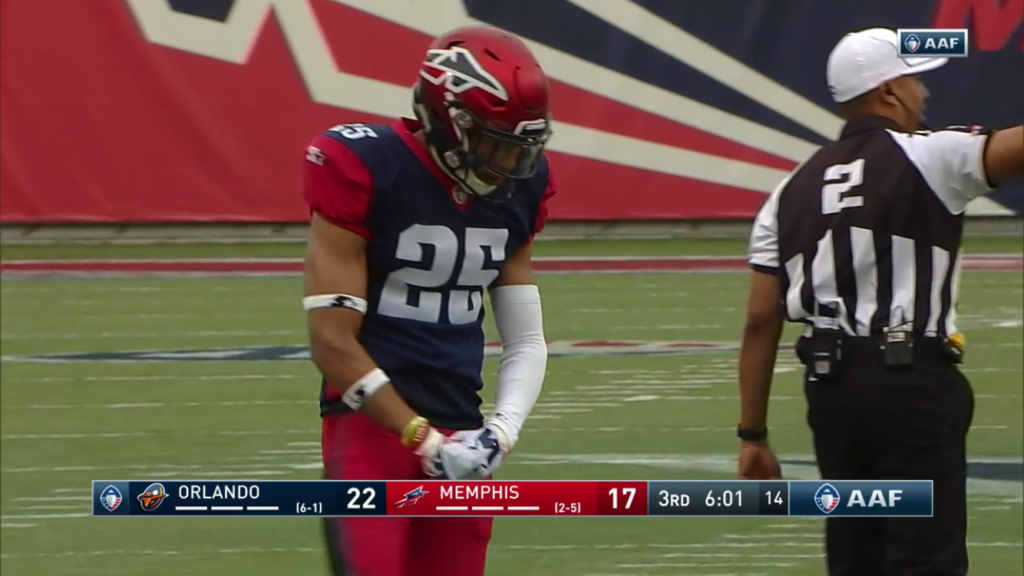
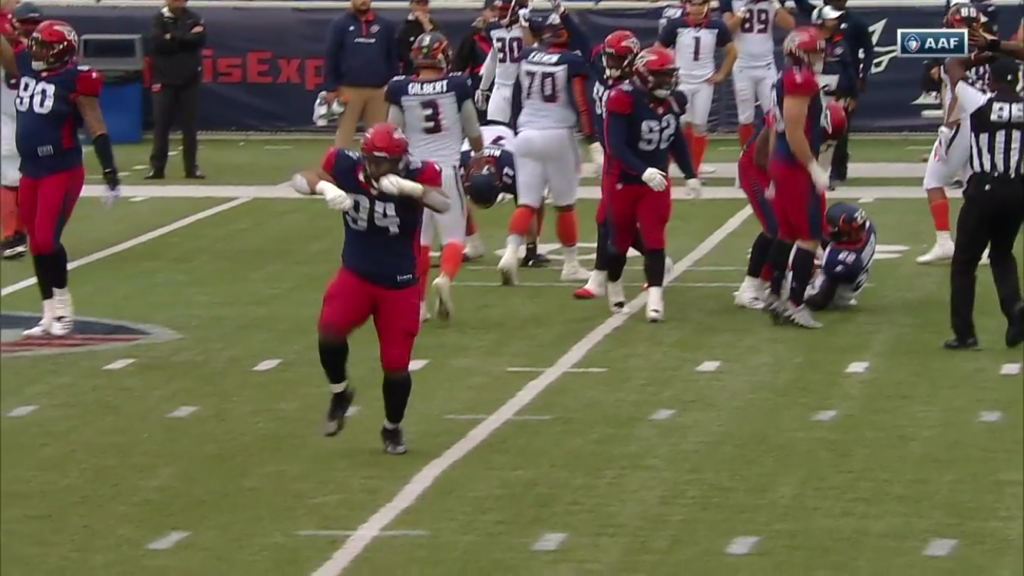
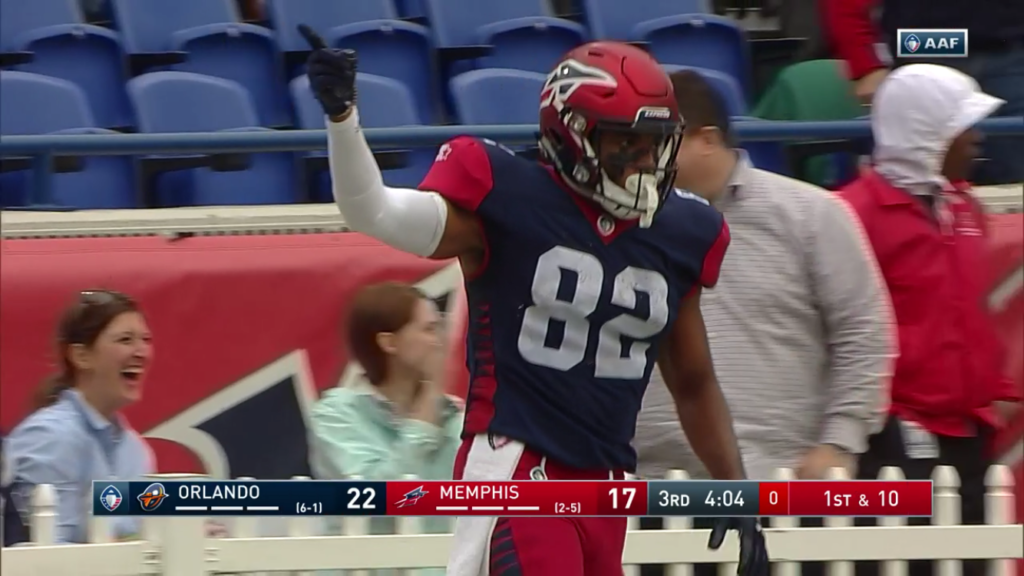
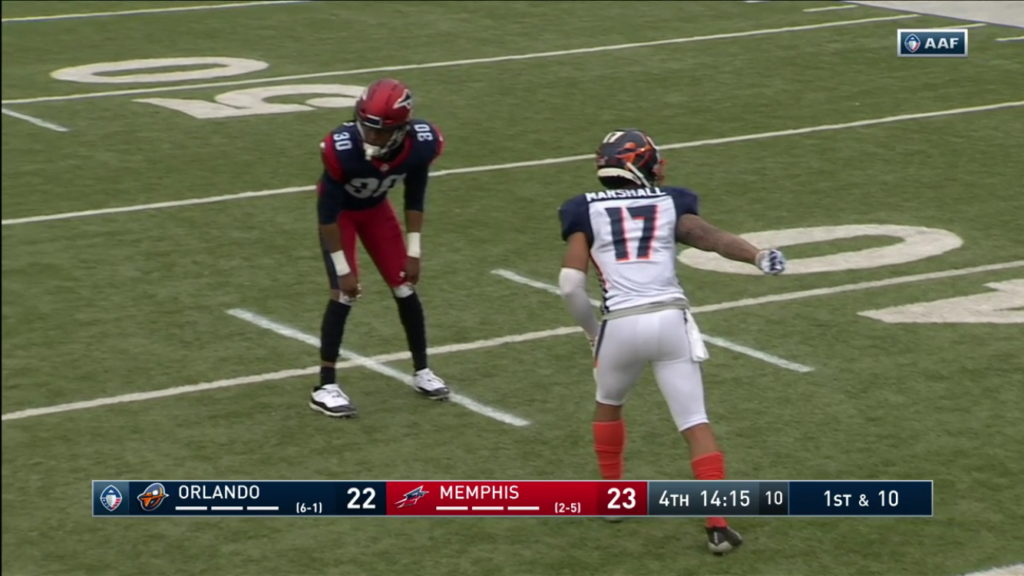

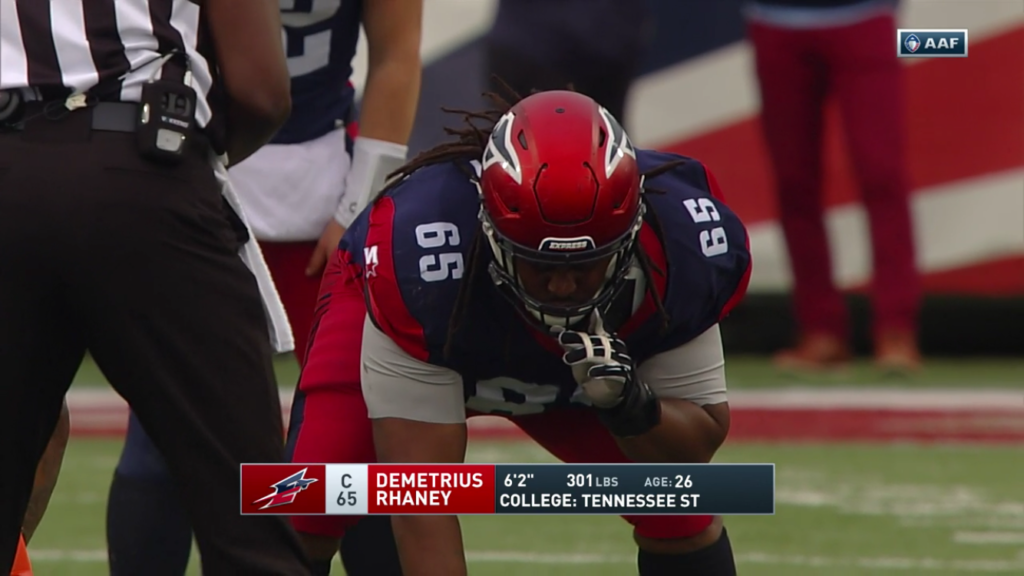
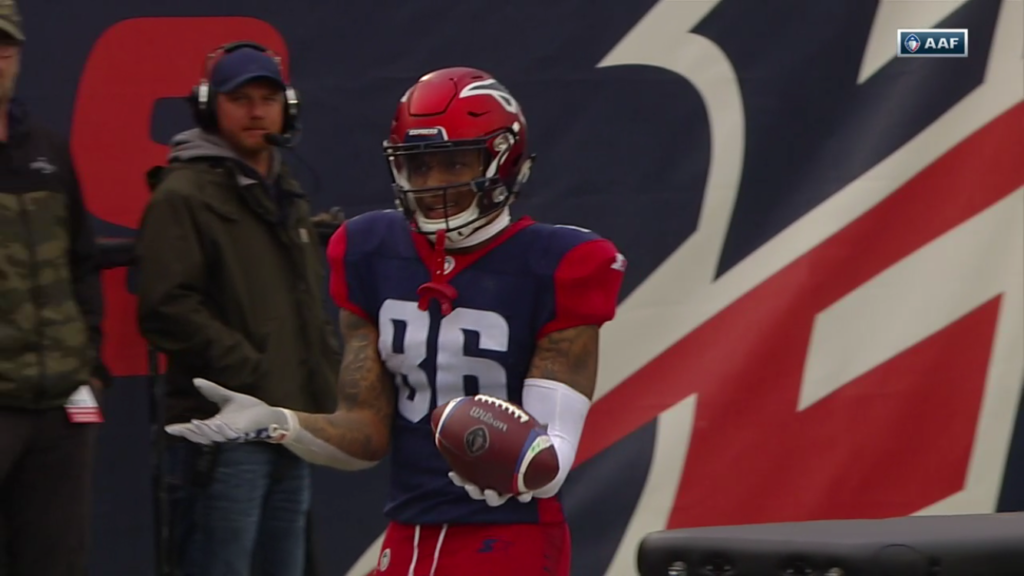
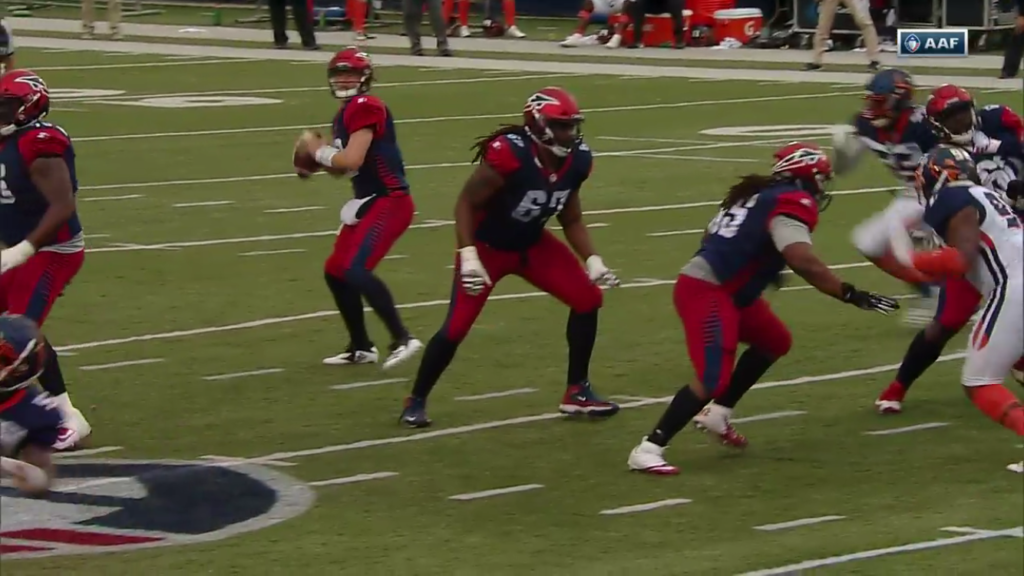
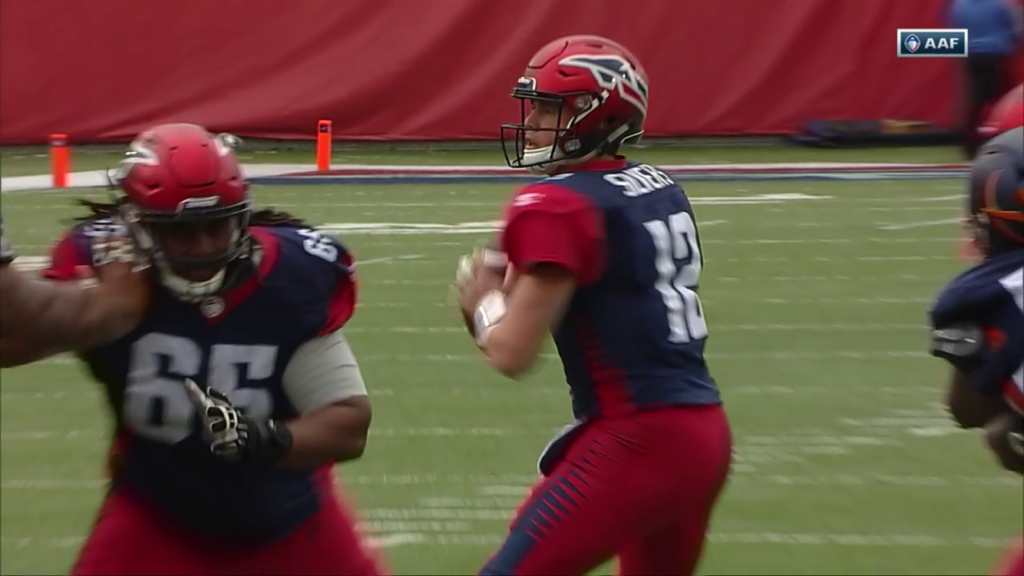
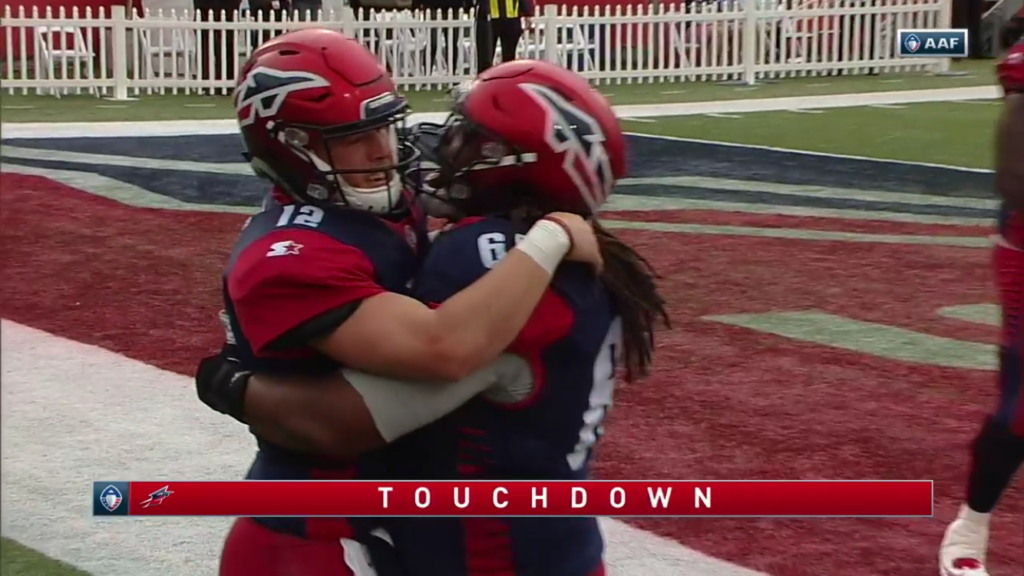
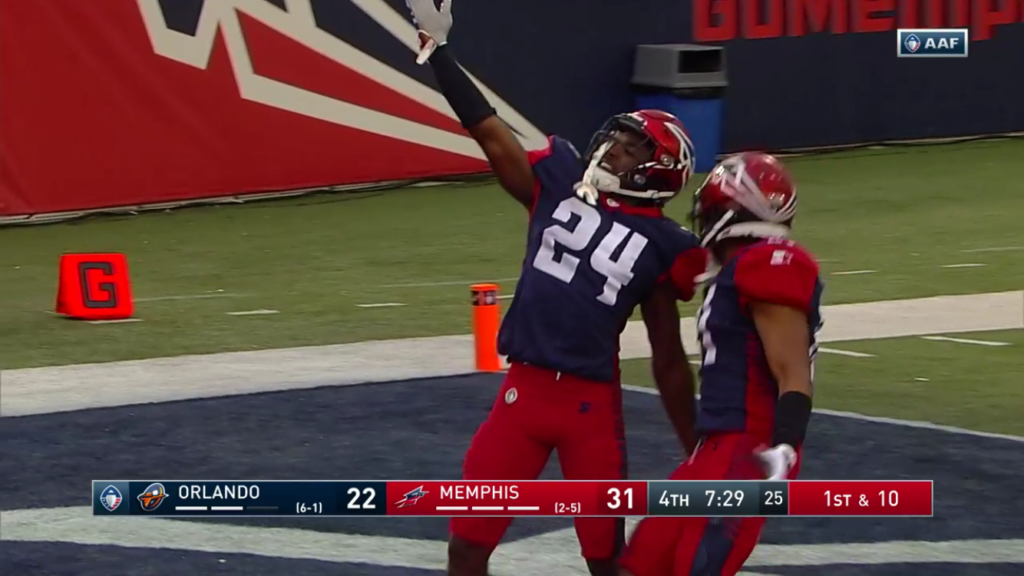
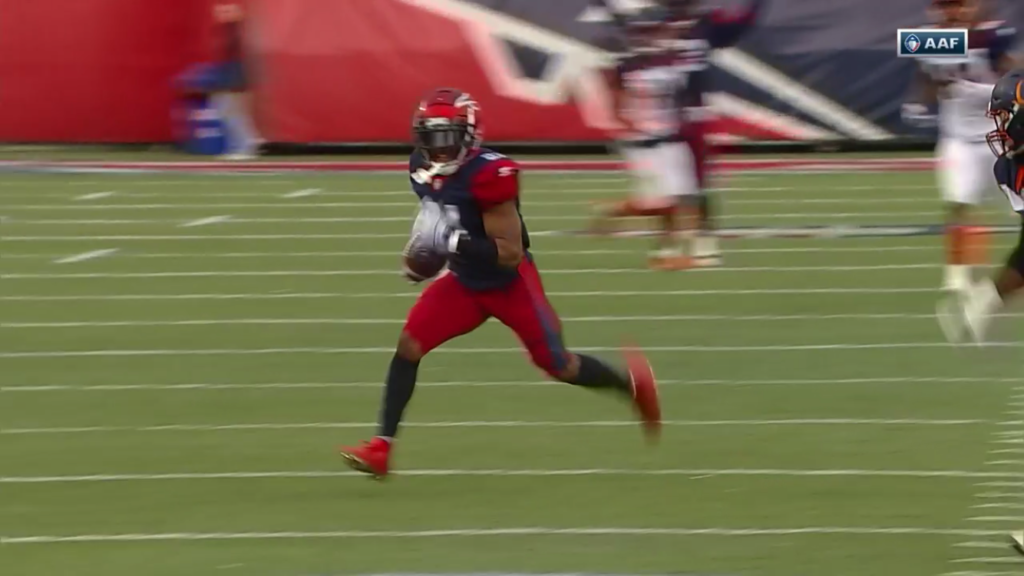
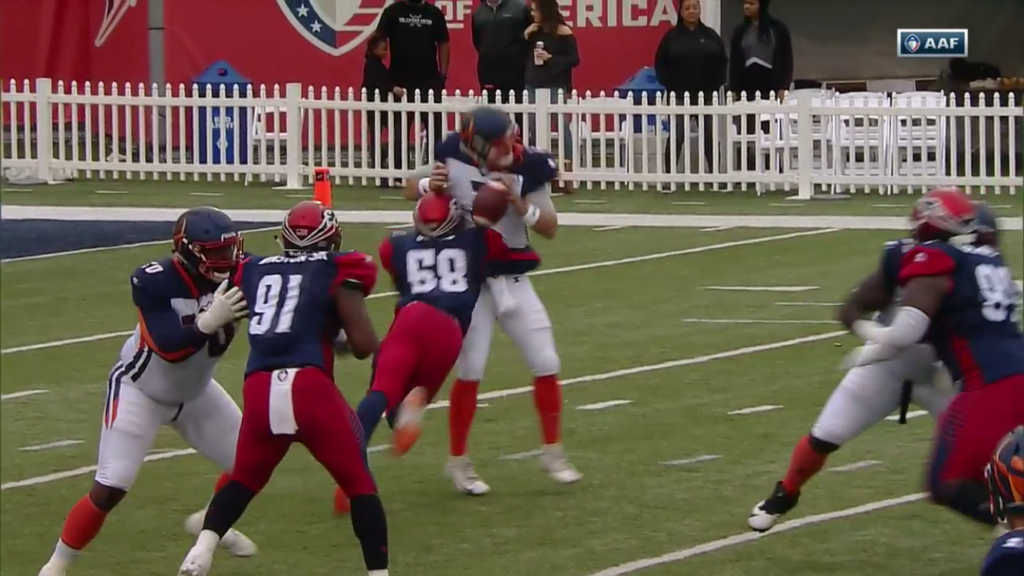
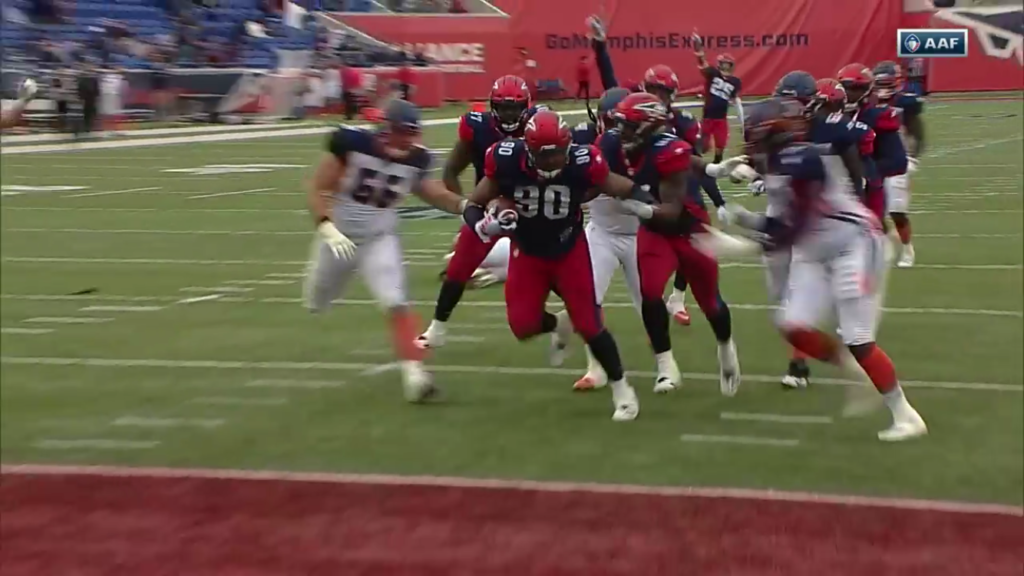
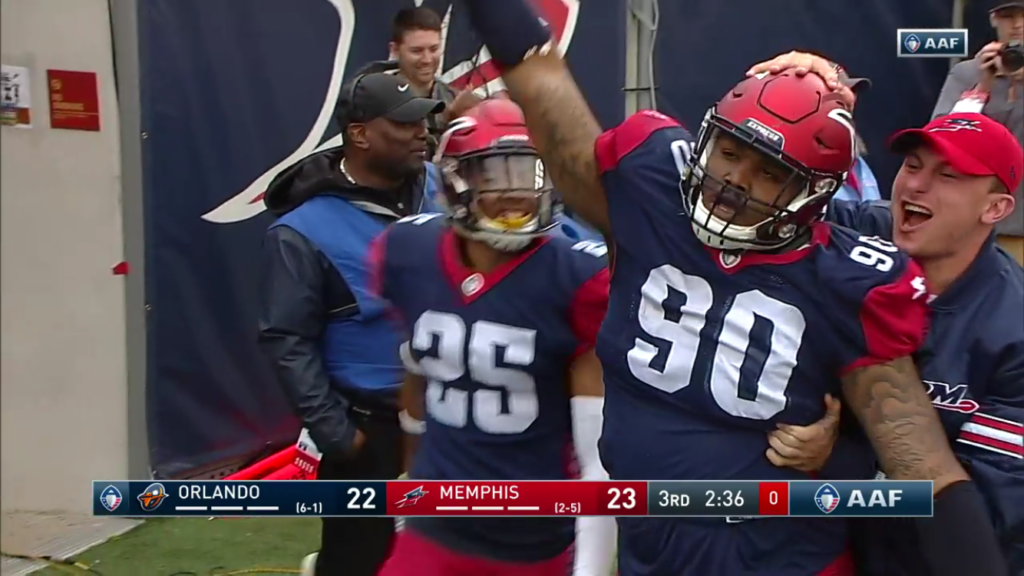
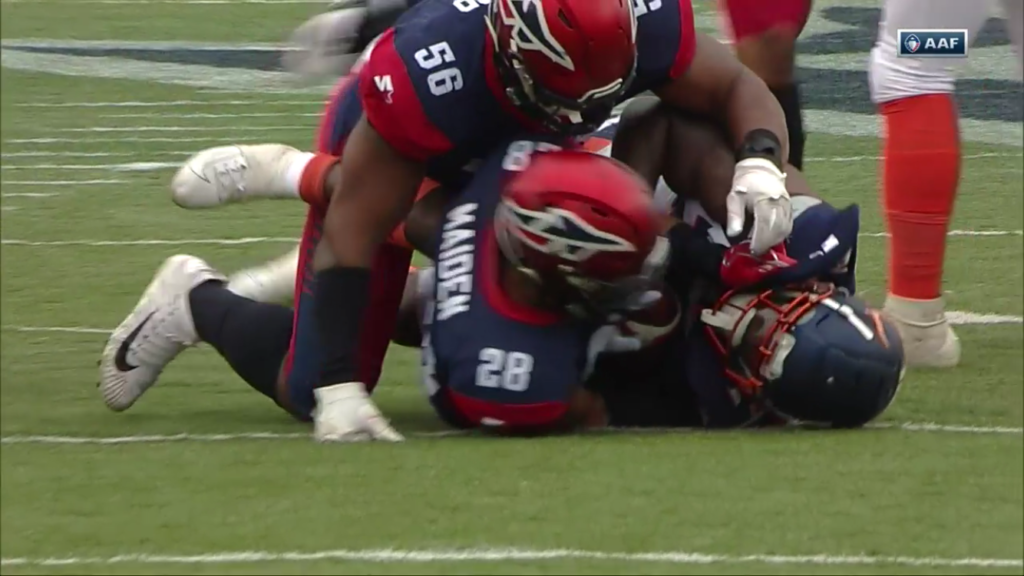
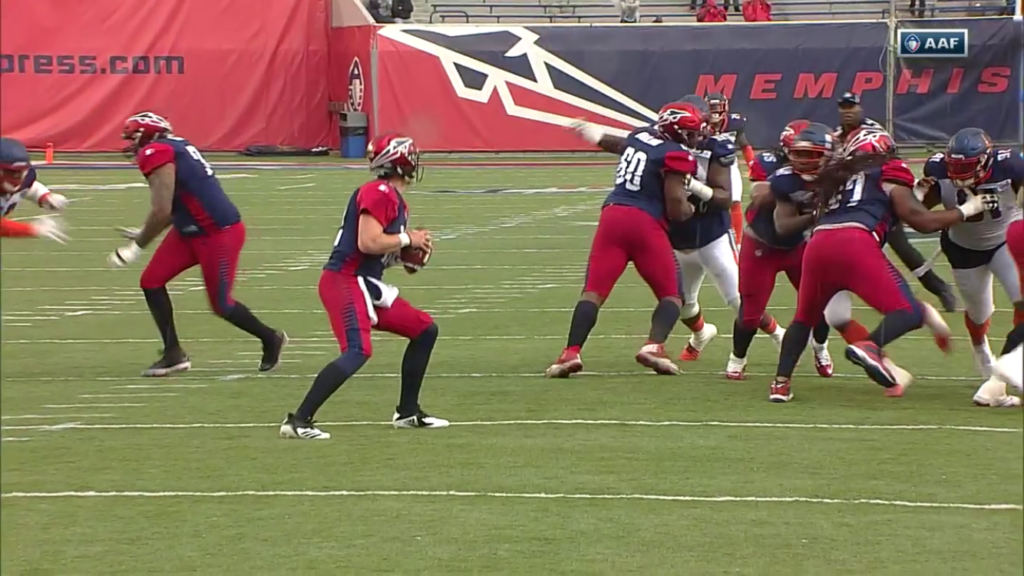
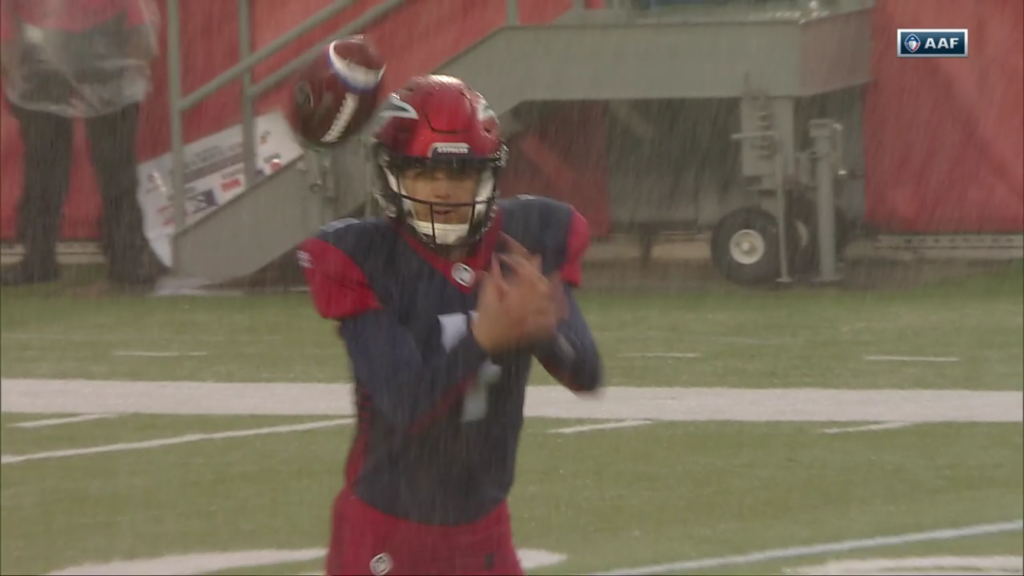
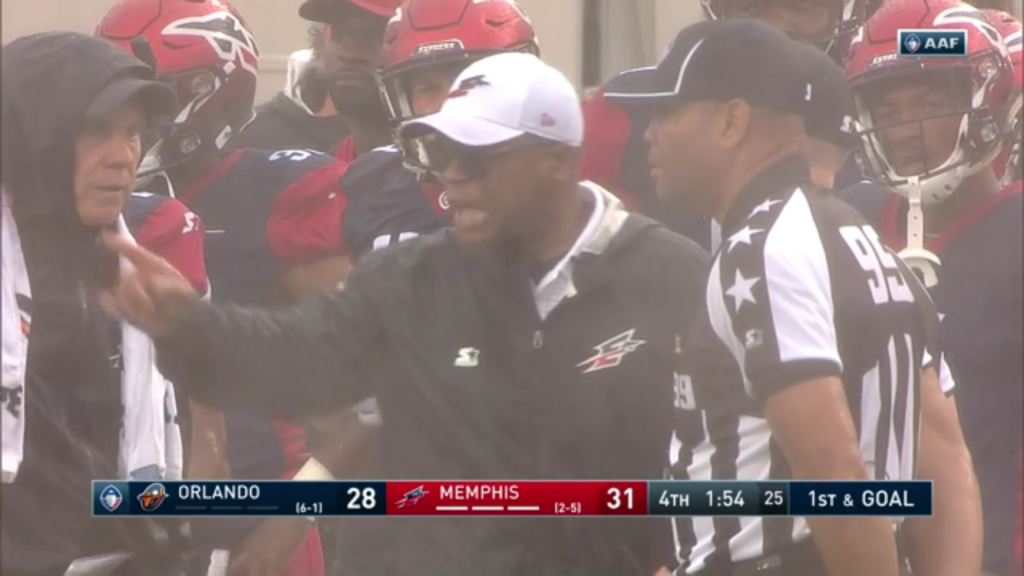
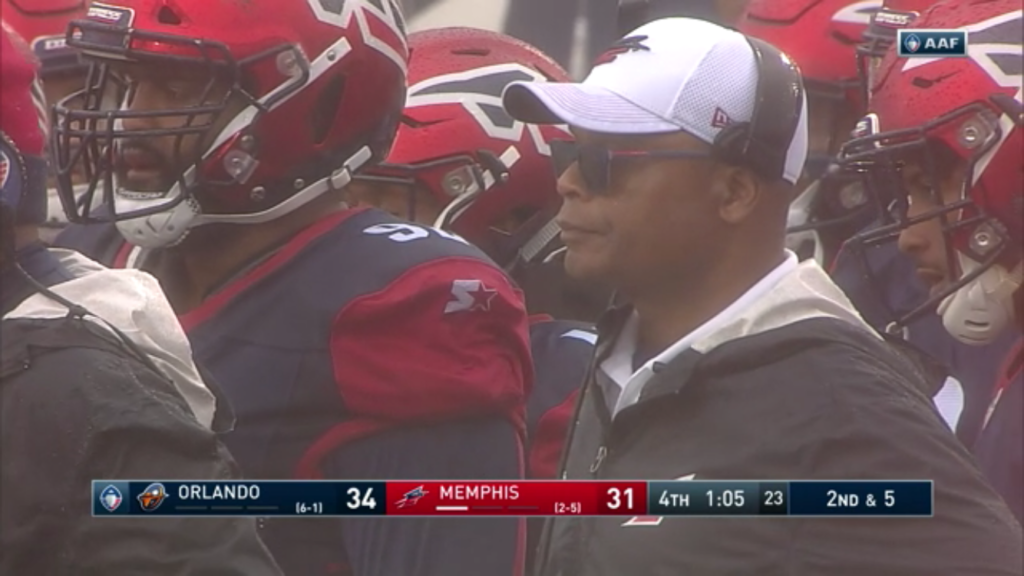
NOTES:
During the first contest, Christian Hackenberg showed us why all players should not necessarily be miced up as he had some amazing profanity laced tirades.
Zac Stacy notched the league’s first 100 yard rushing game in week 2 against the Arizona Hotshots.
Johnny Manziel mania gripped the AAF after Week 5, as the league tried to figure out what to do with the former Heisman Winner. After his regional team that controlled his rights- The Commanders- opted not to sign him, Memphis got first dibs, and immediately added him to their roster.
The Express were the most undisciplined team in the AAF finishing with 75 penalties for 620 yards.
The Express’ record is very misleading, as they were 2-4 in games decided by 6 points or less.
Memphis was 0-4 on the road with a tough match up in San Antonio coming up the following week. The Express were competitive at home posting a 2-2 record.
The Express promotional item was a foam airplane.
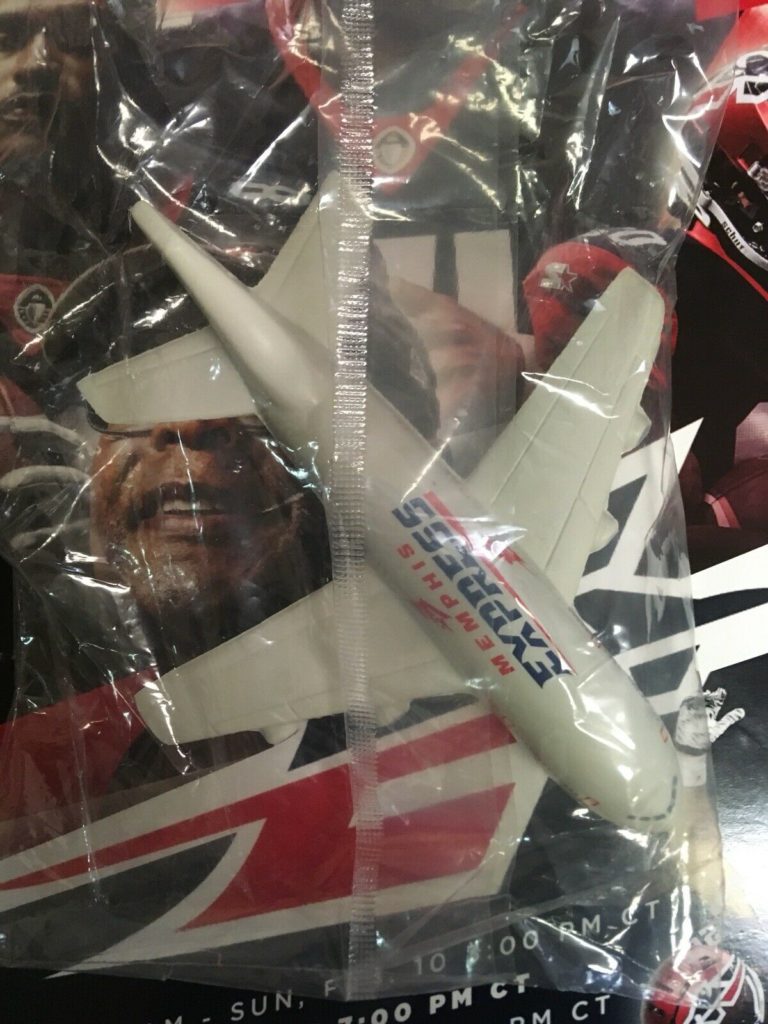
During the bankruptcy disclosure it was revealed that perhaps the Express attendance numbers were inflated- so the above numbers given could be inaccurate.
Before the league shut down, Memphis added to the active roster: DL Anthony Johnson, OL Anthony Morris, RB Jarvion Franklin and LB Taiwan Jones.
The next game for the Express was at San Antonio. I had my season tickets ready to go in the app, and was looking forward to greeting Mike and his team in the endzone.
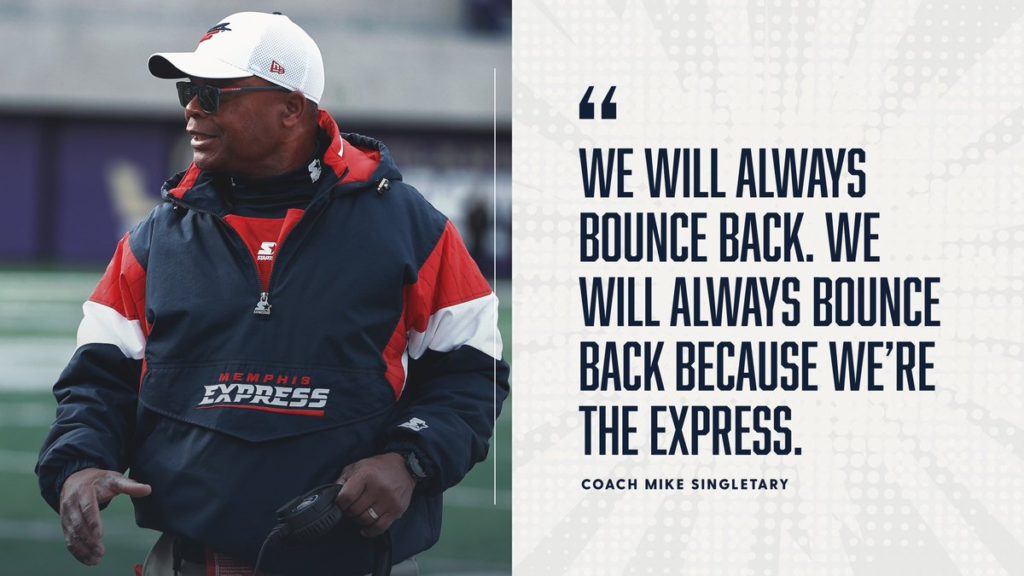
FINAL THOUGHTS:
What if the Express came out of the gate with Brandon Silvers at QB? It wasn’t the most sexy pick, but by the end of the season, he was the right player at the position. He really made the Express more competitive from top down especially when he was on the same page with Reece Horn. They managed to beat Birmingham and gave Orlando a run for its money. The Express never stopped churning their roster over to find the right guys from QB to Special teams- to even their coaching staff (!!), and I think the team was on the right path. It just took a long time to get there.
Although they were out of the playoff race, Memphis faced San Antonio- and Atlanta. I doubt seriously that the Express would beat SA, but Atlanta, that was doable to finish 3-7 on the year- and I had to double check that because Memphis’ played some good games. They just couldn’t finish them out.
NOTABLE PLAYERS:
HC- MIKE SINGLETARY
OTHER COACHES- PEPPER JOHNSON, BOBBY BLIZZARD
QB- CHRISTIAN HACKENBERG, ZACH METTENBERGER, BRANDON SILVERS
RB- RAJION NEAL, ZAC STACY, KENNY HILLIARD
WR- KAYUME ROSS, PIG HOWARD, FABIAN GUERRA, REECE HORN
DL- LATARIUS BRADY
LB- DAVIS TULL
CB- CHANNING STRIBLING, CHARLES JAMES
K- JOSH JASPER
P- BRAD WING
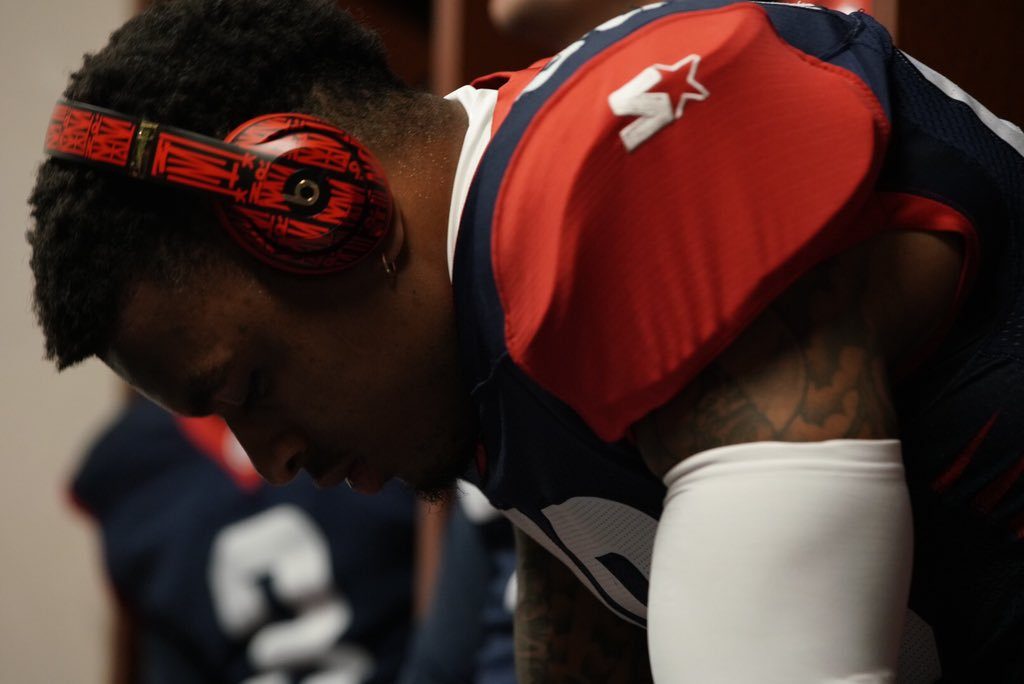
AVAILABLE CUSTOM CARDS:
Hello AAF family!
If you loved the AAF as much as I did, do I have a special treat for you. There were many great players who did not see a card produced of them. Welcome! This is my love letter to them as a fan and I expect this section to be a ‘living’ card set. Check back from time to time to see updated names, and check in with me to see the cards I’ve created.
If you’d like to see a copy of any of these players cards, have a special request for me, or would like me to produce a physical keepsake copy, please contact me on Twitter: leebo@mindfinger

WR- GERRARD SHEPPARD, REECE HORN
DL- ANTHONY JOHNSON, LATARIUS BRADY
LB- D’MARQUIS GATES
CB- CHARLES JAMES II

